Table of Content
Athens | Introduction
Athens is the capital of Greece and one of the oldest cities in the world. This world-renowned ancient city has a history of over three thousand years and was a powerful city-state in antiquity. It also gave birth to many Western philosophers and boasts a rich historical heritage. When you visit Athens, you must not miss the ancient Greek period ruins in the city center.
The itinerary in Athens can be quite flexible. It's generally recommended to plan around three days for exploring Athens. However, if you're open to a compact schedule, most of Athens' major attractions are concentrated in the city center near the Acropolis, and you can complete the key itinerary in one day.
Athens | Transportation
Athens offers a diverse and convenient transportation system. Self-guided travelers can use public transportation for both airport transfers and getting around the city. Buses are the most economical option, while the metro is slightly more expensive but also relatively convenient. Of course, taking a taxi or using Uber is also a common choice. If you have limited time, you may also consider booking half-day or full-day guided tours to save on transportation time.
Athens Half Day Tour
Taking Metro in Athens
Taking the Athens Metro is as simple as recognizing the Metro signs and locating a Metro station. After purchasing your ticket, it's important to note that there is a yellow validation machine before entering the station. You should validate your ticket there before proceeding. Typically, most city subway systems, when combined with Google Maps, allow travelers to navigate even if they aren't familiar with the local language. However, in Greece, there might be a slight confusion due to the differences between Greek letters on Google Maps and those on the subway map. This is mainly because we might not be familiar with the Greek alphabet's uppercase and lowercase characters. If you plan to use the Metro, it's a good idea to download a Greek alphabet reference list beforehand to assist you.
![How to play [Greece] Athens Athens? | Athens Attractions | Athens Day Trip 1 Athens, Athens 1](https://blog.travelhackfun.com/wp-content/uploads/2024/01/Athens-1.jpeg)
Athens | Accommodation
If your primary goal is to explore historical landmarks and museums, staying in the city center or in areas close to the main attractions would be very convenient. For example, accommodations in areas like Plaka, Monastiraki, and Syntagma Square are all very close to the Acropolis and other major tourist attractions.
Looking for your stay in Athens?
Athens | Downtown Attractions
The attractions in the Athens city center are relatively concentrated. If you plan to visit multiple attractions, it's a good idea to consider purchasing combination tickets, as they might offer better value for your money.
Athens Attractions Combo Tickets
Acropolis
The Acropolis of Athens, situated on an ancient rocky outcrop in the city center, is a symbol of ancient Greek civilization and one of the most famous landmarks in the world's cultural heritage. The history of the Acropolis dates back to the 5th century BC, a period known as the pinnacle of the Classical era.
Tickets to Acropolis
To reach the Acropolis, you can take the red line of the Metro to the Akropoli station. Once you exit the station, simply follow the clearly marked signs, and it's about a ten-minute walk to the Acropolis. If you need to transfer lines, you can typically take the green line to the Syntagma station for connections.
After exiting the Metro station, turn left and walk for a short while, and you will soon see the Acropolis on the hill. The Acropolis is surrounded by cliffs on three sides, and you can only access it on the western side by walking up.
![How to play [Greece] Athens Athens? | Athens Attractions | Athens Day Trips 2 Athens, Athens 2](https://blog.travelhackfun.com/wp-content/uploads/2024/01/Athens-49.jpeg)
Adicus Music Hall
When coming from the direction of the Metro station, you pass by the southern side of the Acropolis and can see the exterior walls of the Adicus Music Hall.
![How to play [Greece] Athens Athens? | Athens Attractions | Athens Day Trips 3 Athens, Athens 3](https://blog.travelhackfun.com/wp-content/uploads/2024/01/Athens-9.jpeg)

![How to play [Greece] Athens Athens? | Athens Attractions | Athens Day Trips 5 Athens, Athens 5](https://blog.travelhackfun.com/wp-content/uploads/2024/01/Athens-11.jpeg)
Entering through the western entrance and after walking up to the middle of the hill, you can get a glimpse of the true facade of the Adicus Music Hall. This semi-circular music hall has a diameter of 76 meters and a total of 39 rows of marble seats, accommodating over six thousand people. The Adicus Music Hall was originally built around 160 AD and was burned down by the Heruli people in 267 AD. It was later reconstructed and used continuously until 1877. Every seat offers clear acoustics to hear the performance in the center of the theater, and it continues to be used as a venue for summer performances to this day.


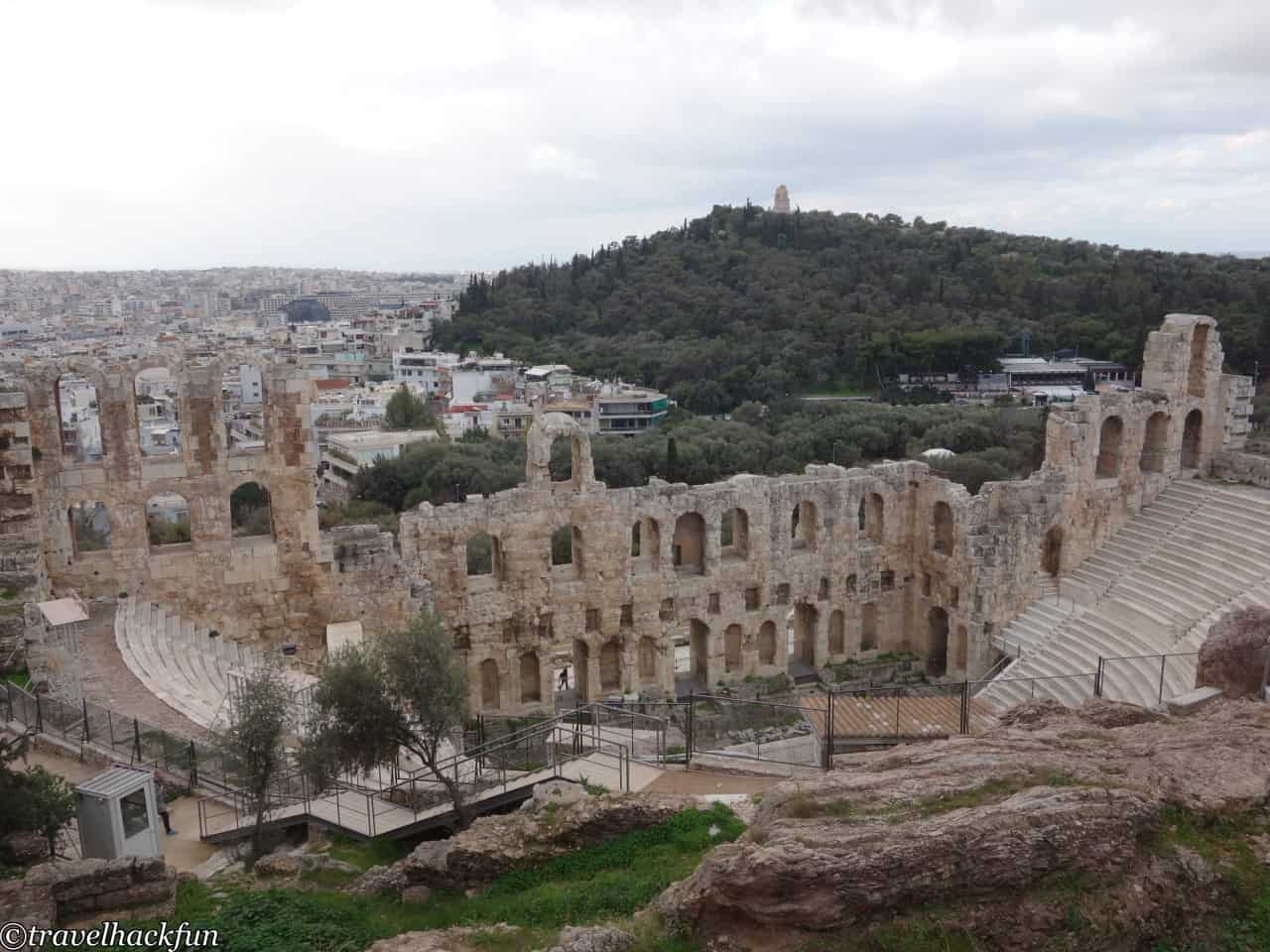
House of Common
As you ascend from the western side, you arrive at the House of Common gate, located just below the entrance to the ancient Acropolis. The House of Representatives is a Roman-era structure that led to the sanctuary of the Acropolis. The columns you see today once supported a roof made of marble, and the central portico was adorned with paintings. In the 6th century AD, the southern wing was converted into a Christian church, and later in the medieval period, it was transformed into a palace. In 1640, the palace was struck by lightning, and a fire broke out, particularly in the munitions storeroom, leading to the destruction of the building at that time. Subsequently, the damaged portions were removed, and the ruins were rediscovered.
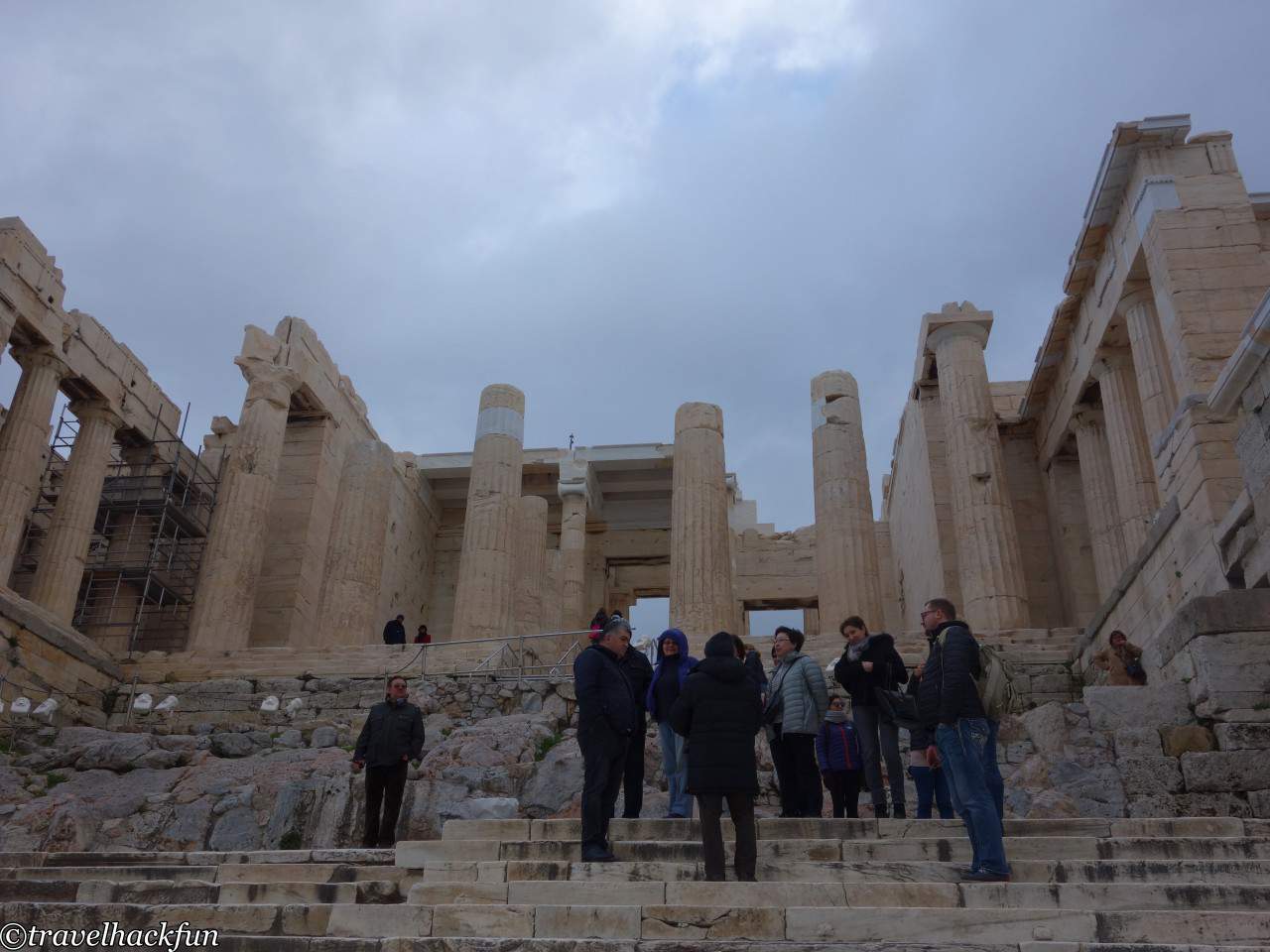
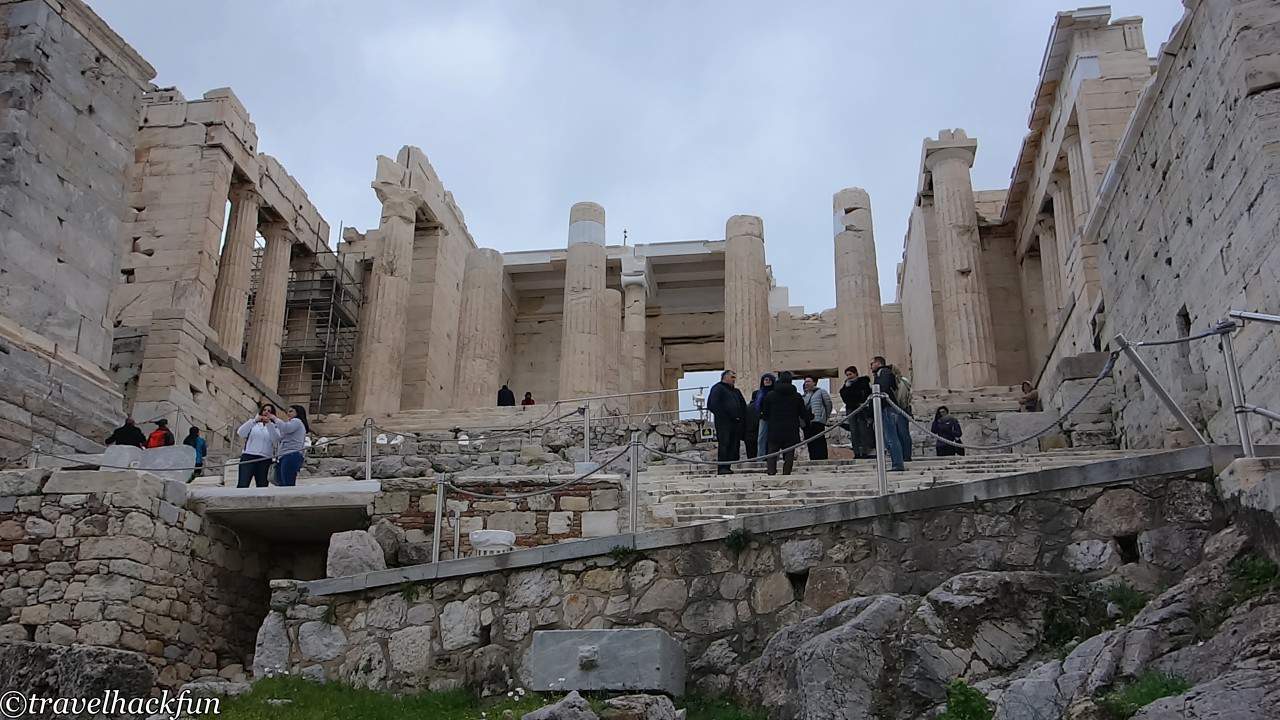
The Temple of Victory Goddess
As you ascend the stairs, to the right, you can see the Temple of Victory Goddess, which was built over 400 years before Christ. This ancient monument has endured the ravages of war and was severely damaged in 1686. It was later reconstructed in 1835, but today, most of its reliefs have been lost, leaving only eight Ionic columns, four at the front and four at the rear. It is said that there were once many reliefs on top, commemorating Athens' victorious wars.
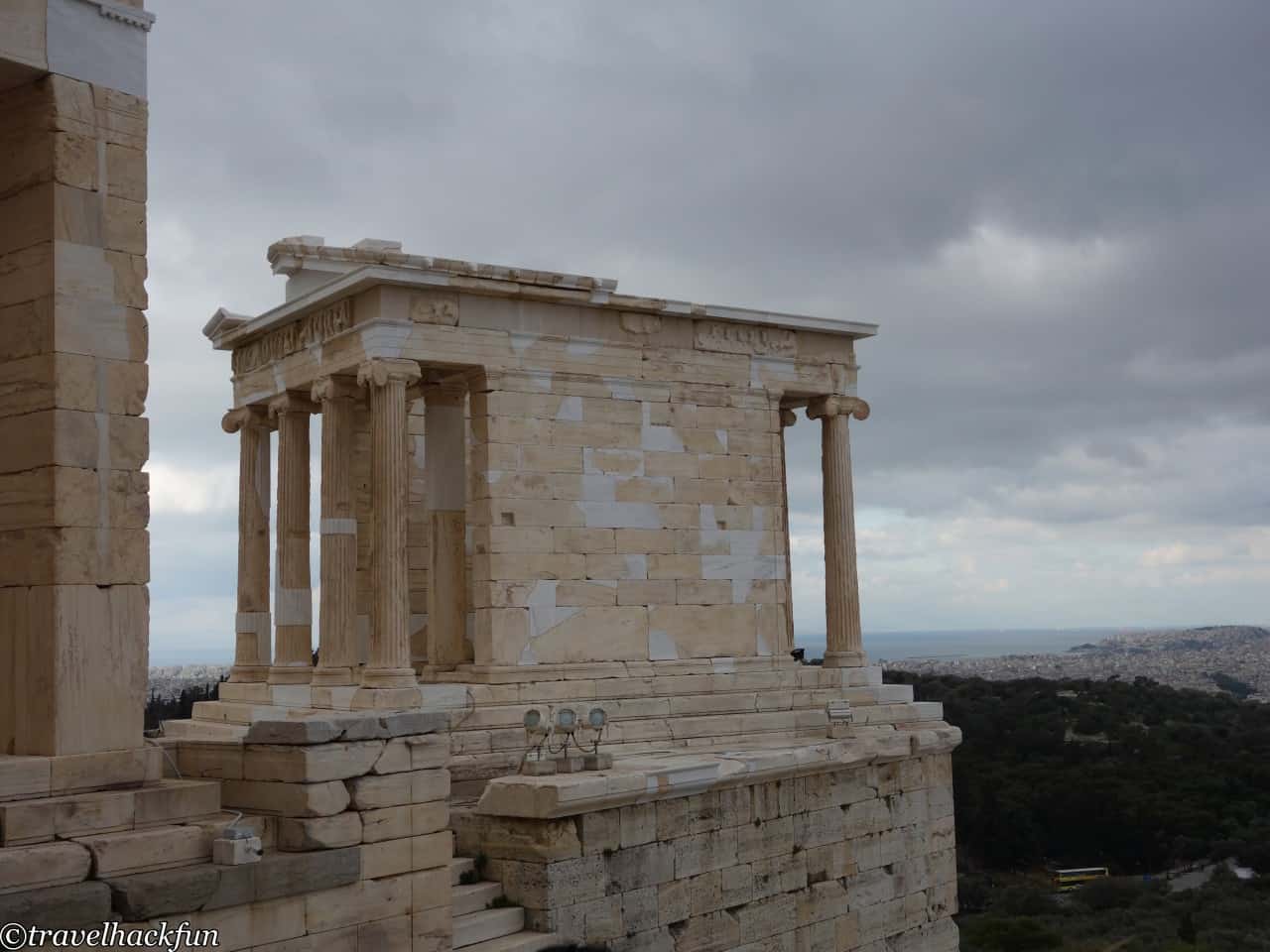
The Parthenon
The Parthenon is the most famous building on the Acropolis, and it is a magnificent temple dedicated to the goddess of wisdom, Athena. It is renowned for its exquisite Doric columns and intricate sculptures, serving as an epitome of ancient Greek architecture and being one of the Seven Wonders of the Ancient World. When you think about how people in the 5th century BC constructed such a building on the hill of the Acropolis, it truly is a marvel.
As we ascend from below, we initially face the back of the temple and need to go around to the rear to see the front of the temple. The temple is surrounded by 48 Doric columns, each standing at a height of ten meters. The original proportions of the temple's roof to its width created a ratio of 1:1.618, known as the golden ratio. Inside the temple, there once stood a colossal ivory and gold statue of Athena Parthenos, reaching a height of twelve meters. Parthenos means "virgin." In 1687, the temple suffered severe damage due to its use as a munitions depot and was heavily damaged during bombardment by Venetian artillery.
![How to play [Greece] Athens Athens? | Athens Attractions | Athens Day Trips 12 Athens, Athens 12](https://blog.travelhackfun.com/wp-content/uploads/2024/01/Athens-20-edited.jpeg)
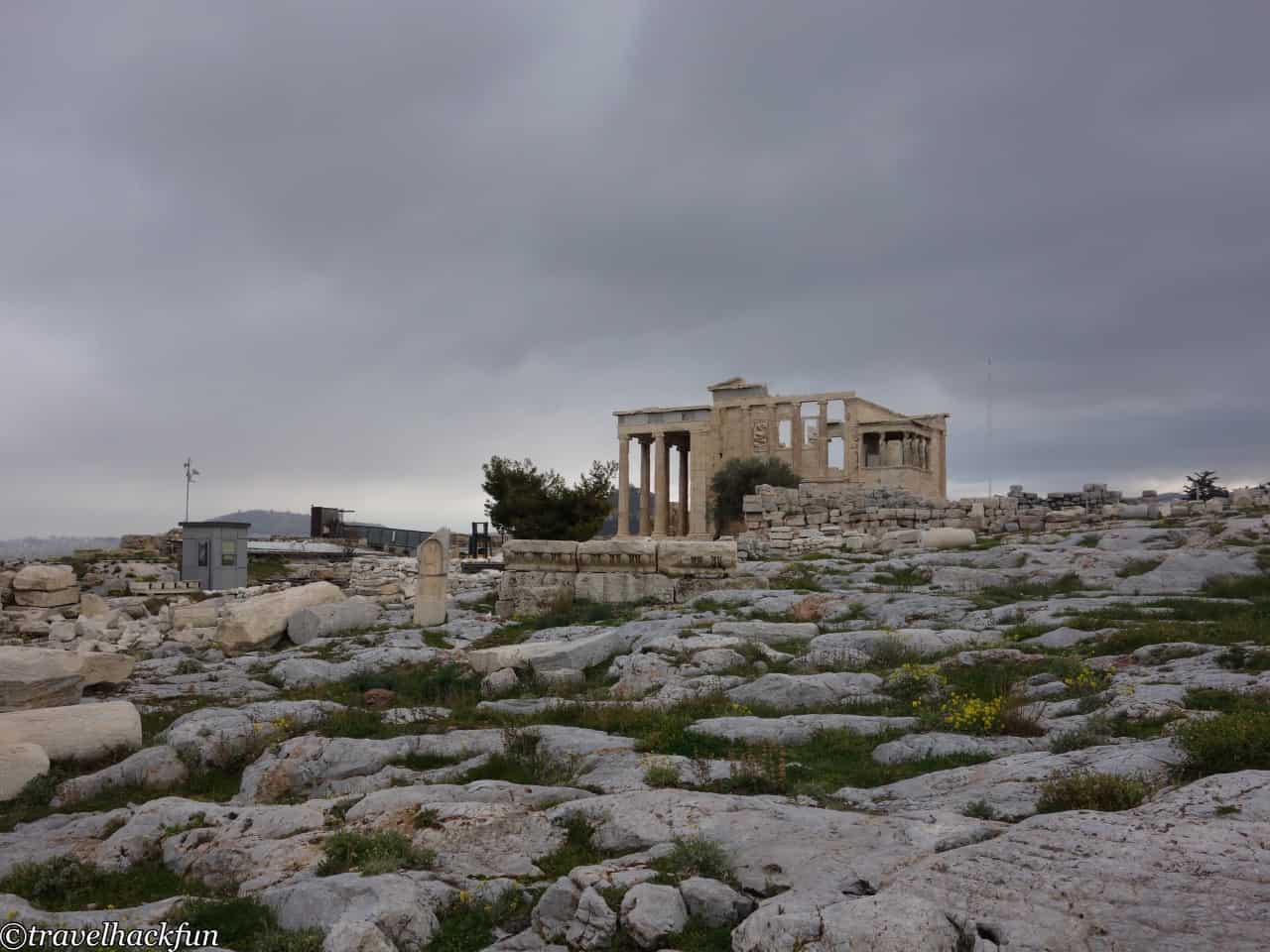
![How to play [Greece] Athens Athens? | Athens Attractions | Athens Day Trips 14 Athens, Athens 14](https://blog.travelhackfun.com/wp-content/uploads/2024/01/Athens-24.jpeg)

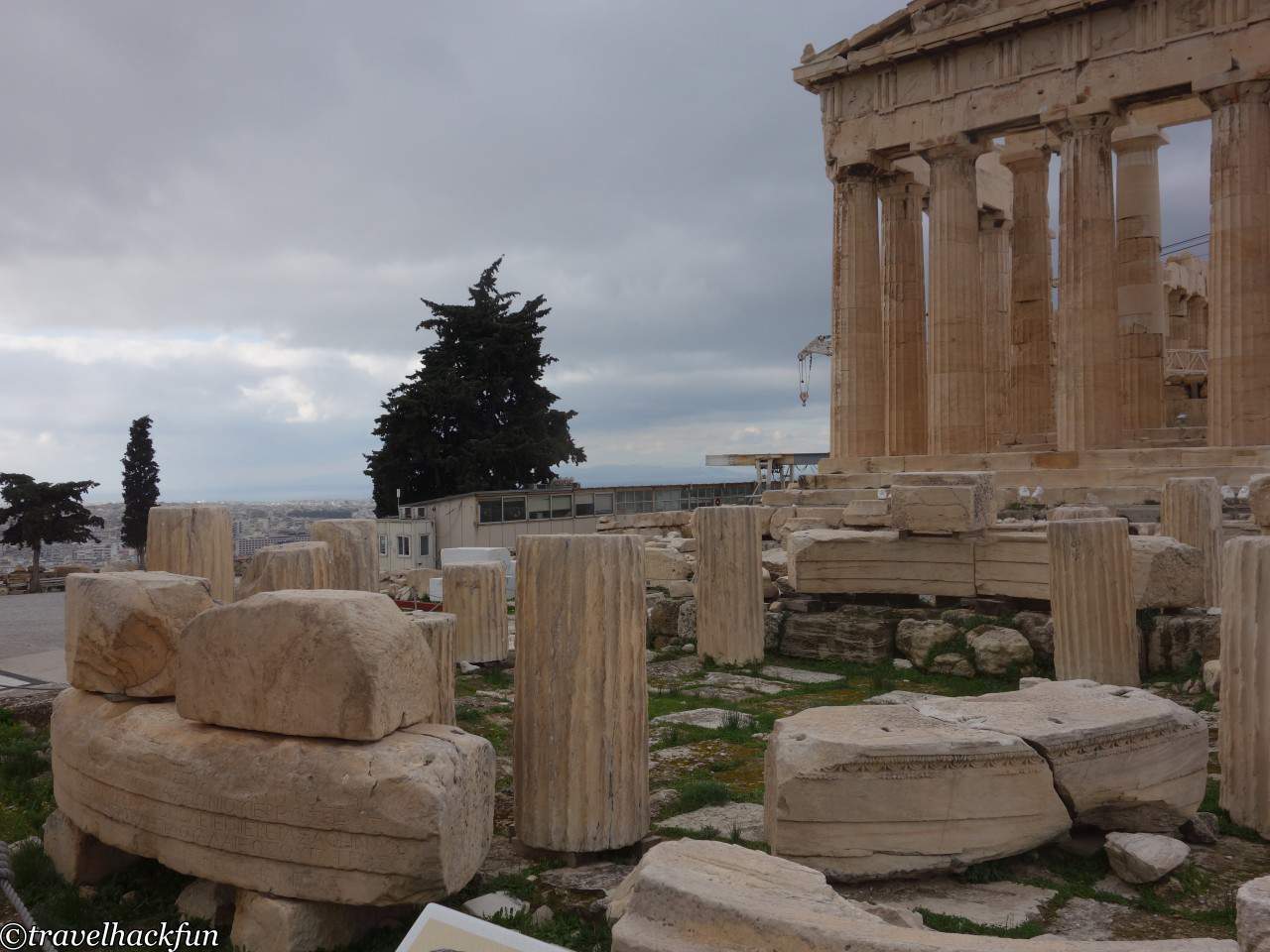

The design of this temple is incredibly detailed. Regarding its columns, they are tapered, with a slight swelling in the middle, creating the optical illusion of appearing perfectly straight when viewed from a distance. Originally, each block above the columns of the Parthenon had reliefs, but most of the ones on the roof were damaged, while the better-preserved ones were moved to the Acropolis Museum for preservation. Replicas now occupy the original site, especially at the triangular pediments.
![How to play [Greece] Athens Athens? | Athens Day Tips | Athens Day Trips 18 Athens, Athens 18](https://blog.travelhackfun.com/wp-content/uploads/2024/01/Athens-30.jpeg)
From the Parthenon, there's an observation platform towards the rear where you can also enjoy the view of the Athens cityscape. Looking to the right, you can get a clear view of the Temple of Zeus, which stands tall amidst the bustling city.
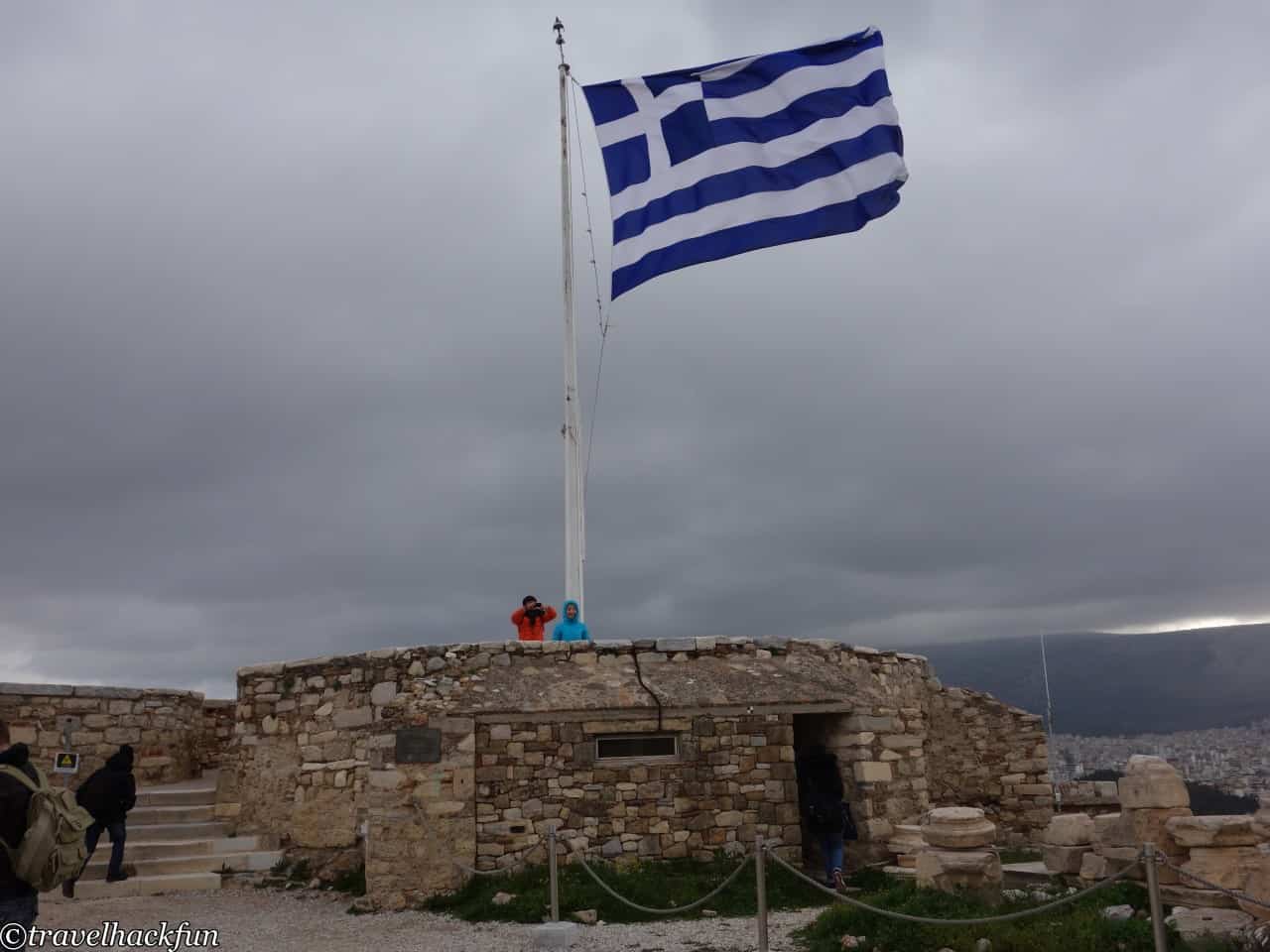

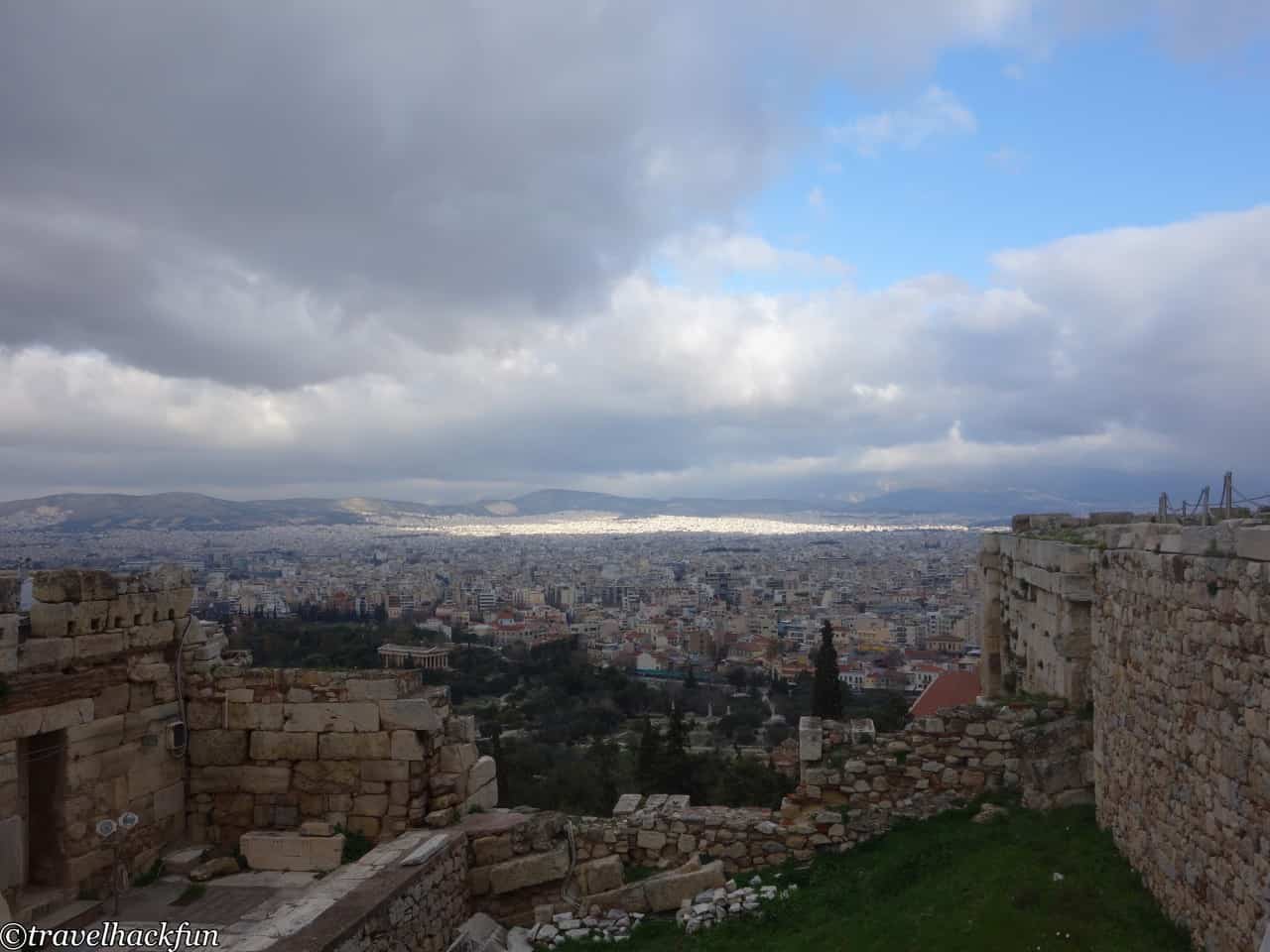
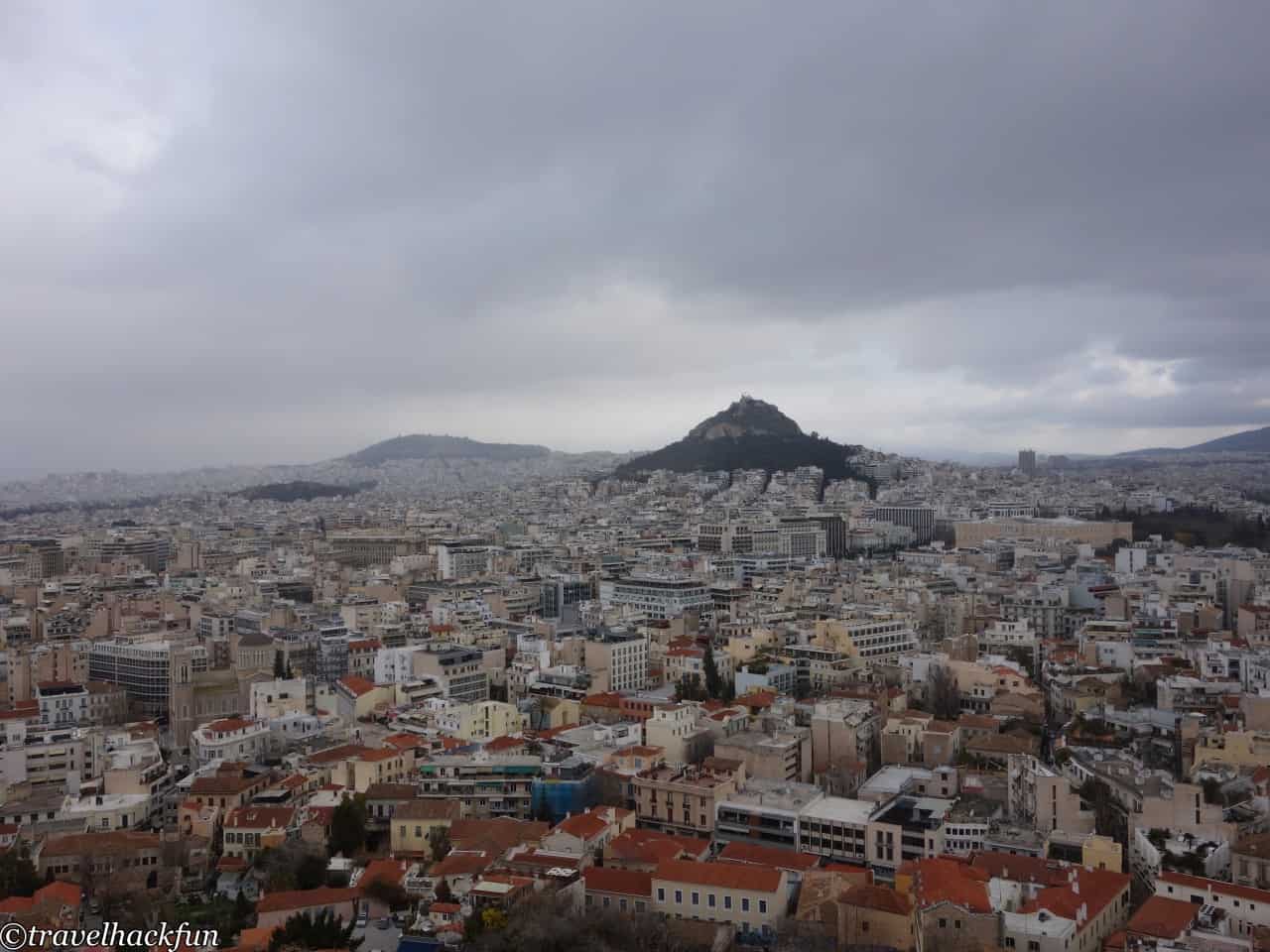
![How to play [Greece] Athens Athens? | Athens Attractions | Athens Day Trips 23 Athens, Athens 23](https://blog.travelhackfun.com/wp-content/uploads/2024/01/Athens-35.jpeg)
The Erechtheion Temple
Following the path around the other side of the Parthenon and descending, you'll come to the Erechtheion Temple. This temple was built in 407 BC. Erechtheus was the sea god, and this location is where, in mythology, the sea god and Athena once had a conflict. It is also known as the House of the Gods. Due to the sloping terrain, the temple was constructed in harmony with the topography. The upper portion has only one level, while the lower portion has two levels.
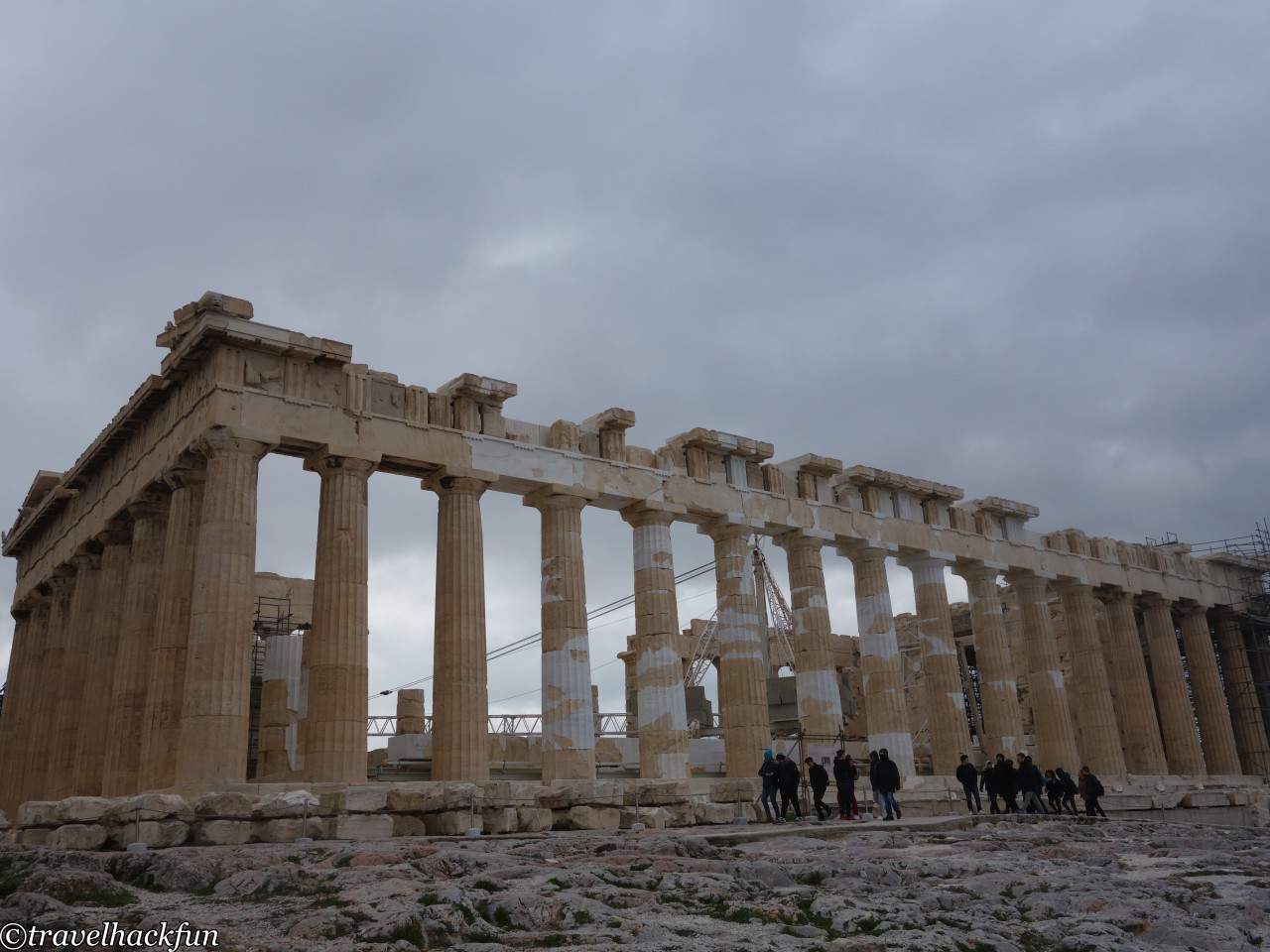
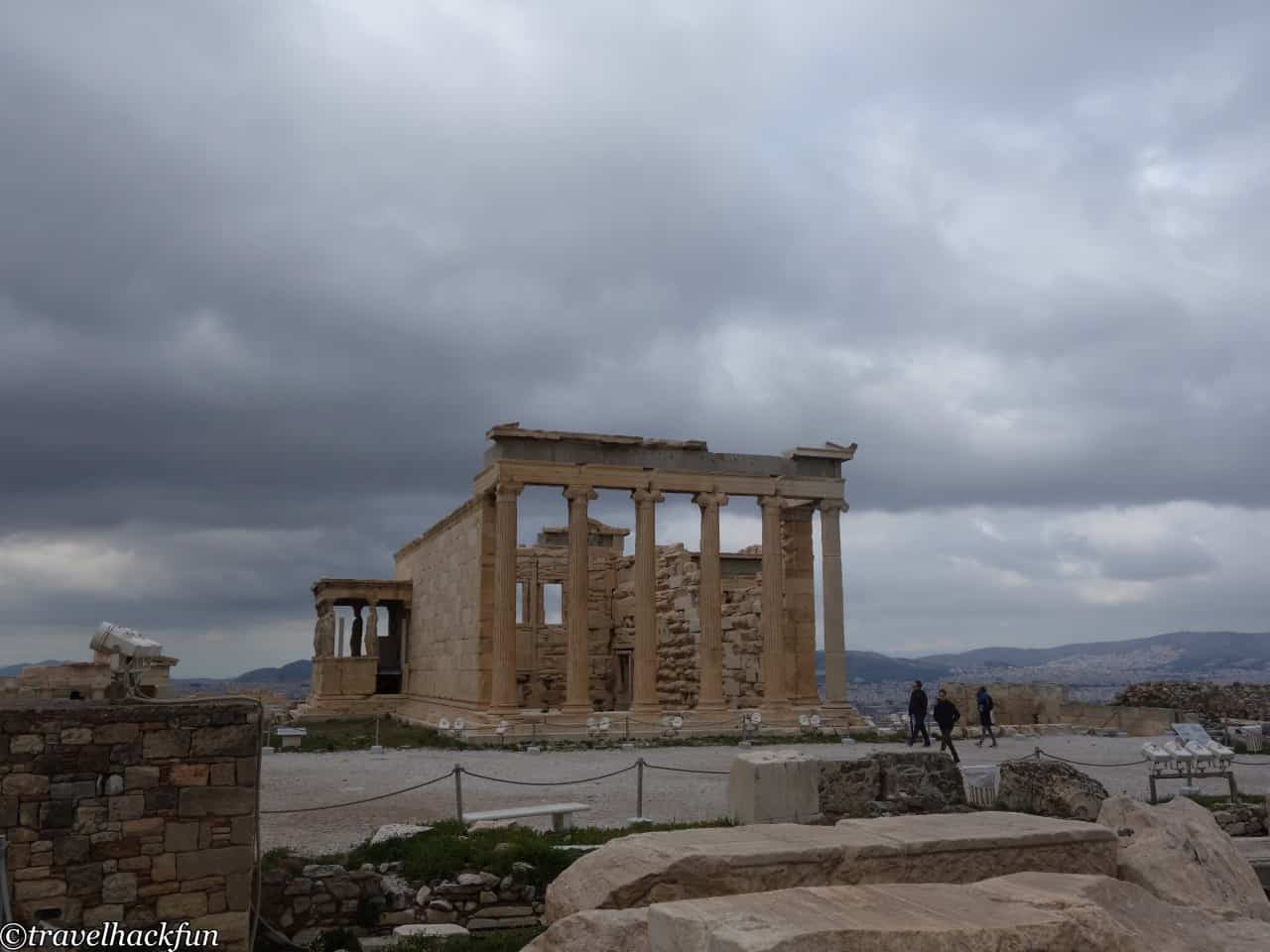
![How to play [Greece] Athens Athens? | Athens Attractions | Athens Day Trips 26 Athens, Athens 26](https://blog.travelhackfun.com/wp-content/uploads/2024/01/Athens-39.jpeg)
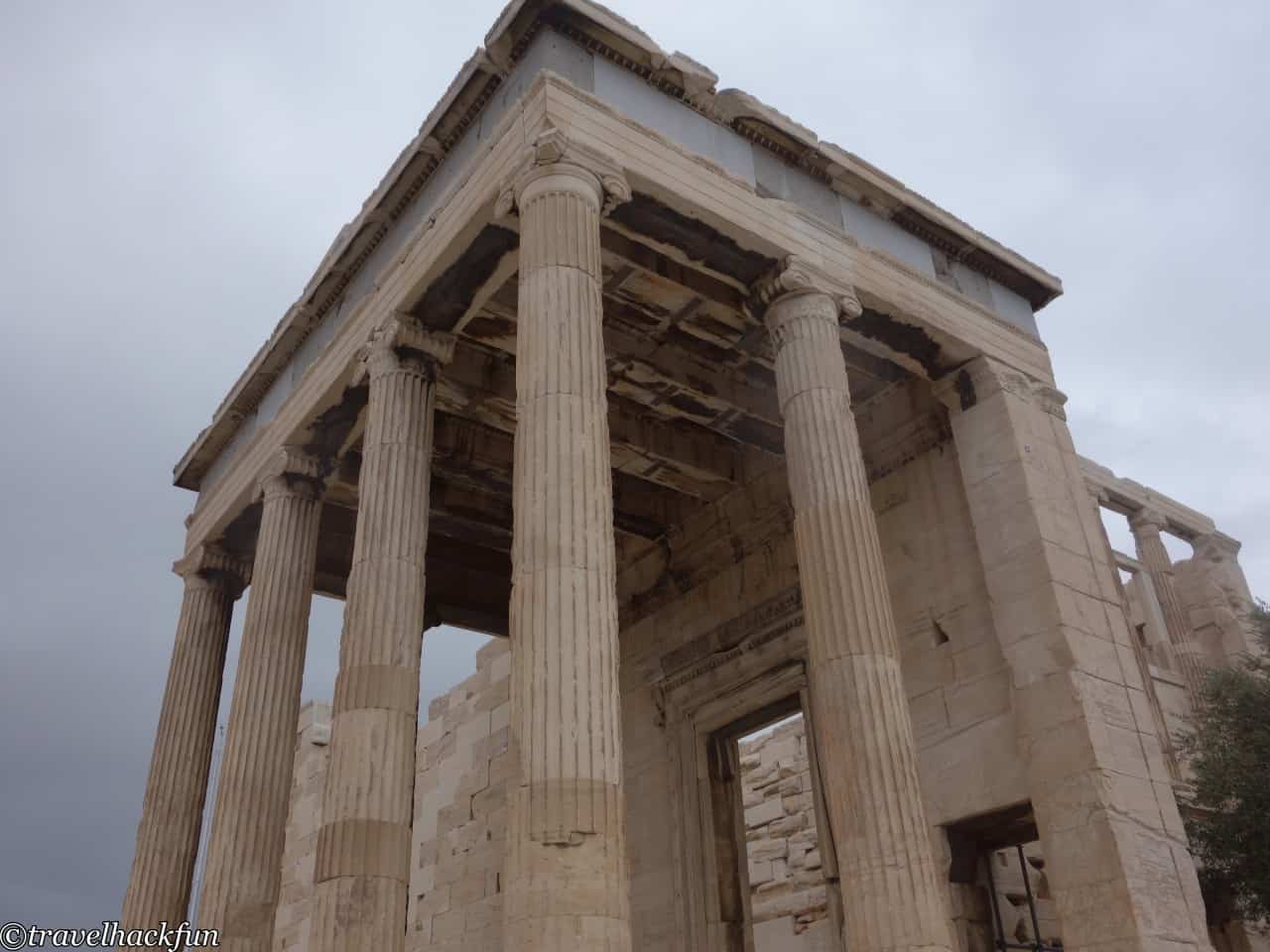
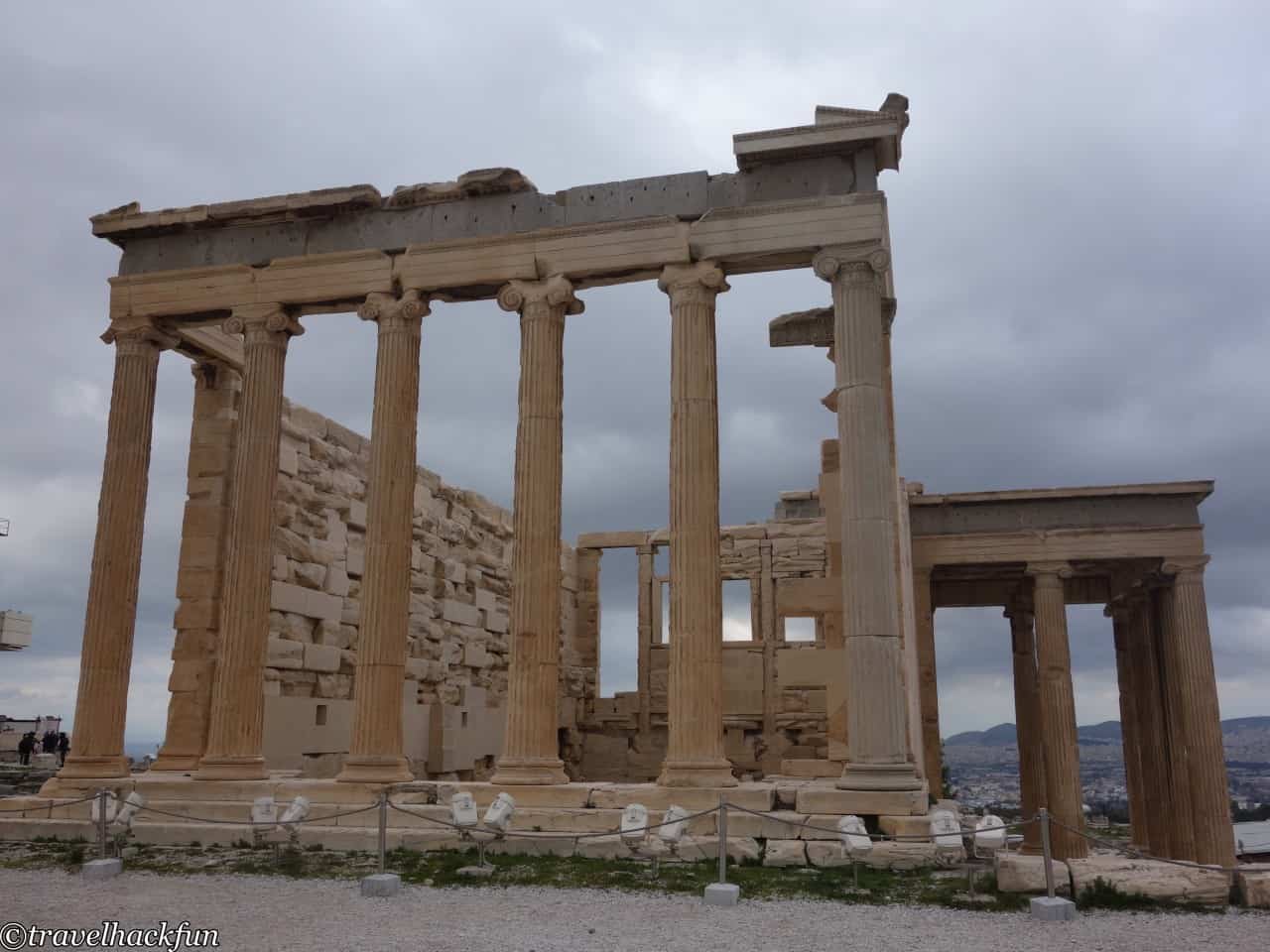
Looking up from below, you can see the most famous feature of the Erechtheion Temple, the Porch of the Caryatids. These six maiden statues replace traditional columns, and their design is quite unique. Each one has different hairstyles and clothing, a result of the inherent difficulties in carving due to the material used. However, the designer employed exceptional techniques to cleverly address these challenges and sculpted the maidens with distinct and graceful postures. What we see here today are replicas; the originals have been moved to the Acropolis Museum and the British Museum for preservation.
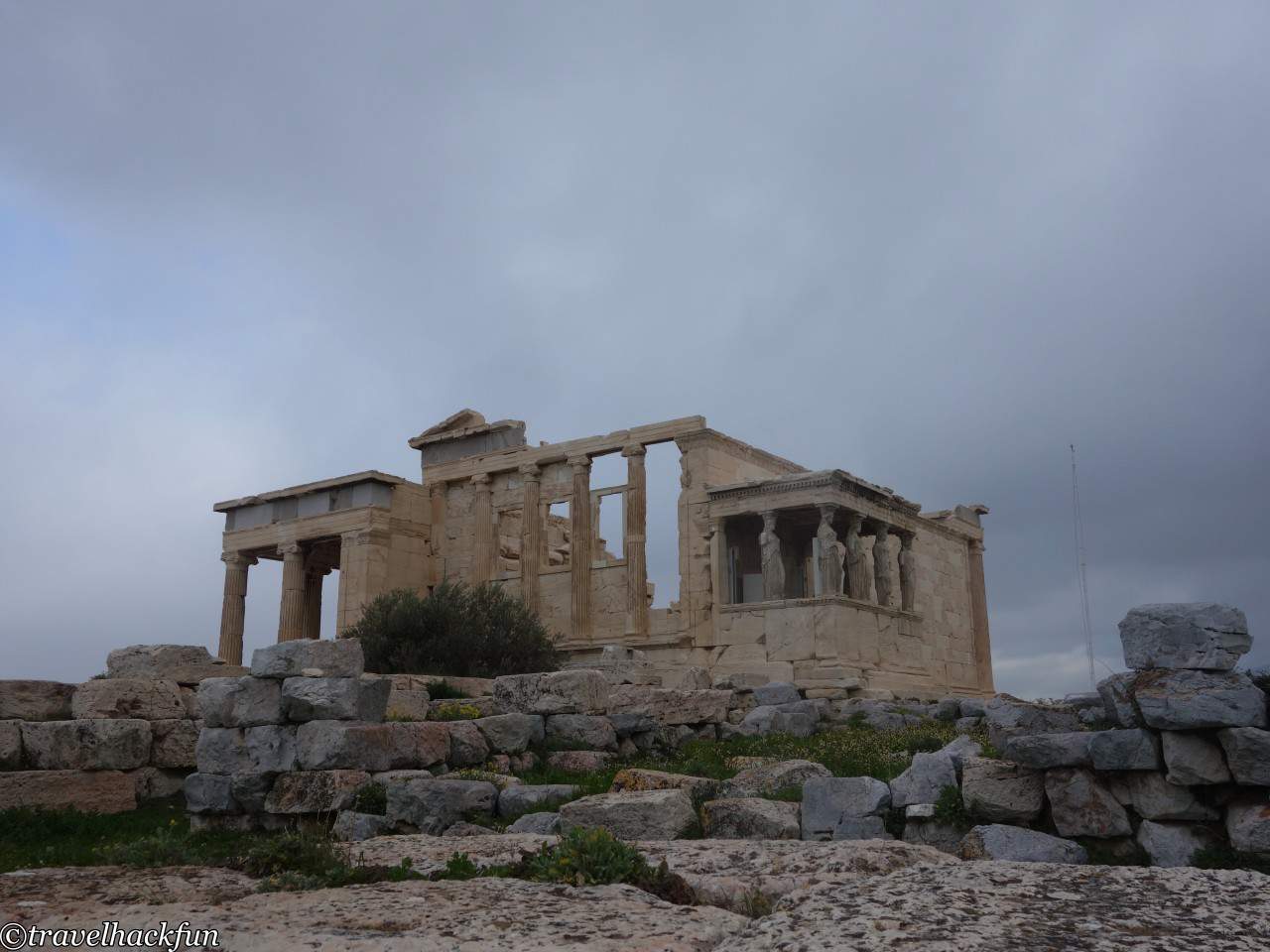
The Theater of Dionysus
The Theater of Dionysus is another open-air theater located on the southeastern slope and is one of the oldest surviving theaters in the world. This theater was built in the 4th century BC, replacing an older theater on the same site. In its earliest days, the seats were made of wood, but in the 4th century, it underwent waterproofing modifications and was reconstructed with marble seats, accommodating up to 17,000 people.
![How to play [Greece] Athens Athens? | Athens Day Tips | Athens Day Trips 30 Athens, Athens 30](https://blog.travelhackfun.com/wp-content/uploads/2024/01/Athens-46.jpeg)
Acropolis Museum
The Acropolis Museum is located right across from the Acropolis and is dedicated to showcasing ancient artworks and artifacts excavated from the Acropolis and its surrounding areas. The museum offers excellent guided tours, making it well worth a visit.
Acropolis Museum Tickets
The museum itself is a modern and glass-walled building designed by the renowned architect Bernard Tschumi. Its contemporary glass and concrete structure contrasts sharply with the ancient Acropolis site. At the entrance, there is a transparent floor through which you can see the ancient city ruins below. Through the glass walls, you can also have a clear view of the Acropolis across the way.
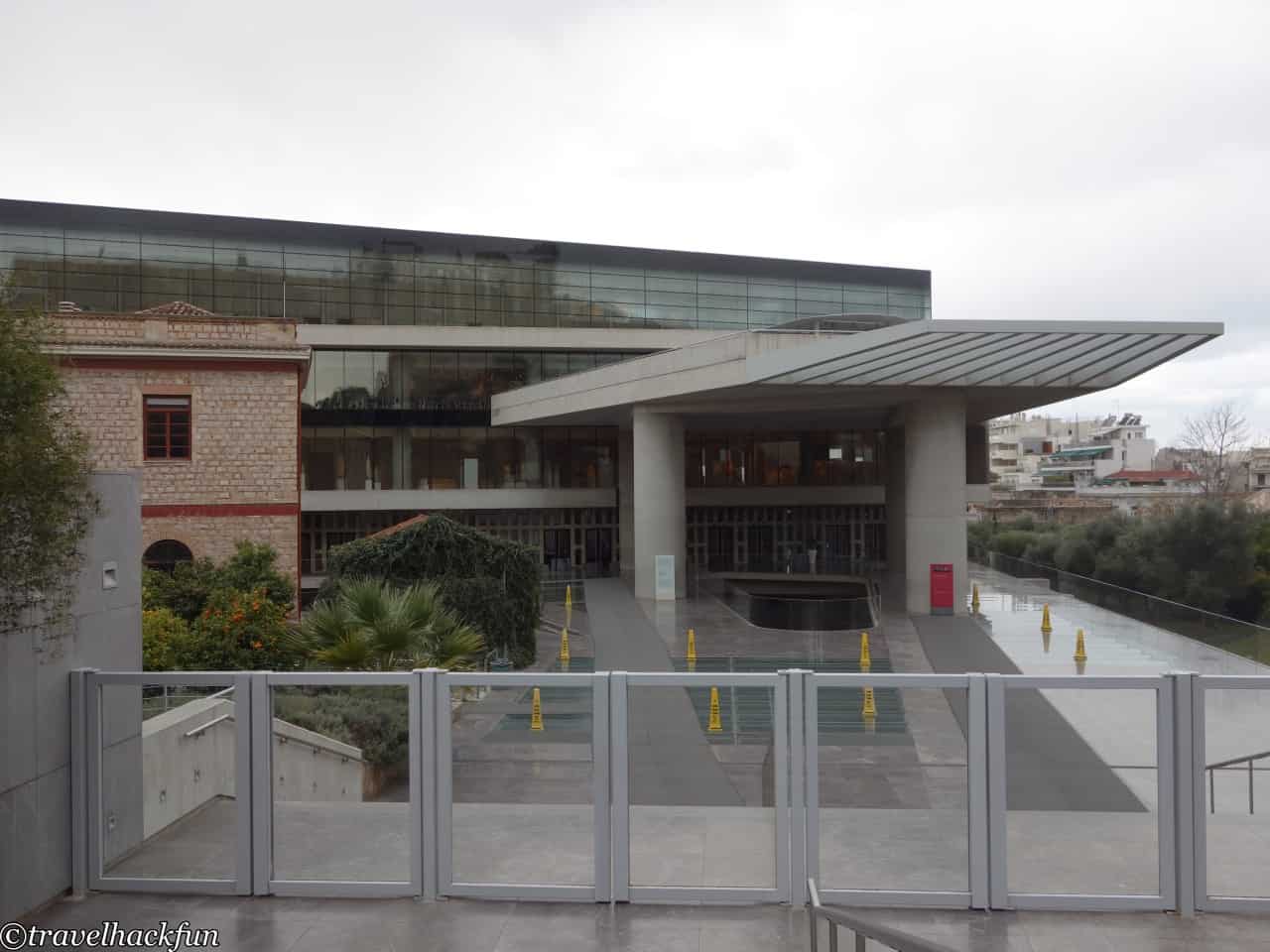

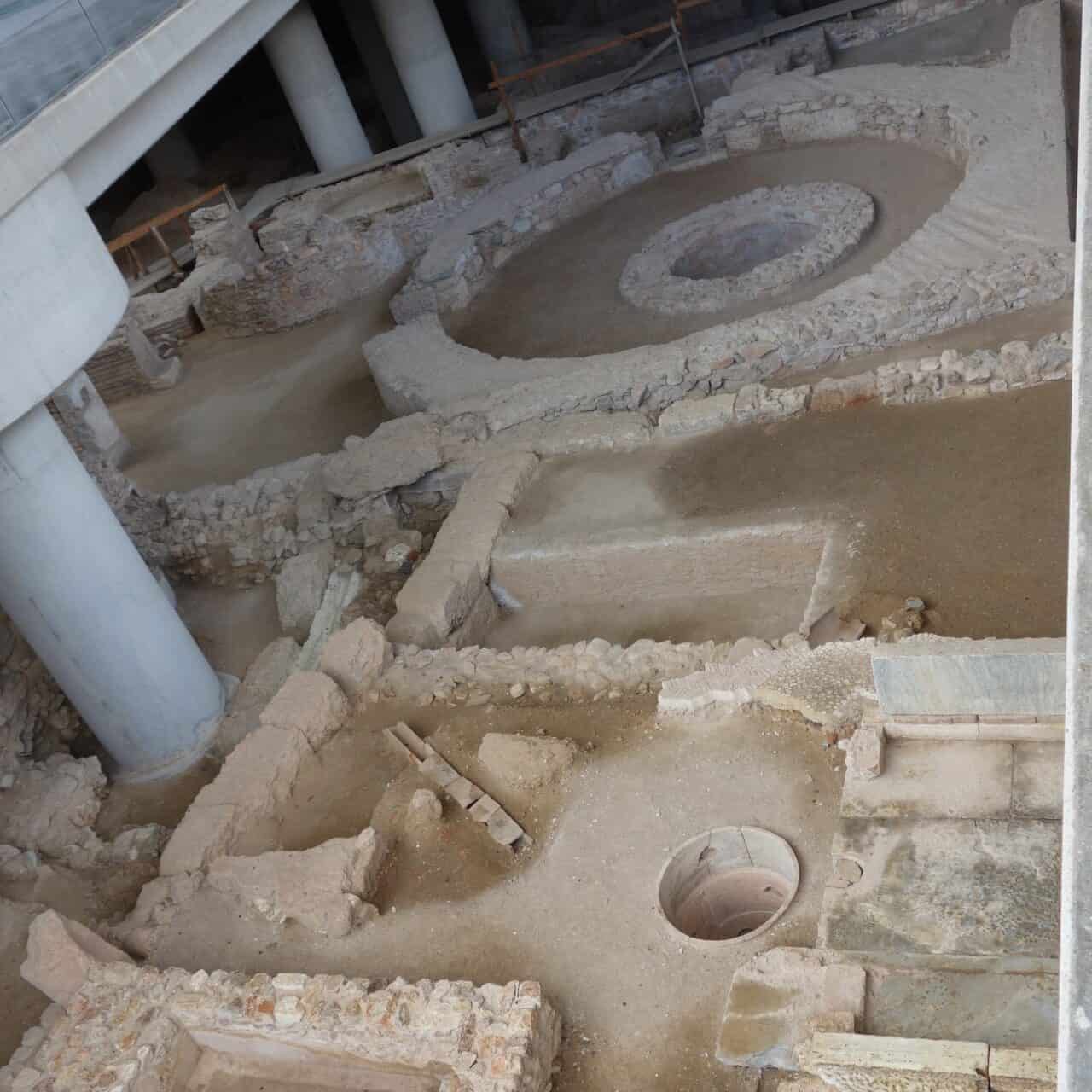

One of the most captivating exhibits is the Caryatids, the original set of which comprised six statues. Here, you can see five of them, as the sixth original Caryatid is now housed in the British Museum.
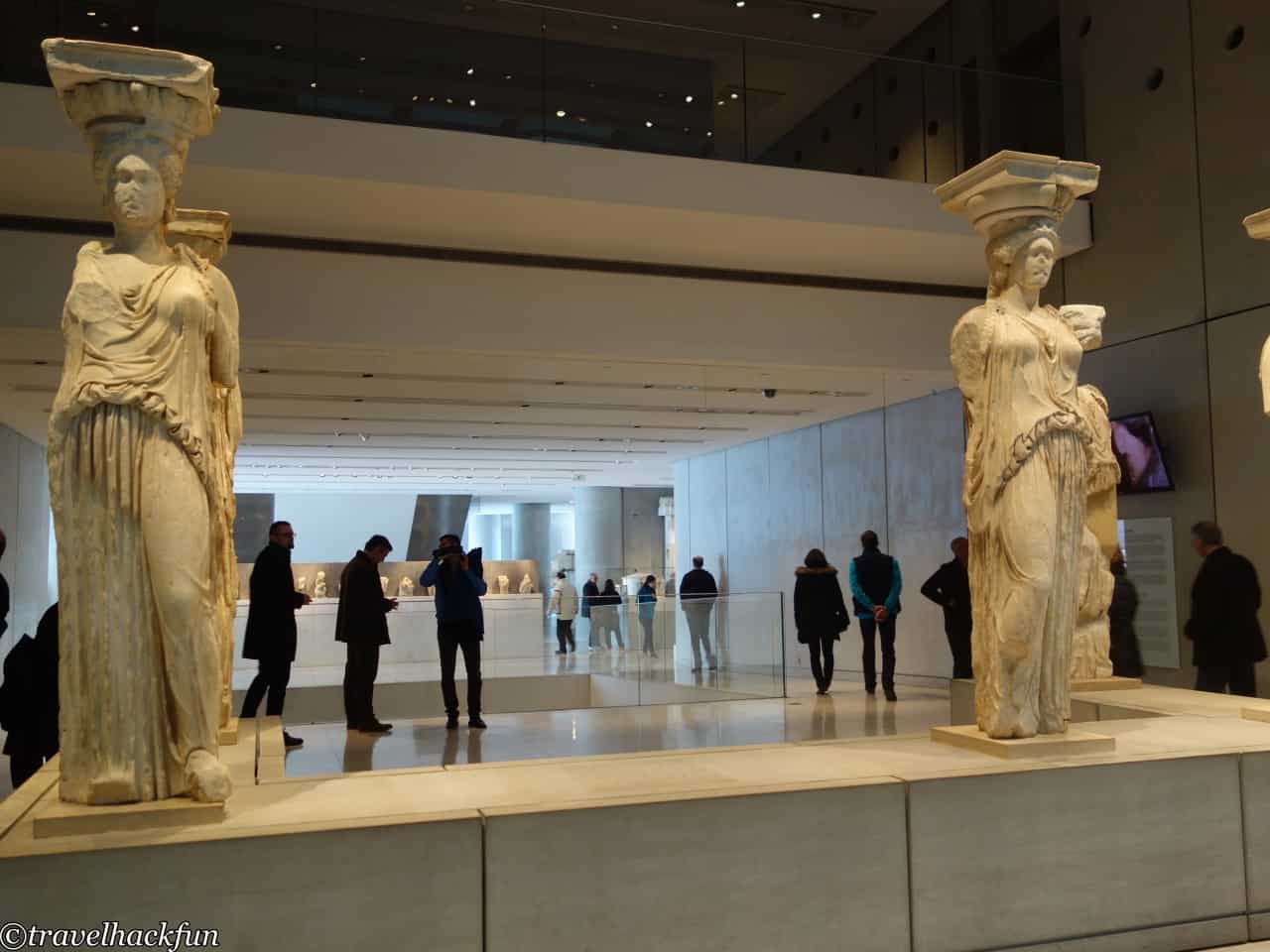
The top floor features the Parthenon Gallery. The design of this gallery mimics the dimensions and orientation of the Parthenon temple, displaying the original Parthenon reliefs. The museum intentionally places the original positions of the columns in the middle of the building but at a lower height, allowing visitors to walk closer and view the original arrangement of the reliefs as if they were suspended in mid-air.

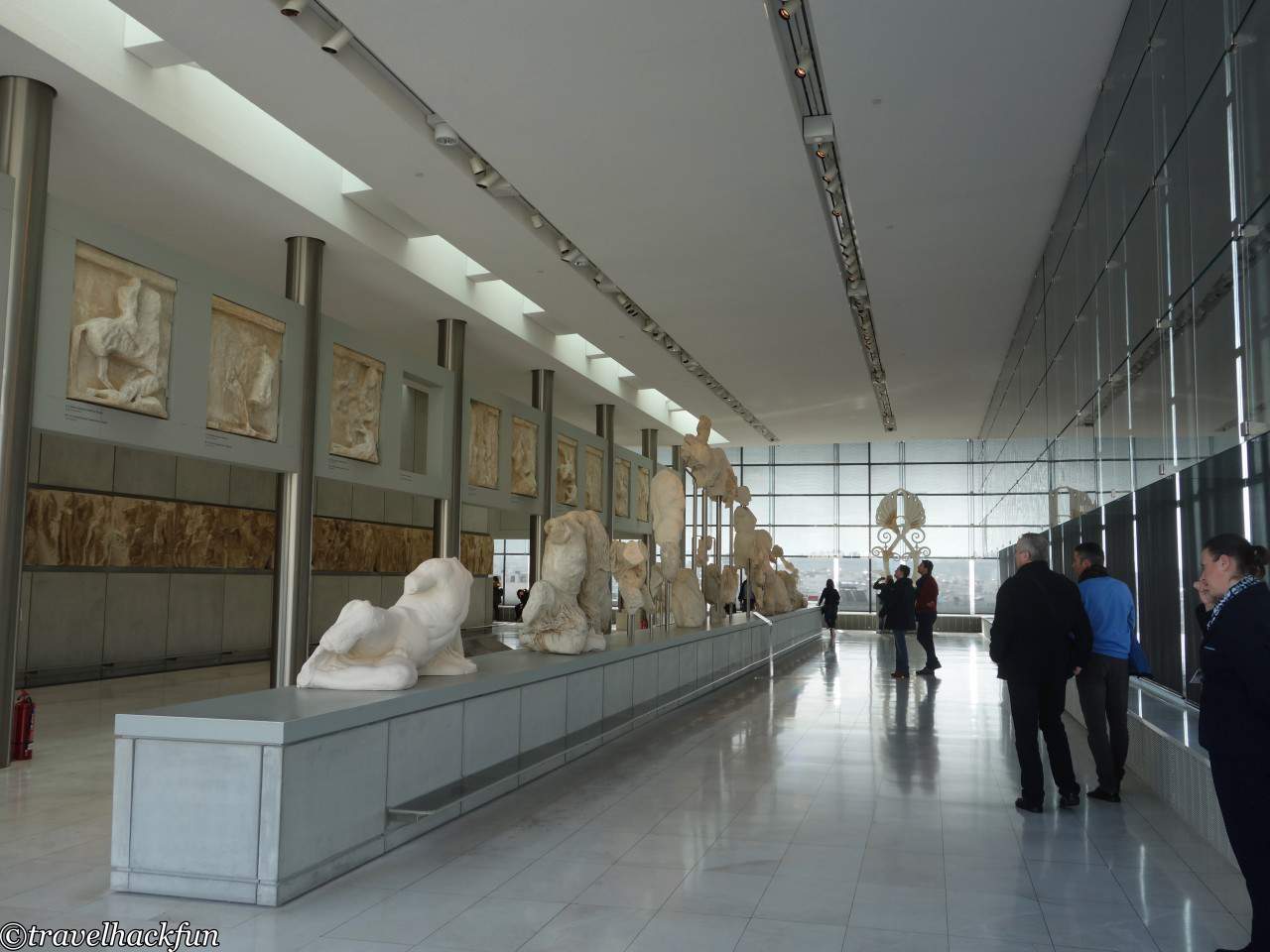
Temple of Olympian Zeus
The Temple of Zeus is dedicated to the chief god of Mount Olympus, Zeus. This temple was once the grandest in Athens and perhaps all of Greece. Construction began in the 6th century BC, and the project continued for nearly 700 years, finally reaching completion during the reign of Emperor Hadrian in the 2nd century of the Roman Empire.
Temple of Olympian Zeus Tickets
The Temple of Zeus is located to the southeast of the Acropolis, and it's only about a five-minute walk from the Acropolis Metro station. The entrance to the temple is situated in the center of a vast flat area by the Ilissos River, a place believed to be under the protection of the chief god among the gods. In ancient Greece, it was said to be located outside the city of Athens, surrounded by valleys, streams, and distant forests, making it a religious center of that time. Later on, as Athens expanded, this land became incorporated within the city's boundaries.

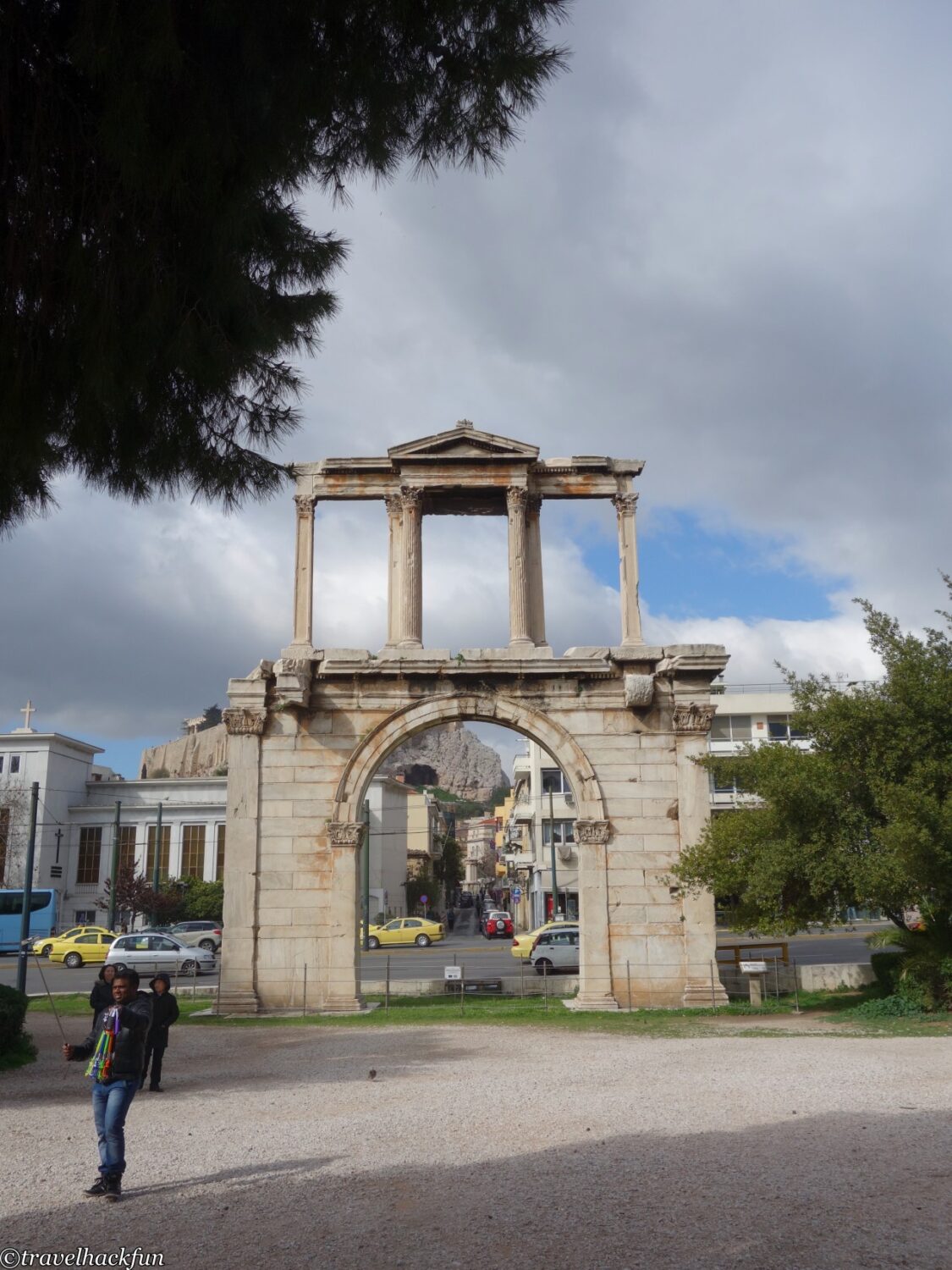
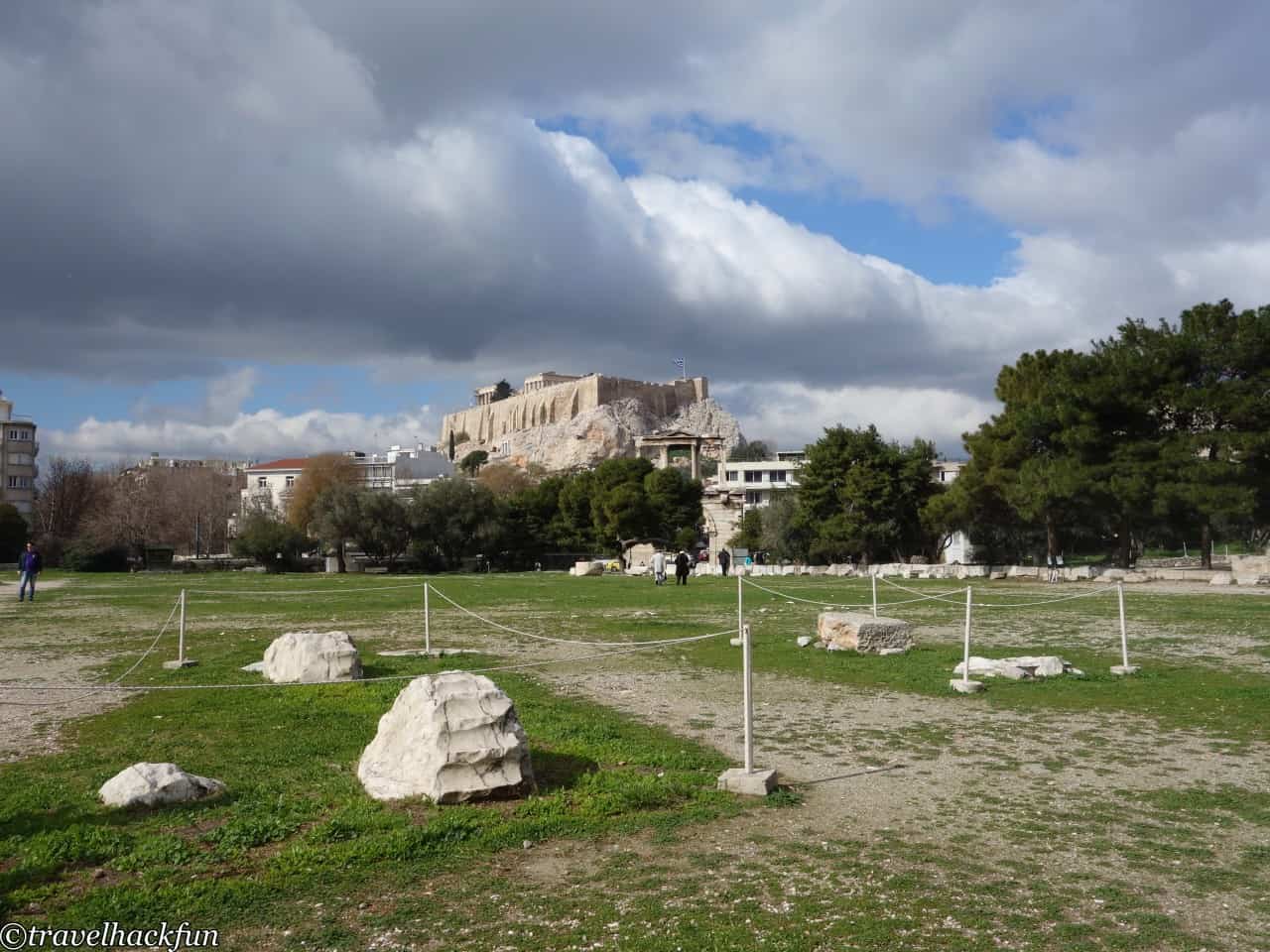
The Temple of Zeus follows the Doric architectural style. During its heyday, it boasted 104 Corinthian columns, each approximately 17 meters in height, making it one of the largest temples in the world at the time. Unfortunately, it was ordered to be destroyed by Emperor Theodosius II in 426 AD and later suffered damage from earthquakes. Today, only a few of the original 104 columns remain, totaling around fifteen on the outer periphery. Nevertheless, the remnants of this towering temple still convey a sense of grandeur, and it surpasses the Parthenon in size. The temple once housed a magnificent statue of Zeus made of gold and ivory, which, of course, is no longer in existence today.
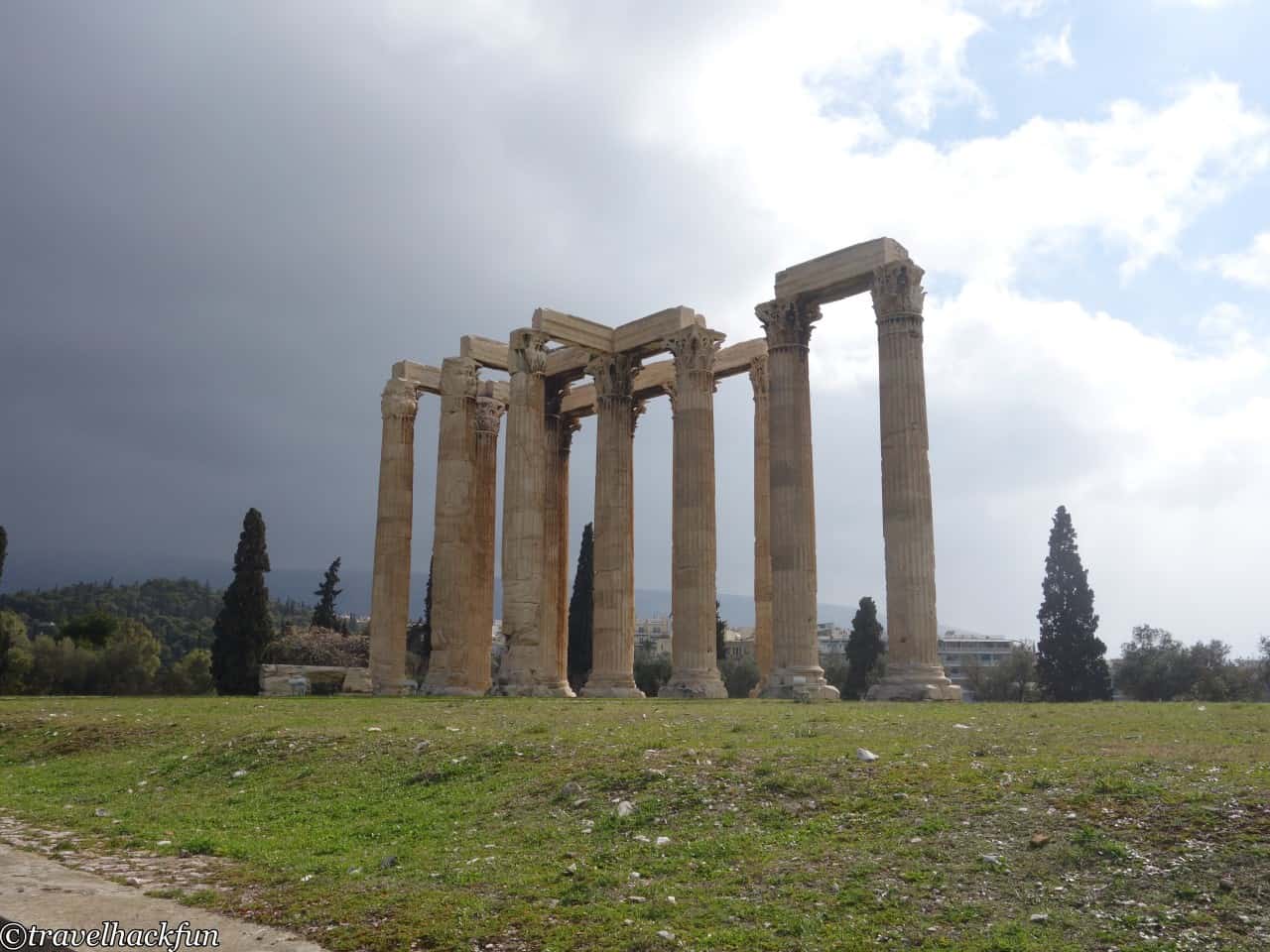
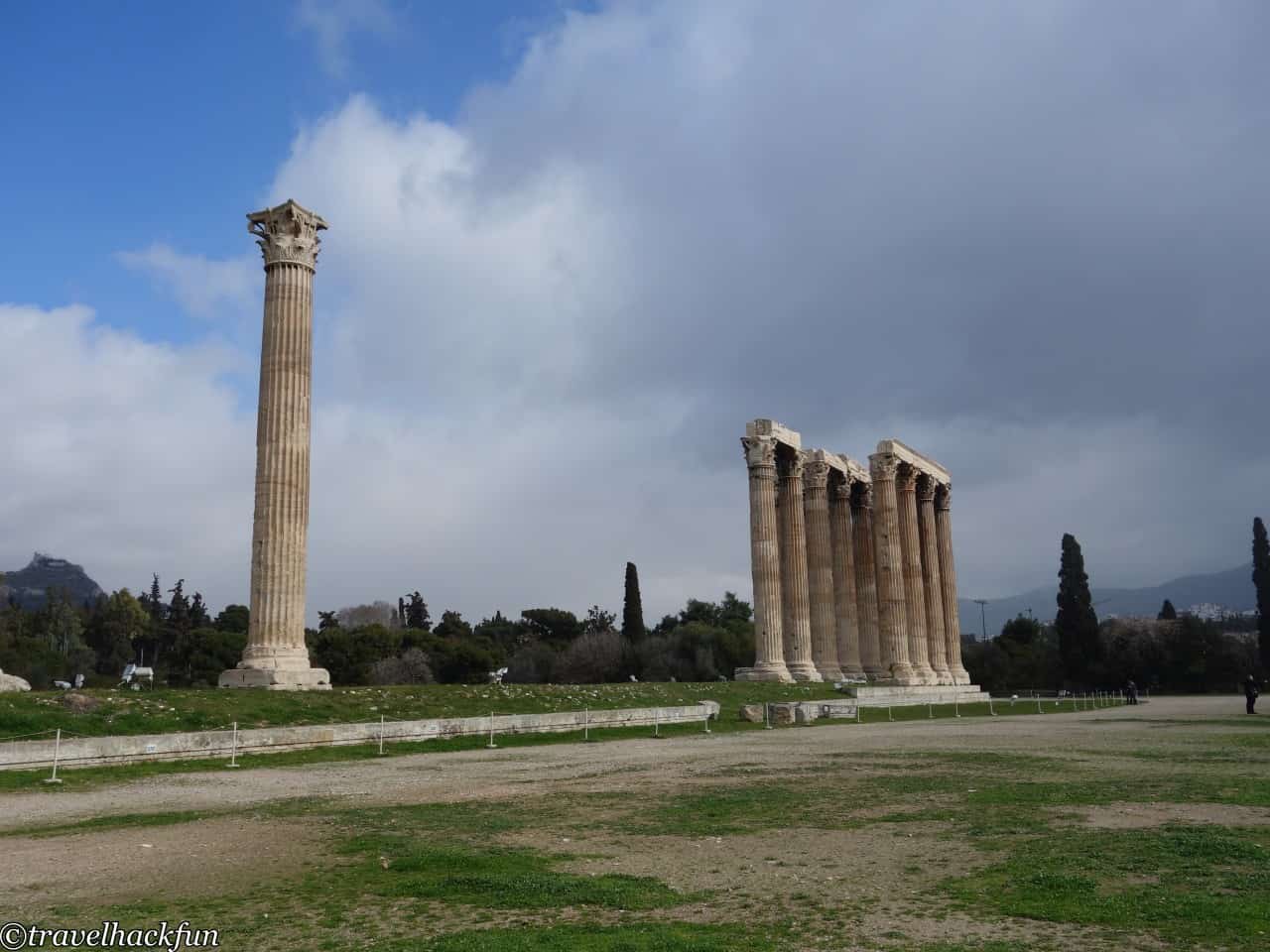
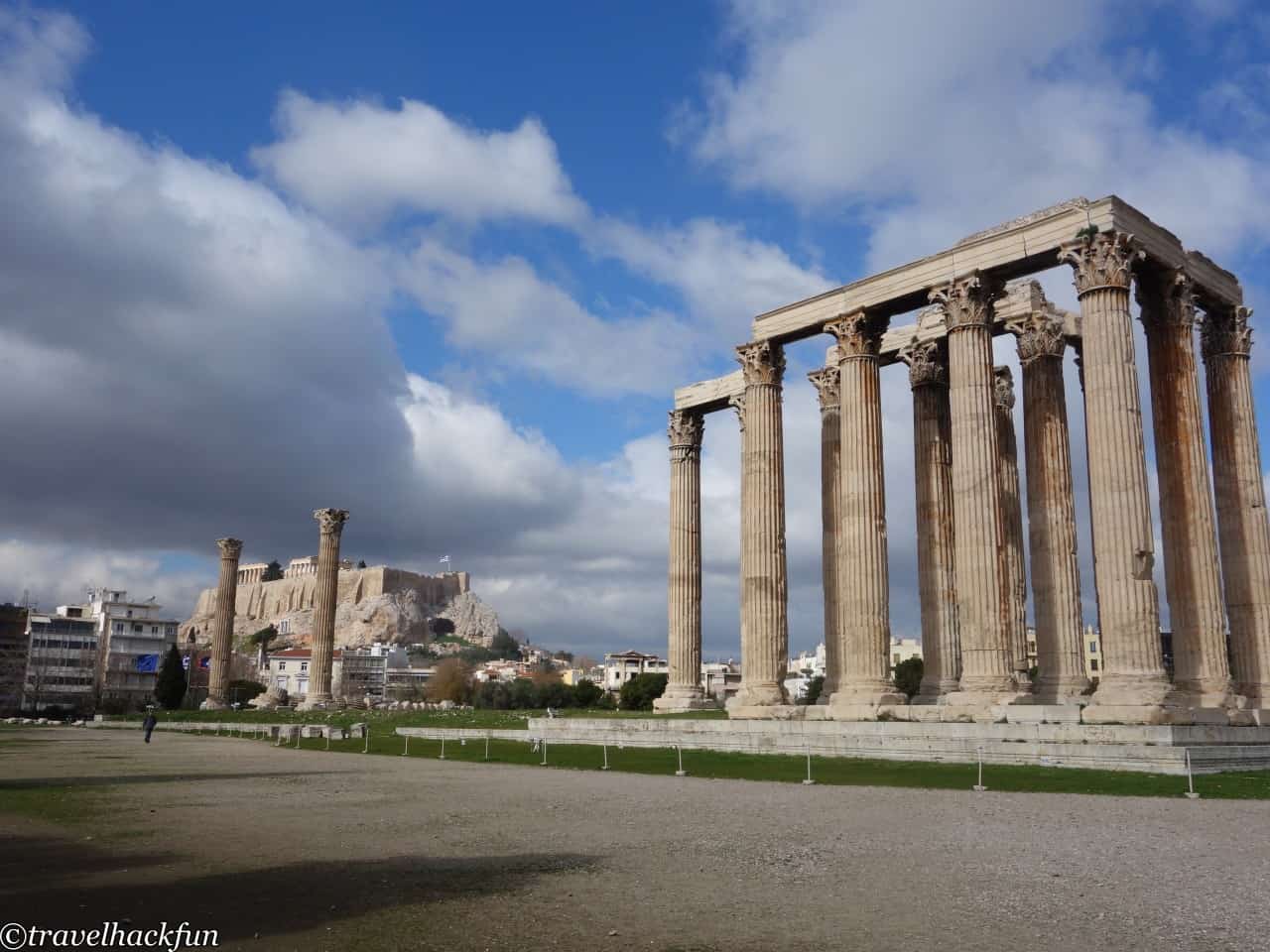
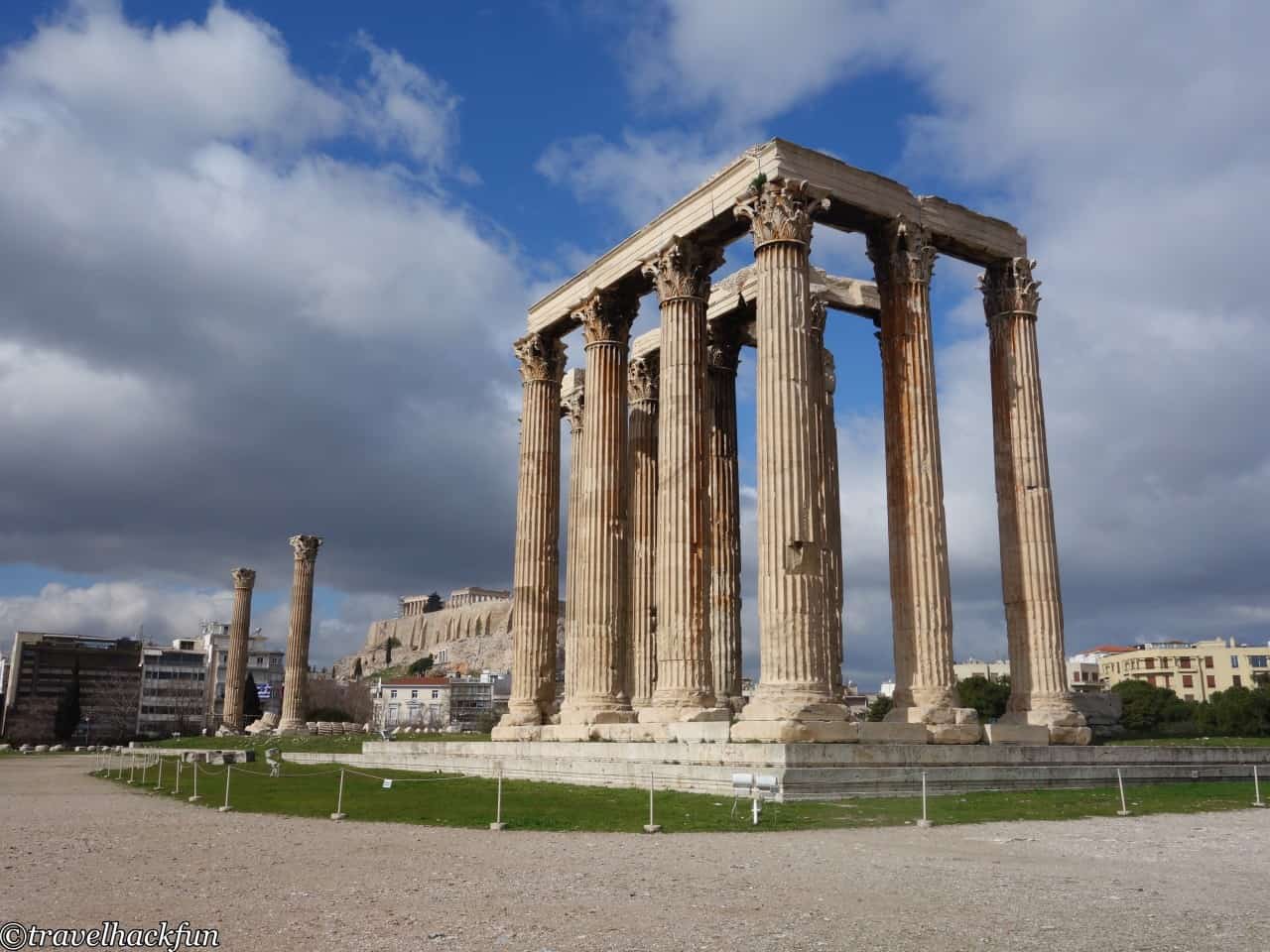
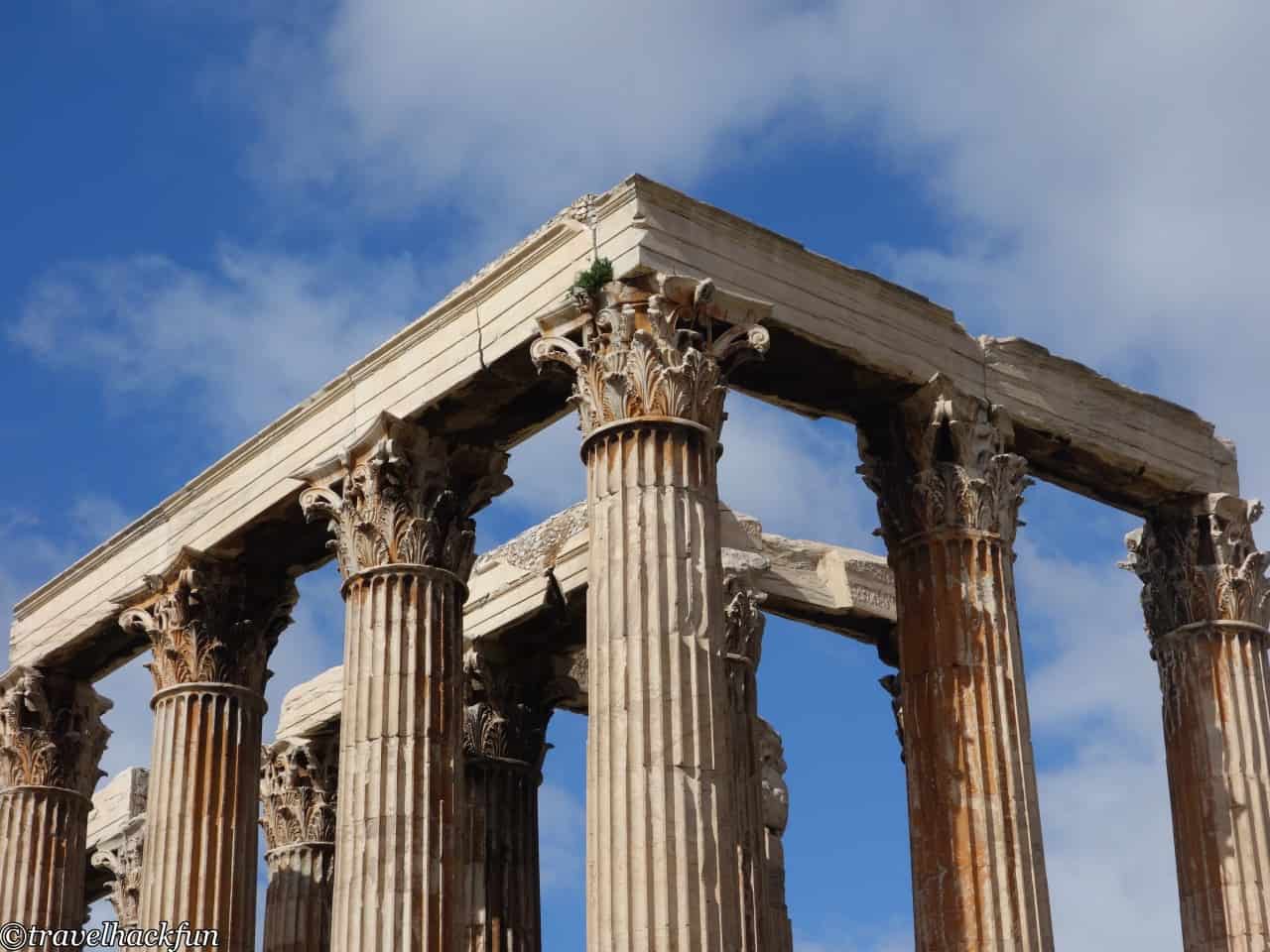
Roman Agora
The Roman Agora, located on the north side of the Acropolis, is an important archaeological site in Athens that dates back to the 1st century BC. The construction of the Roman Agora began during the rule of Julius Caesar and Augustus, marking the increasing influence of Rome in Athens during that period.
Tickets to Roman Agora
The Roman Agora includes a series of shops, colonnades, and some public buildings. Imagining the bustling crowds of ancient times, the most well-preserved structure is the Tower of the Winds, located to the left in the foreground. The Tower of the Winds is an octagonal marble clocktower believed to have served multiple functions, including a sundial, a water clock, and a weathervane, making it an ancient observatory. Carved on the tower are eight figures representing the wind deities from Greek mythology, each symbolizing a different wind direction. This tower was partially buried underground until the 19th century when it was excavated, so if you get up close, you can still see the carvings on the Tower of the Winds in relatively good condition.

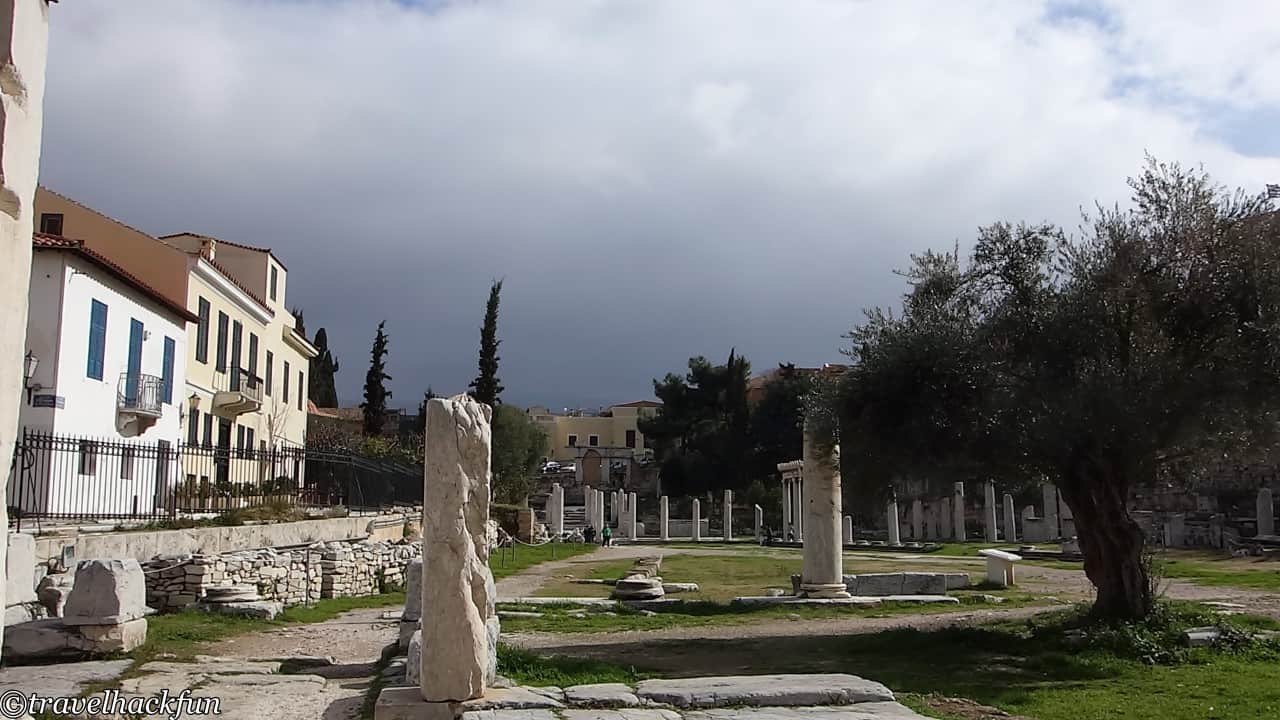
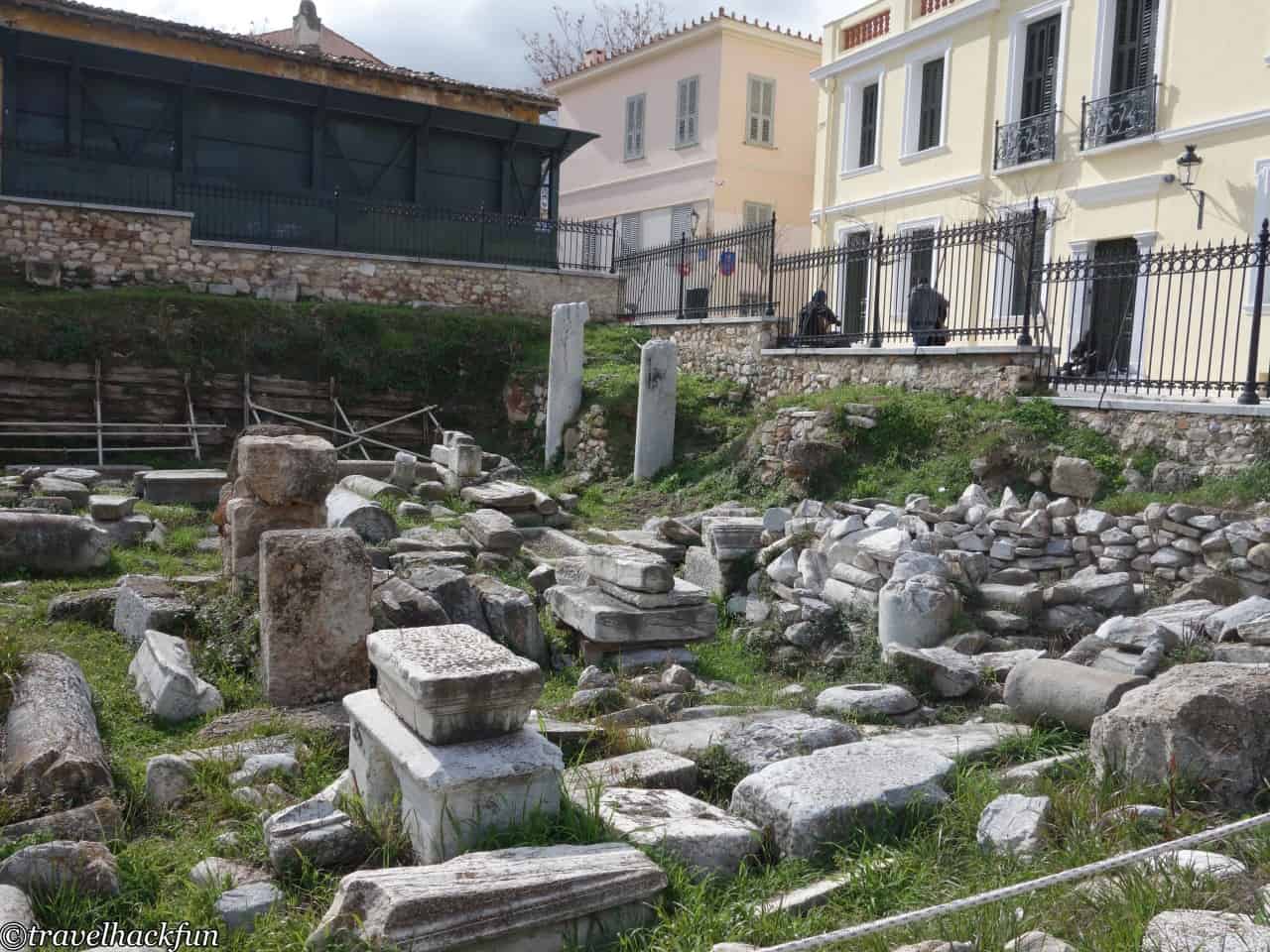
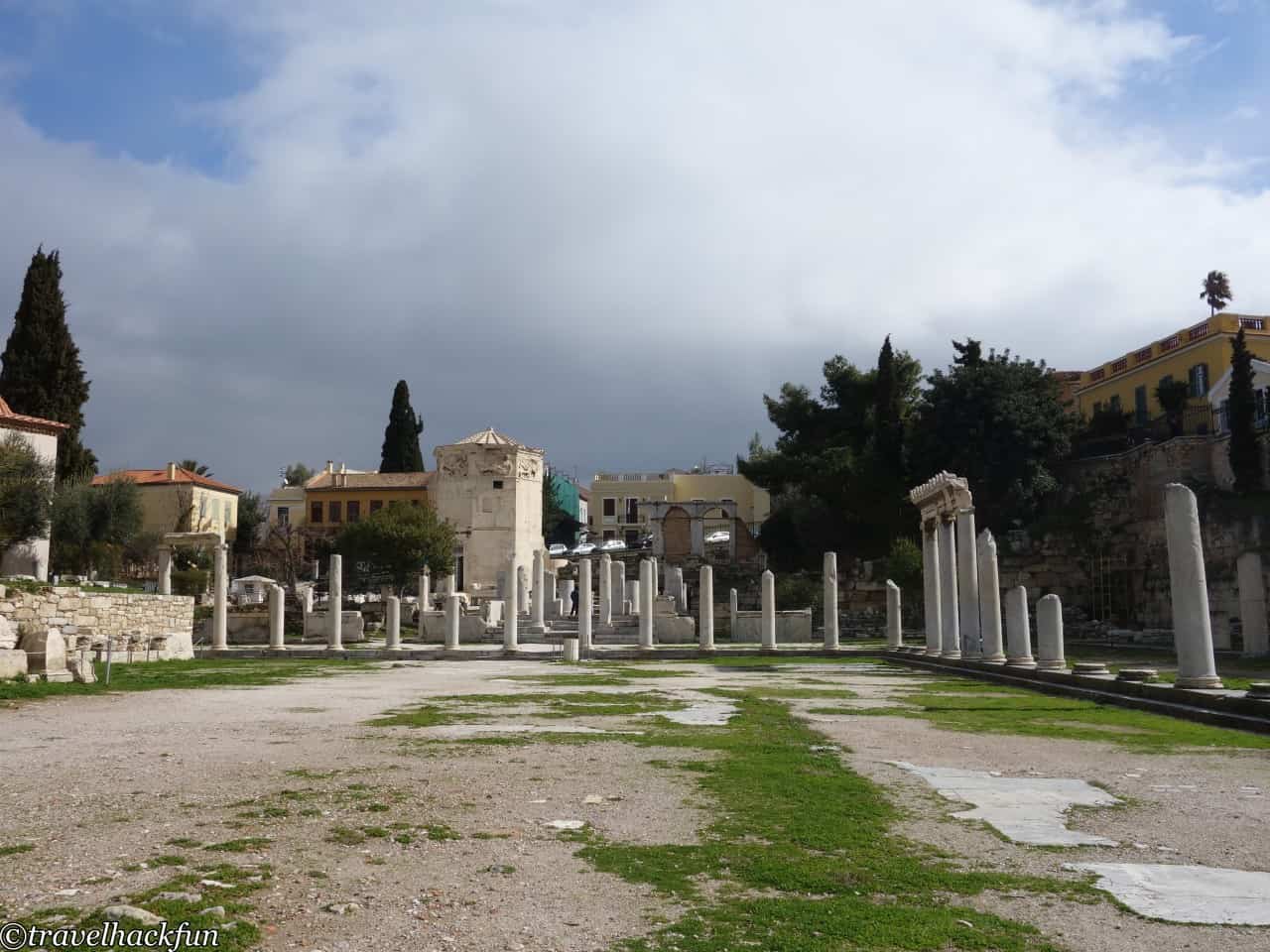
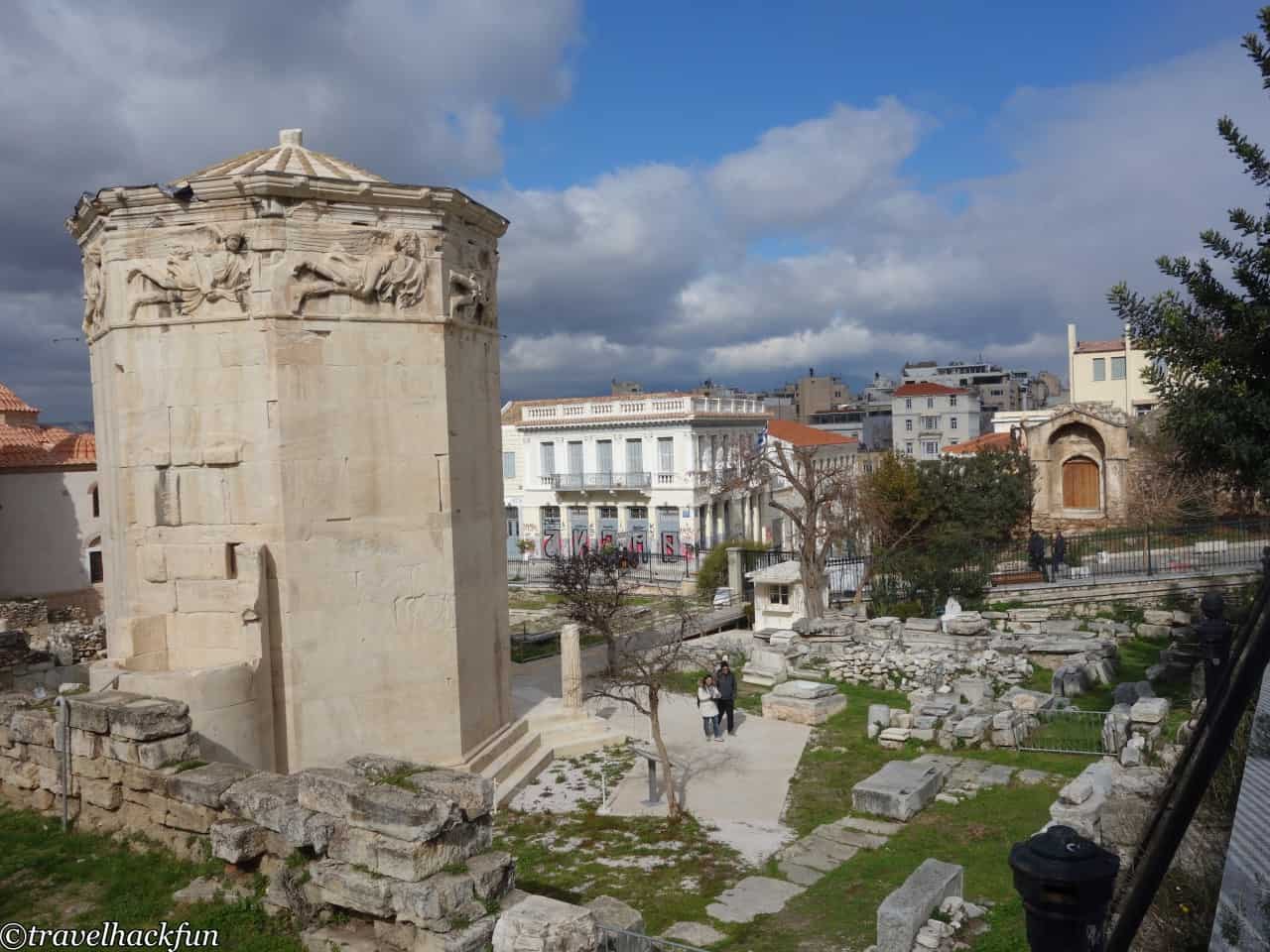


Hadrian's Library
Not far from the Roman Agora is the Hadrian's Library, built by the Roman Emperor Hadrian in 132 AD. This library served not only as a repository for books but also as a center for academic research and philosophical discussions. It represents the cultural and intellectual pursuits of Athens during the ancient Roman period.
Hadrian's Library Tickets
The original structure of this library was quite grand, featuring a row of tall Corinthian columns on its facade, reflecting the typical Roman architectural style. While much of the library has collapsed over time, the most well-preserved part is the high wall on the western side. Despite only one intact wall remaining today, it was an impressive structure in ancient times. From a distance, you can still faintly see its elongated, massive footprint, and during the Byzantine Empire, there were even three churches constructed inside it, showcasing its vast size. Inside the original building, there were book storage rooms, reading areas, classrooms, and a large courtyard.
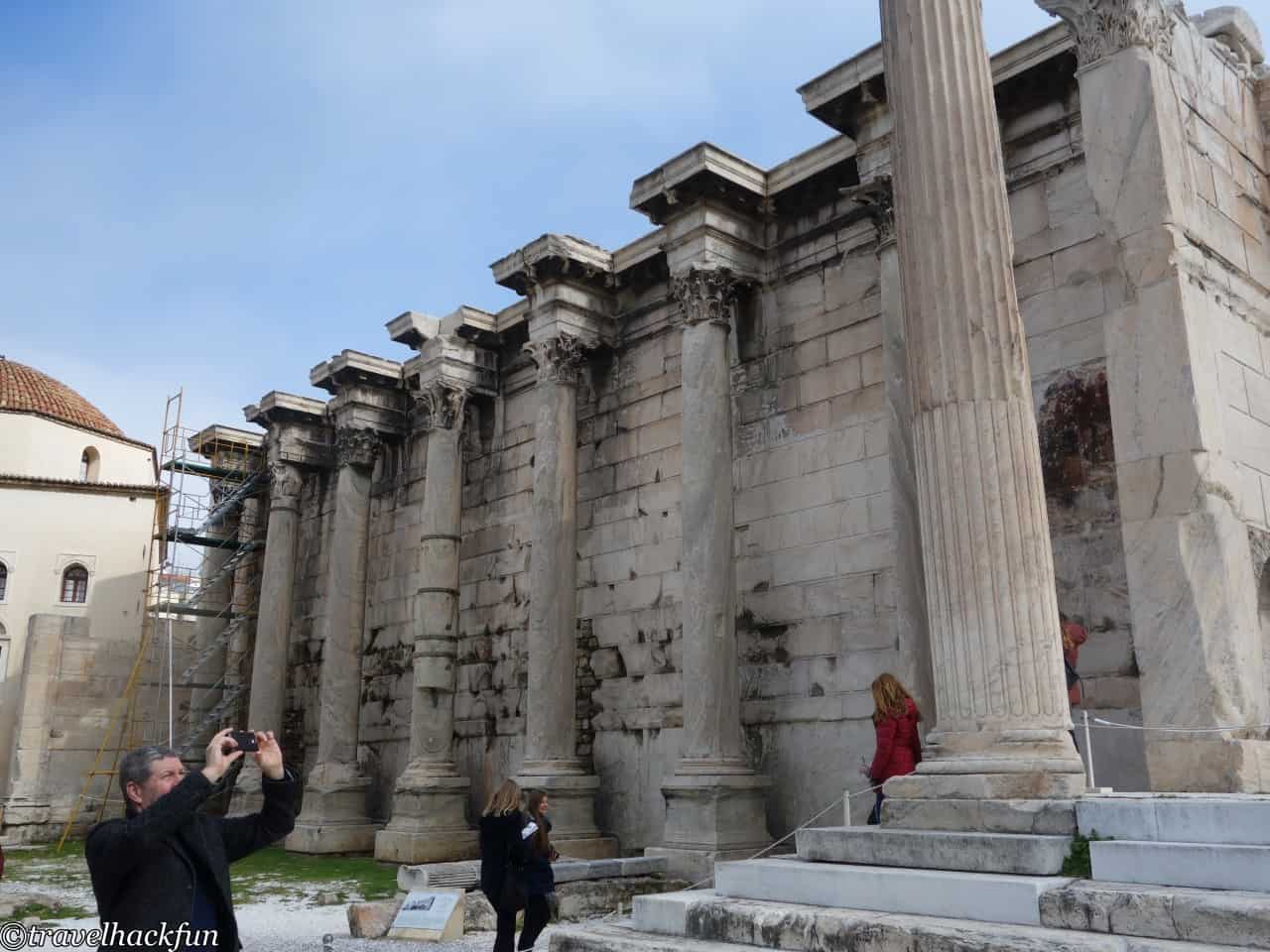


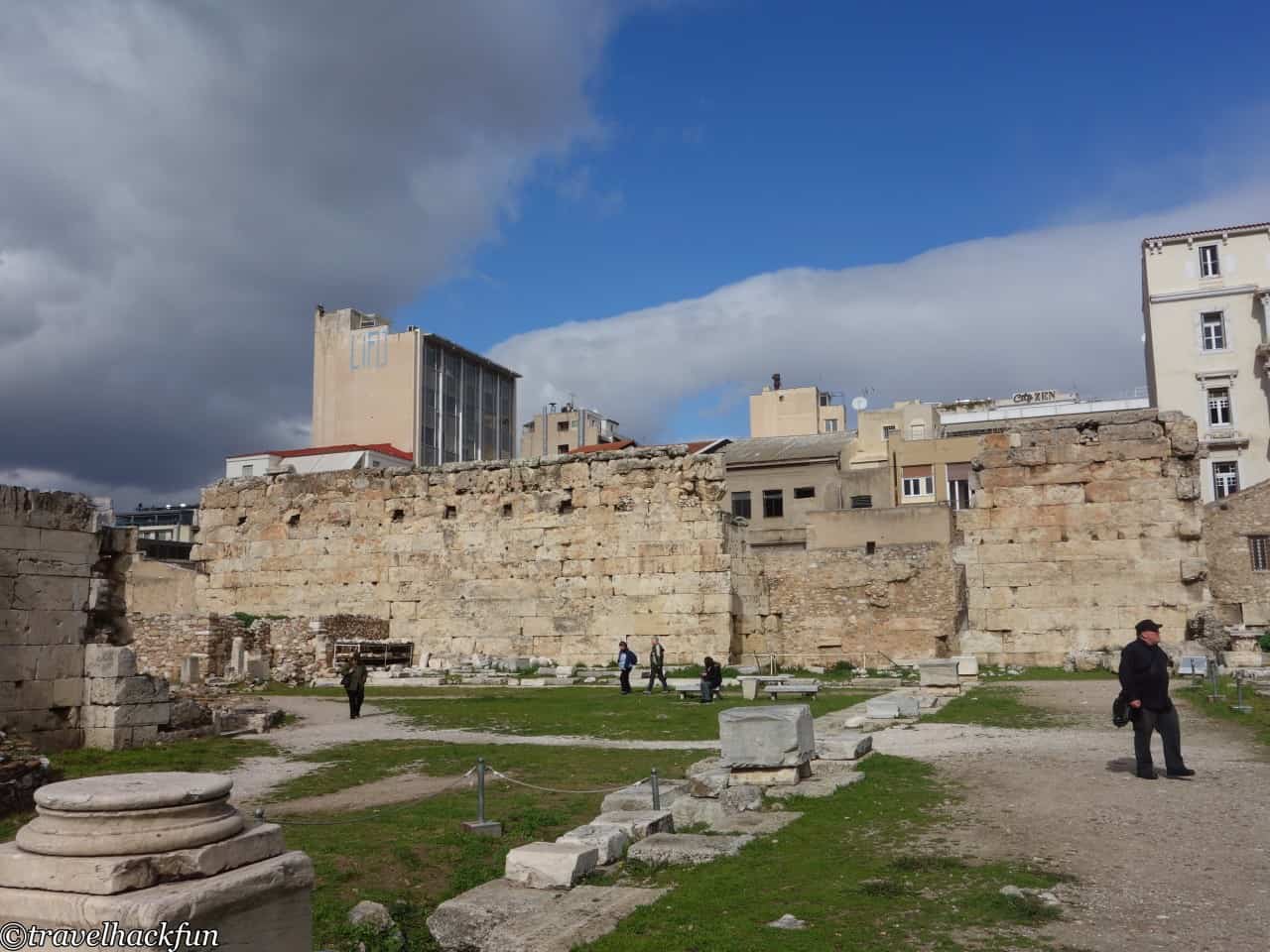

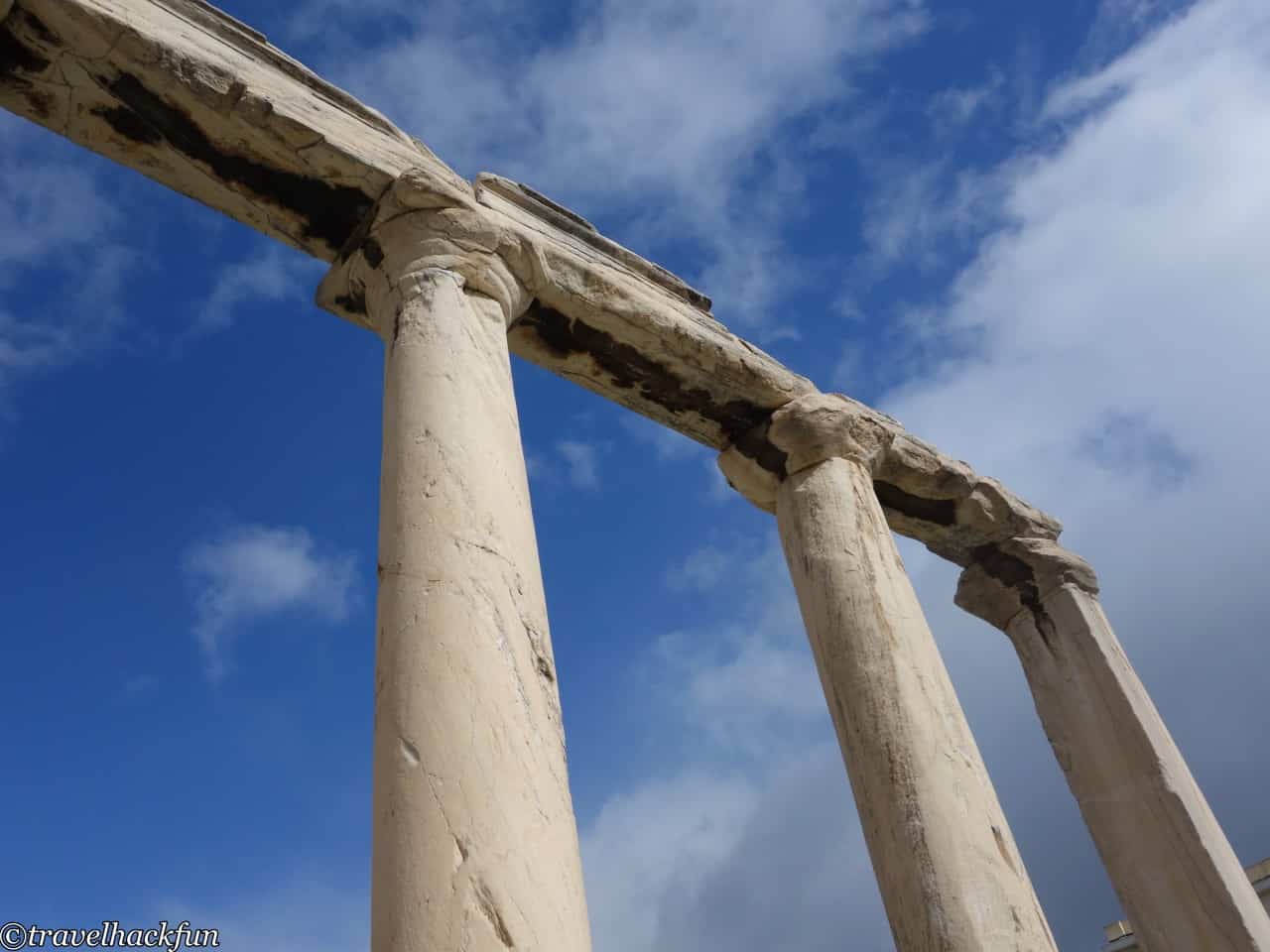
Ancient Agora
The Ancient Agora of Athens, like the Roman Agora, is located at the foot of the Acropolis, and its entrance ticket is included in the Acropolis combo ticket. Compared to the Roman Agora, the Ancient Agora covers a much larger area. In ancient Greece, the term "agora" actually referred to the city center, and its history can be traced back to the 6th century BC. It witnessed the development of Athens' democratic system and the rise of philosophical thought. Philosophers, politicians, and citizens of ancient Greece gathered here to discuss public affairs, making it the heart of Athenian social life at that time.
Ancient Agora Tickets
The Stoa of Attalos
The Stoa of Attalos is one of the prominent structures in the Ancient Agora. When visitors enter the Ancient Agora, they will notice that the Stoa of Attalos looks particularly modern. This is because it was reconstructed in the 20th century, thanks to a donation from the first American millionaire to fund such a reconstruction. It has been transformed into a two-story building, and inside, you'll find the Agora Museum, which showcases various ancient artifacts unearthed from the marketplace.
The open colonnades of the Stoa of Attalos feature many ancient Greek sculptures. Inside the Agora Museum, there are explanations in English that provide insights into the history of the Ancient Agora. The museum's exhibits primarily consist of pottery, bronze items, and other artifacts dating from the 5th to the 7th century.
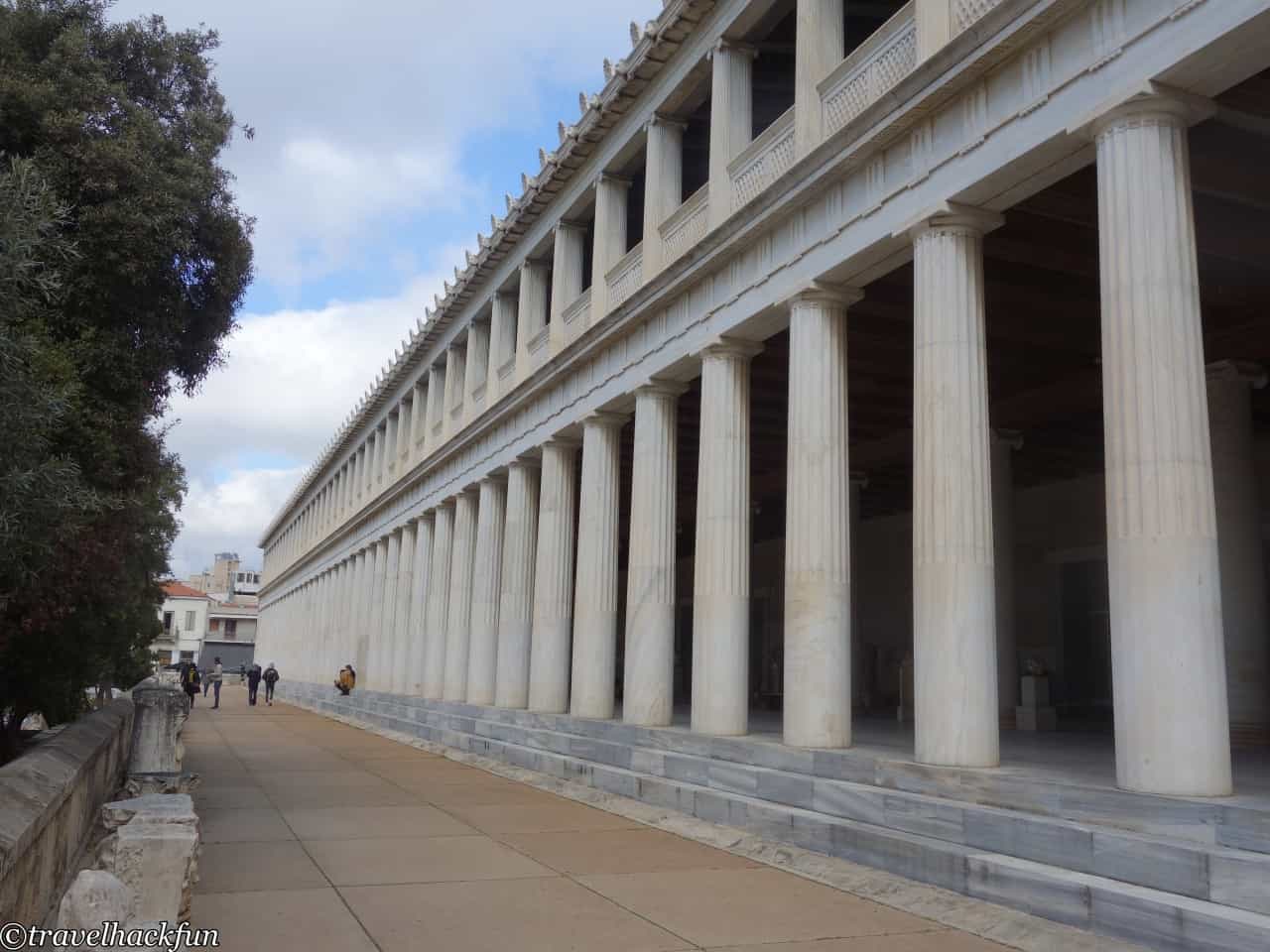

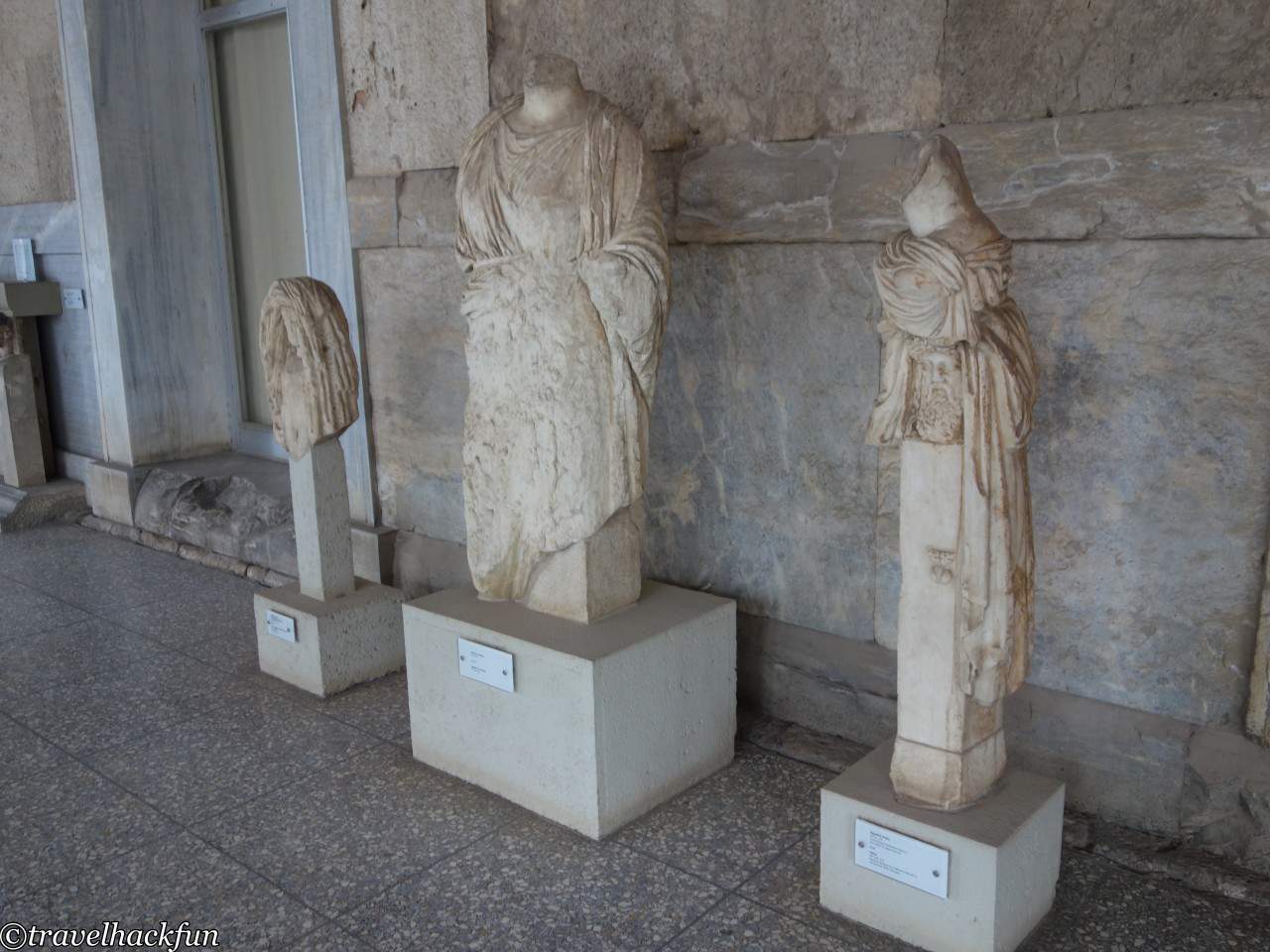
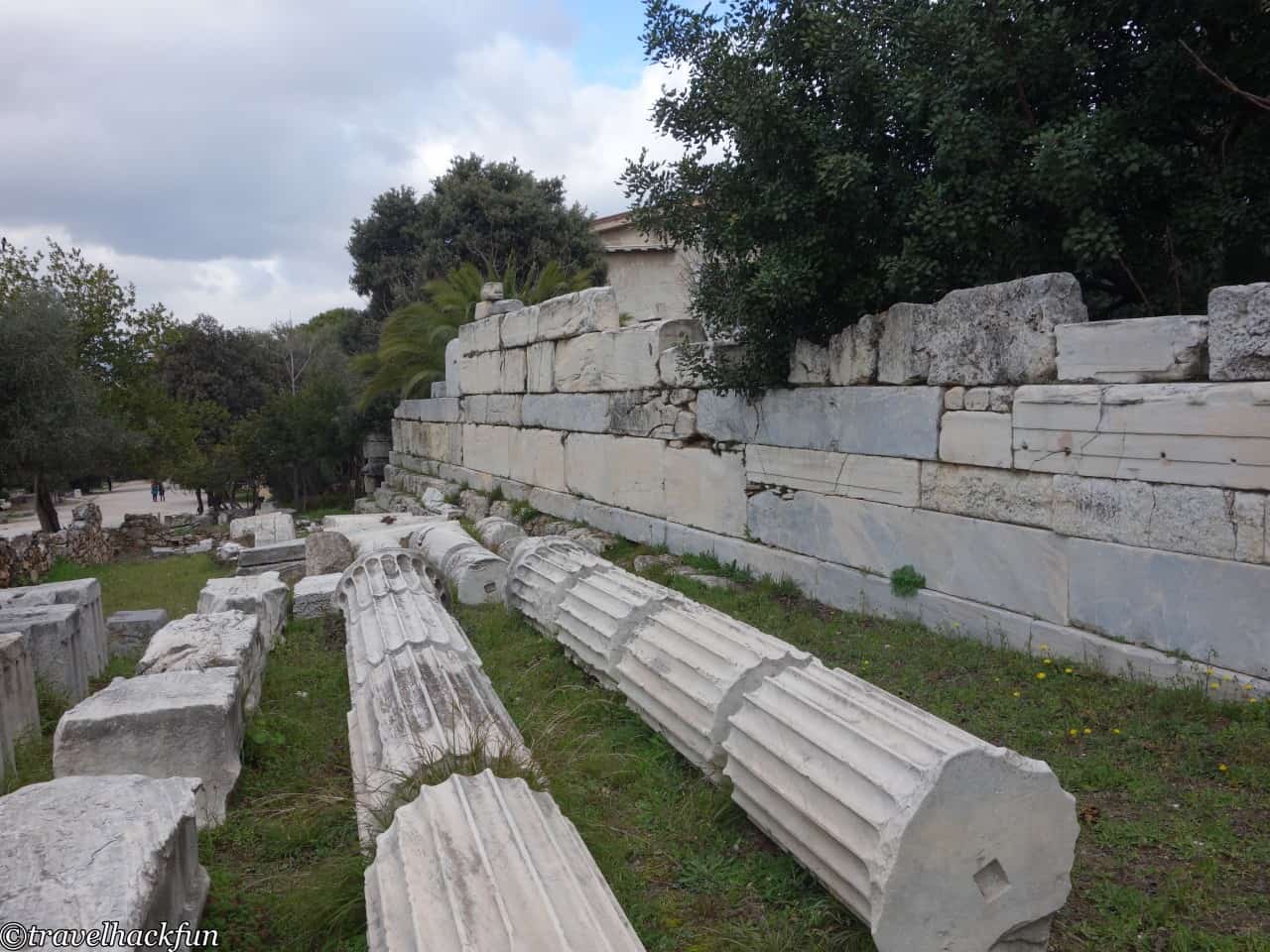
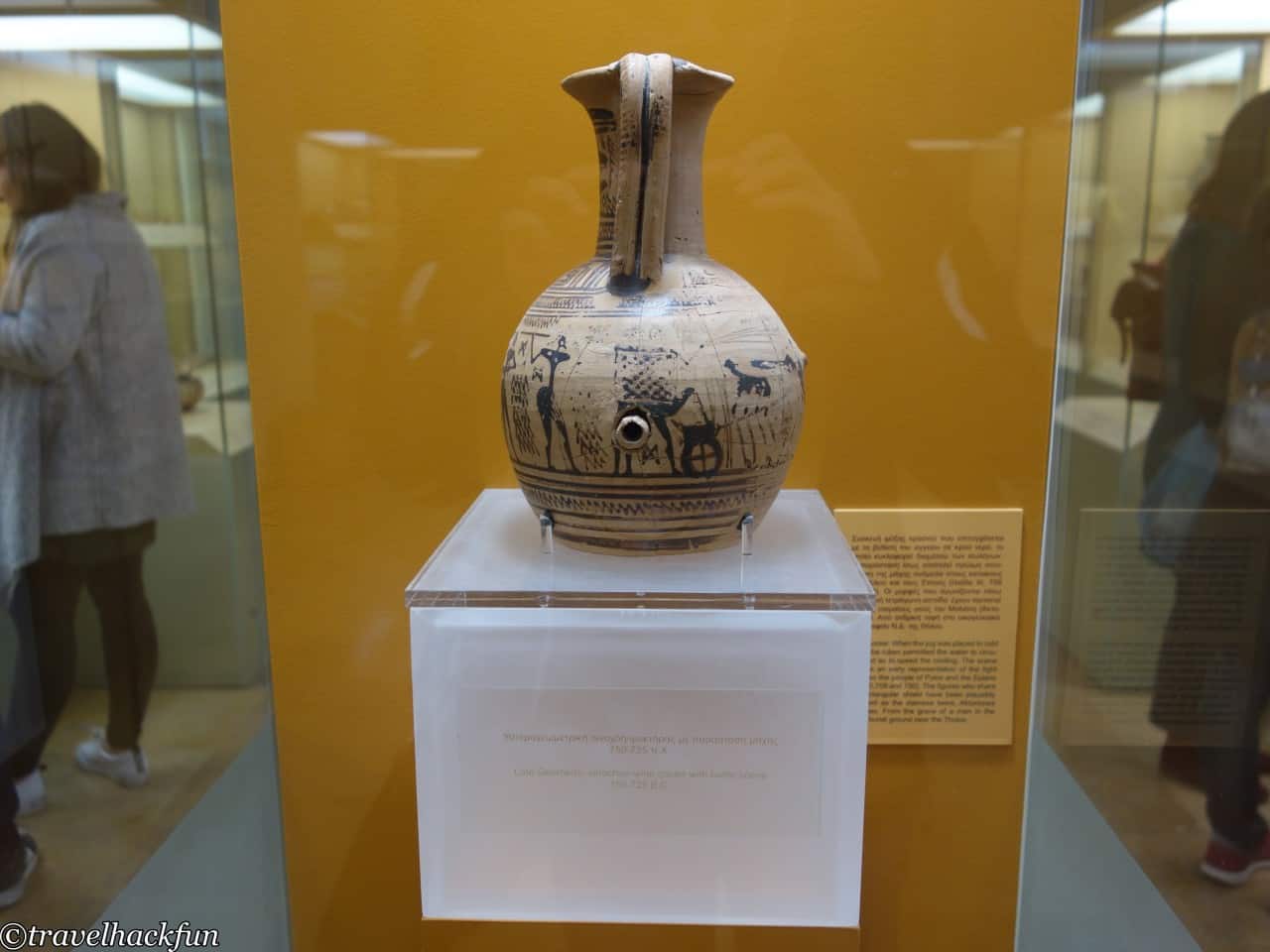

Ancient Agora Archaeological Site
Next, we can explore the entire archaeological site of the Ancient Agora. The site is quite extensive and contains a variety of ruins, including houses, shops, squares, and more. With a bit of imagination, we can try to envision the bustling scenes from millennia ago. Walking around and reaching higher ground allows for a better panoramic view of the Ancient Agora.
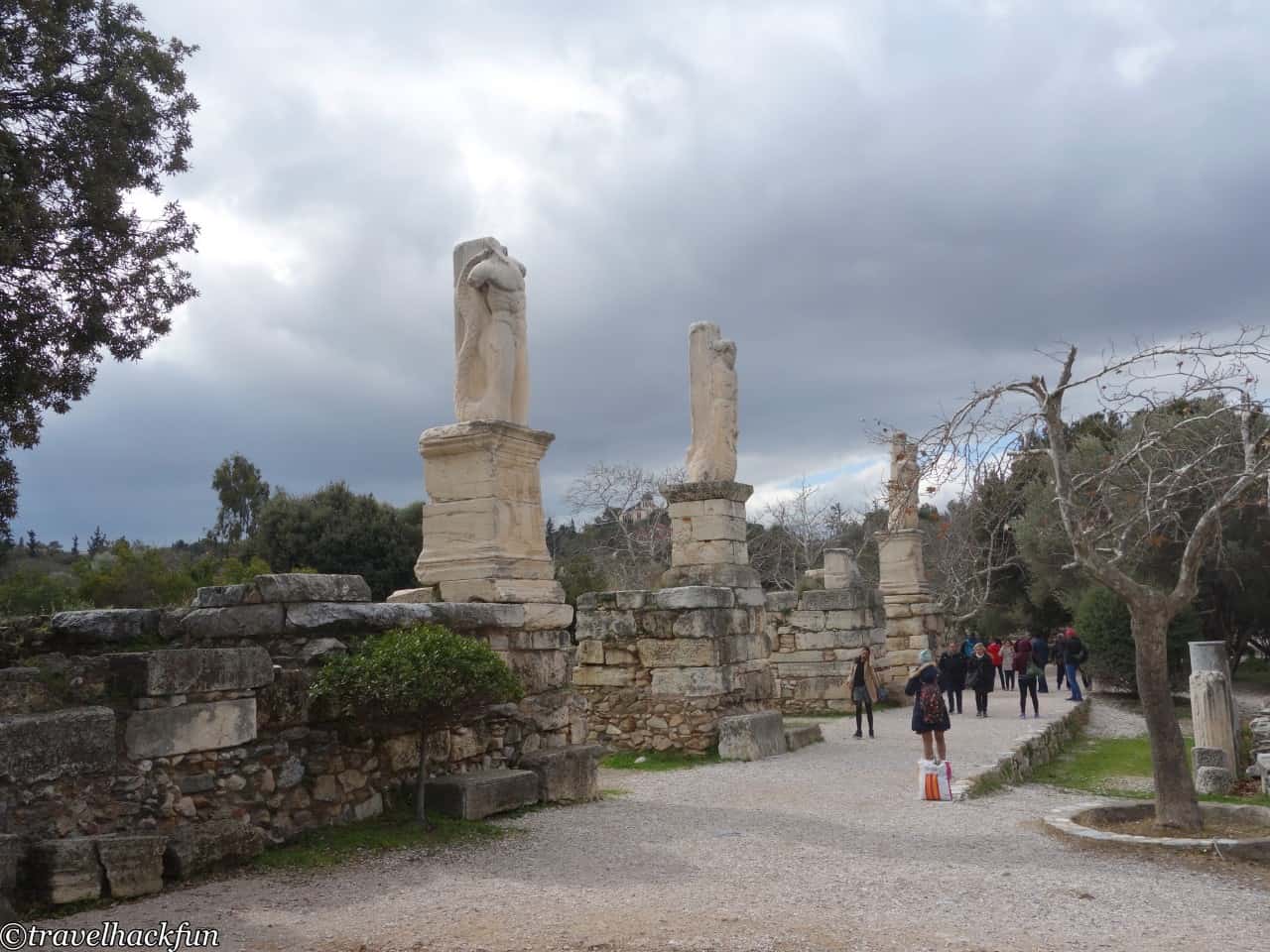
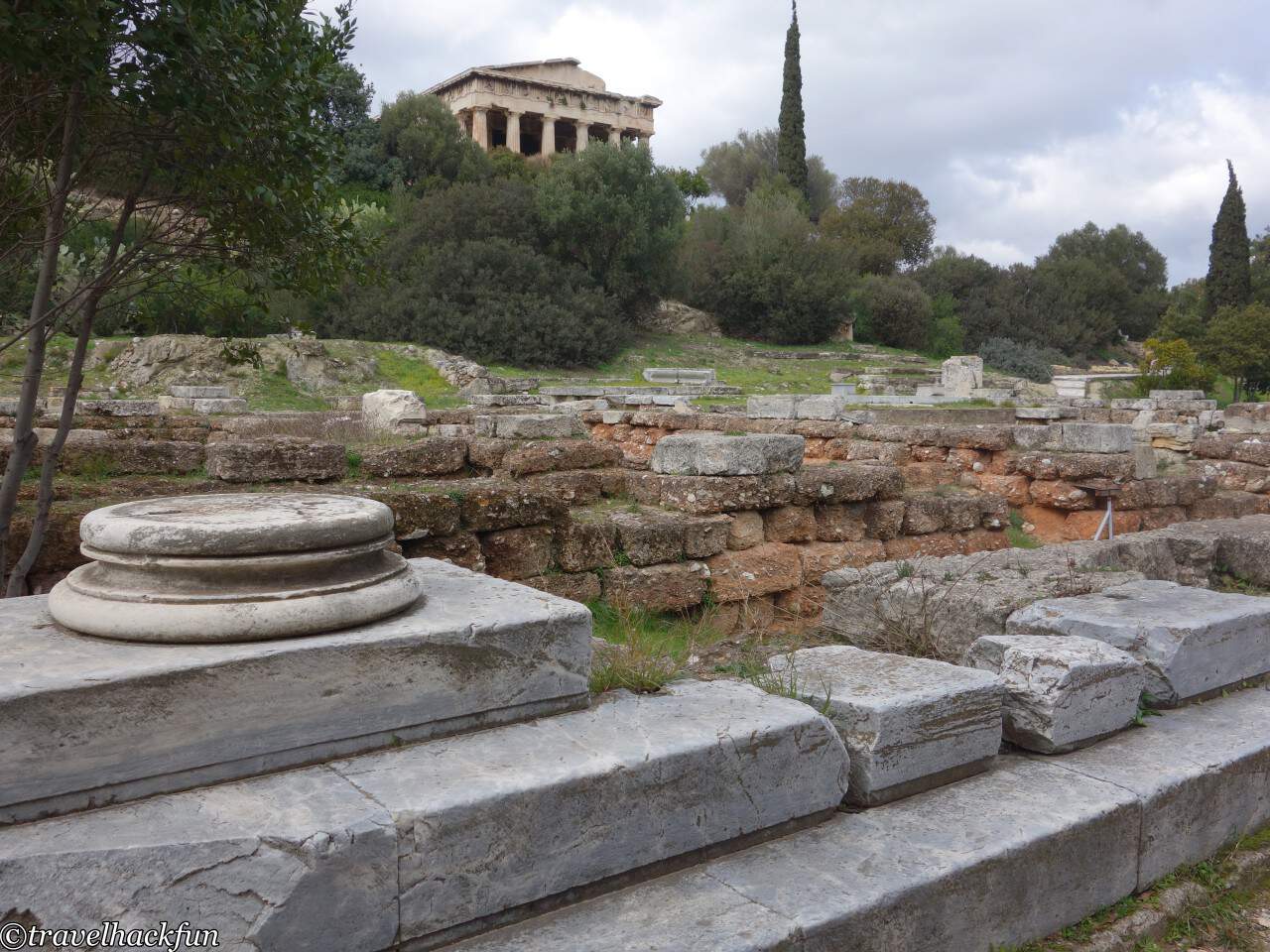
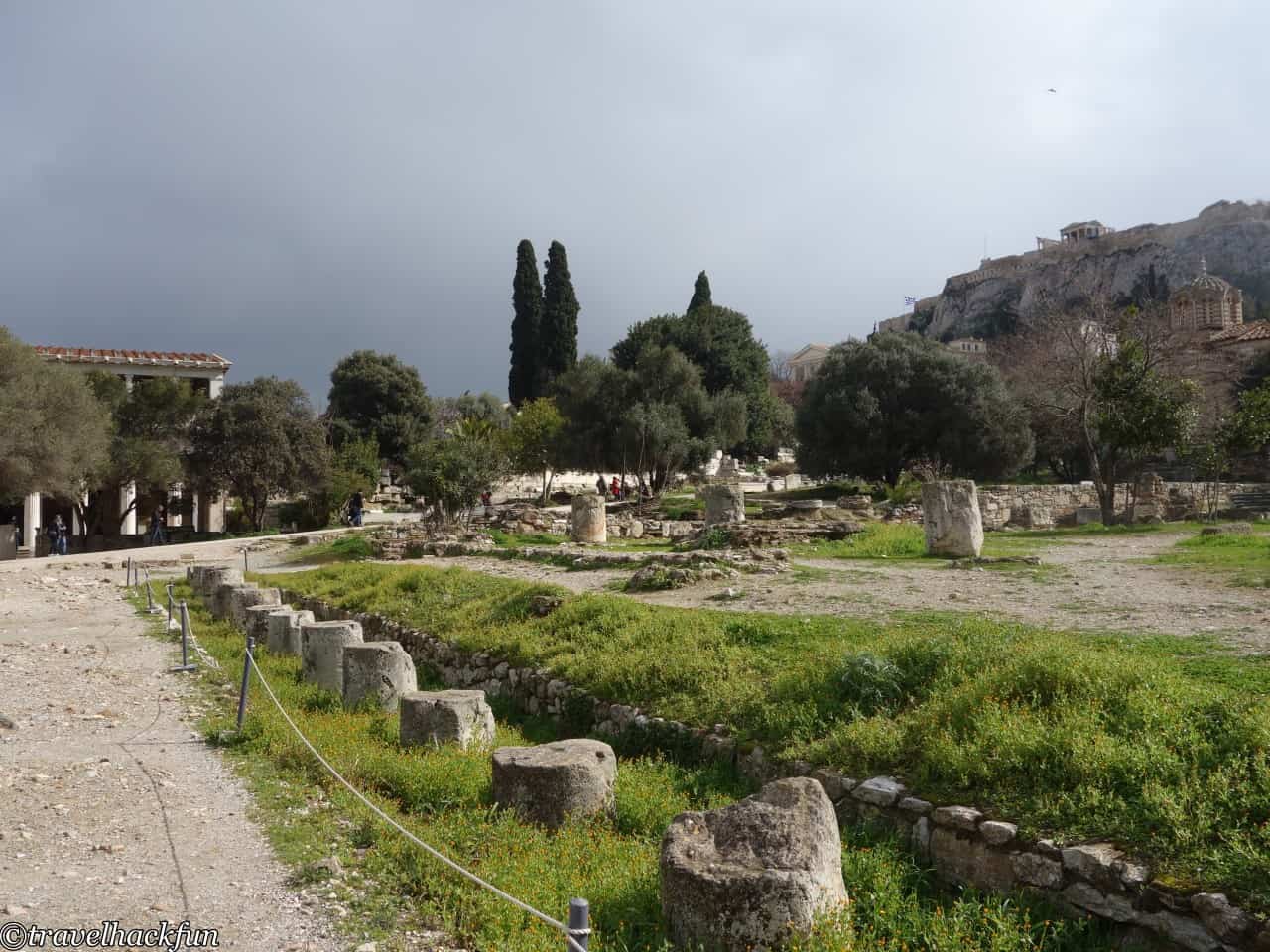
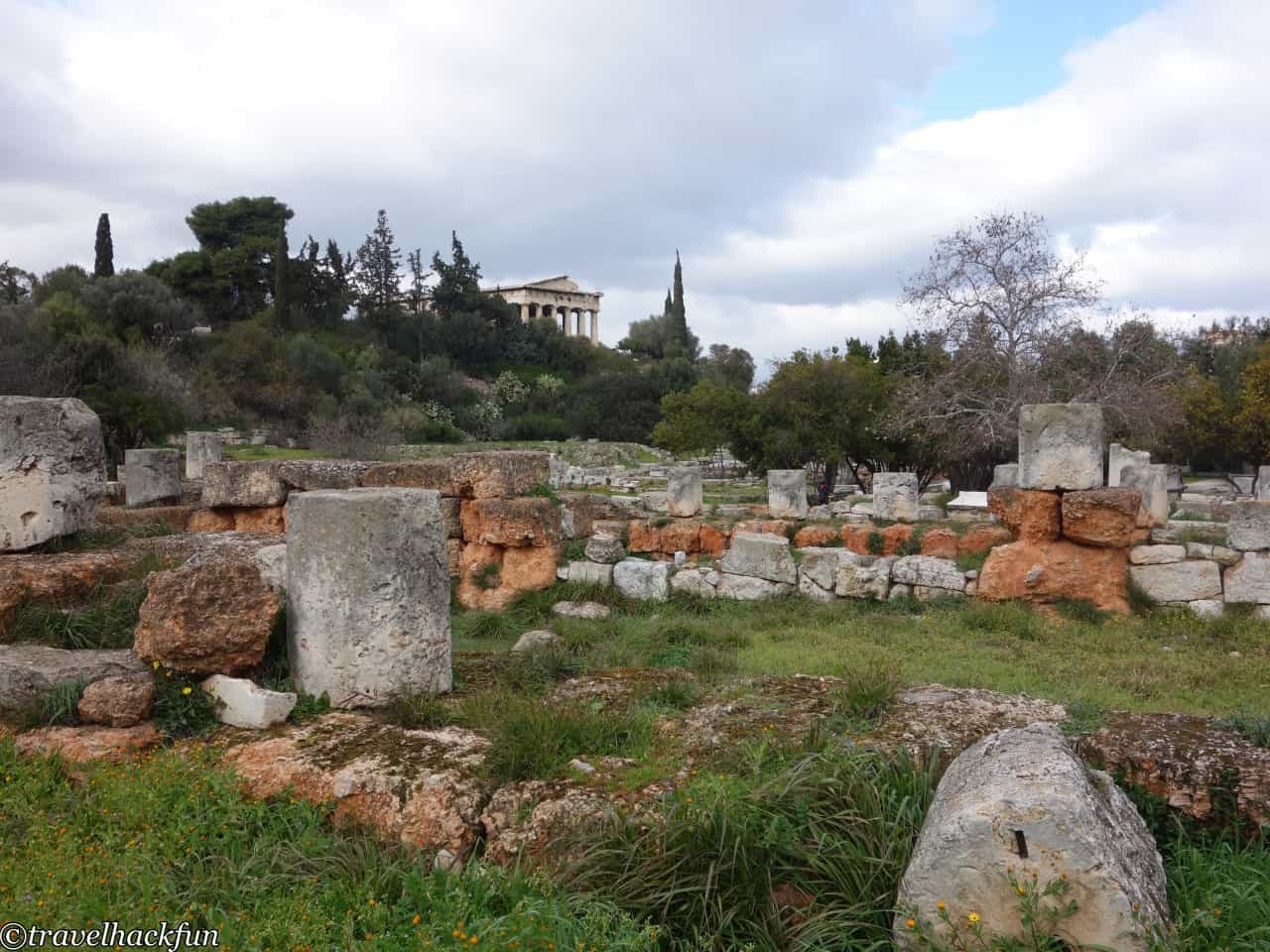
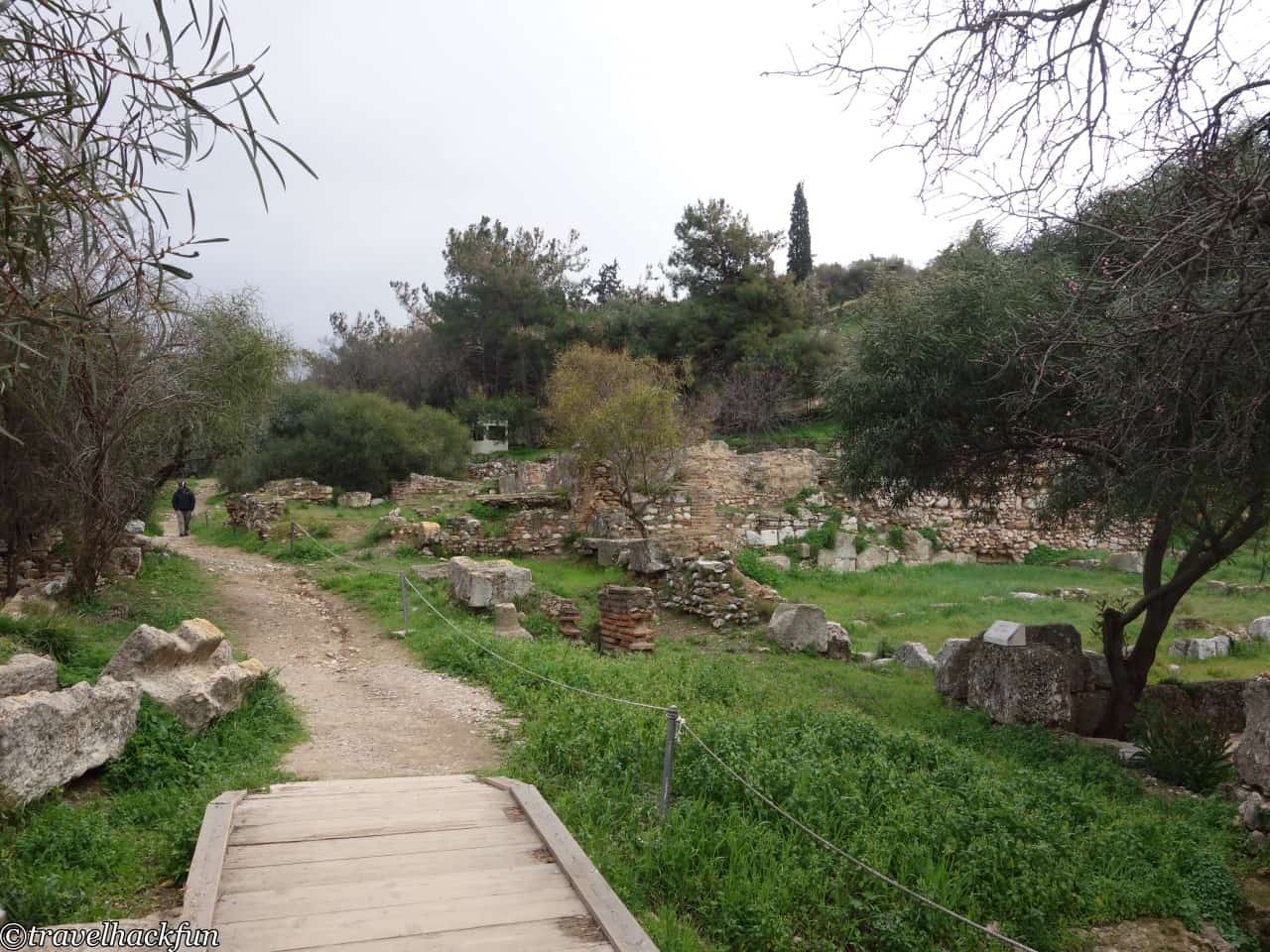
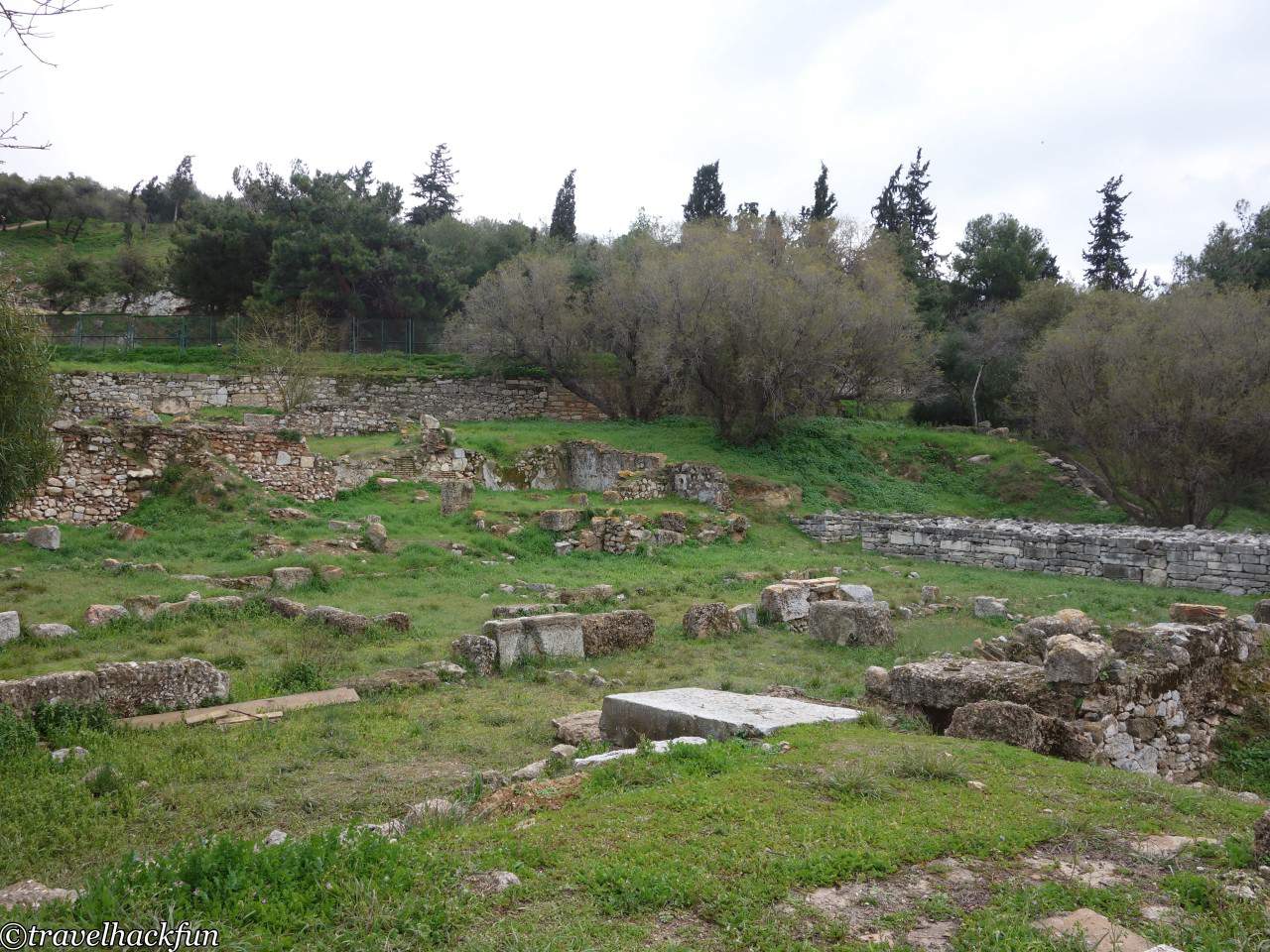
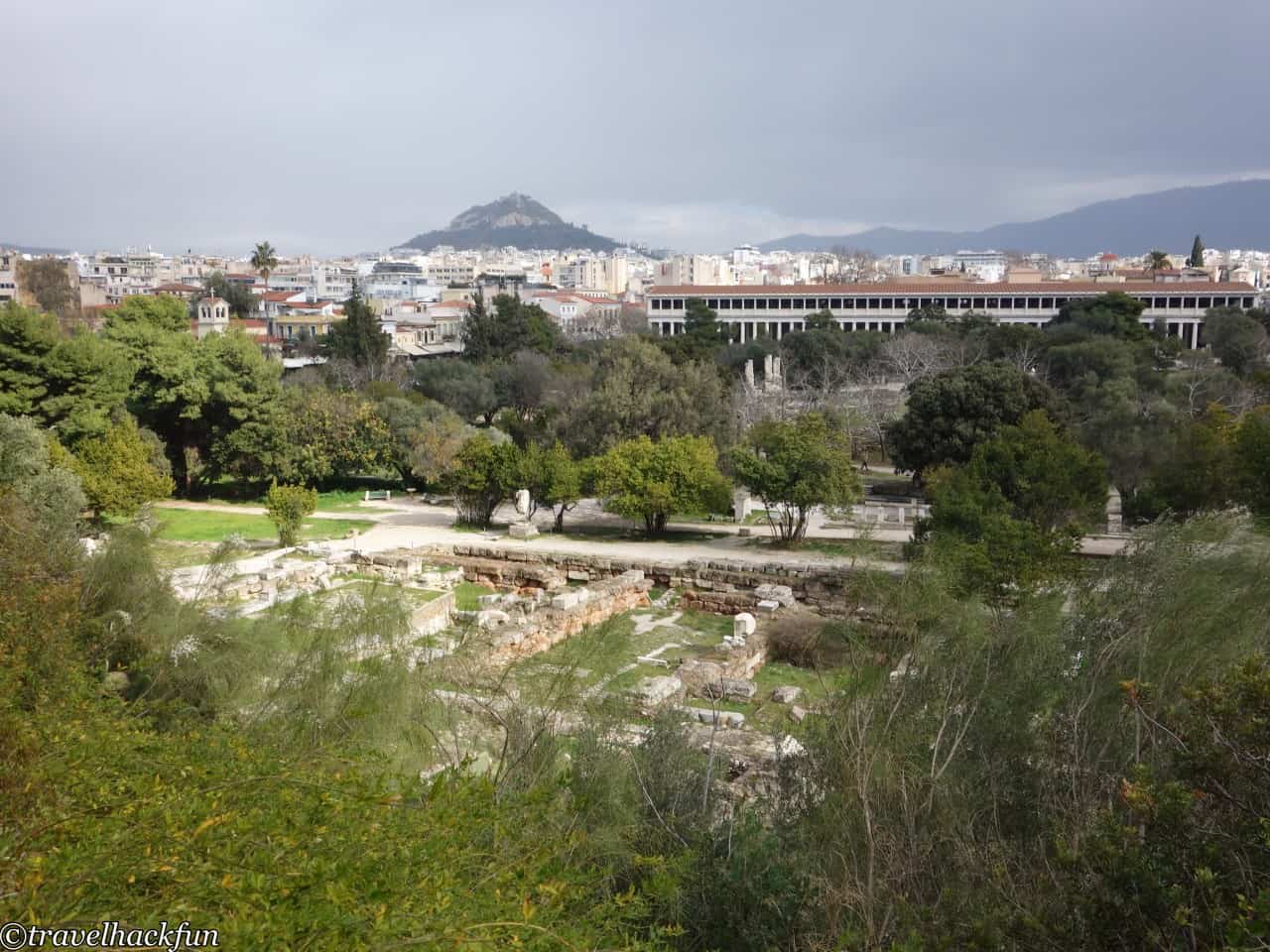
The Temple of Hephaestus
The Temple of Hephaestus, also known as the Hephaisteion, is situated on a small hill next to the marketplace. This temple was built in the 7th century and remarkably remains well-preserved to this day. Hephaestus, the god of craftsmanship and fire, is depicted in the carvings on the temple's pediments, which depict nine stories related to him. Despite his ugliness, Hephaestus was revered for his skills and craftsmanship, making this temple a significant tribute to his divine attributes.

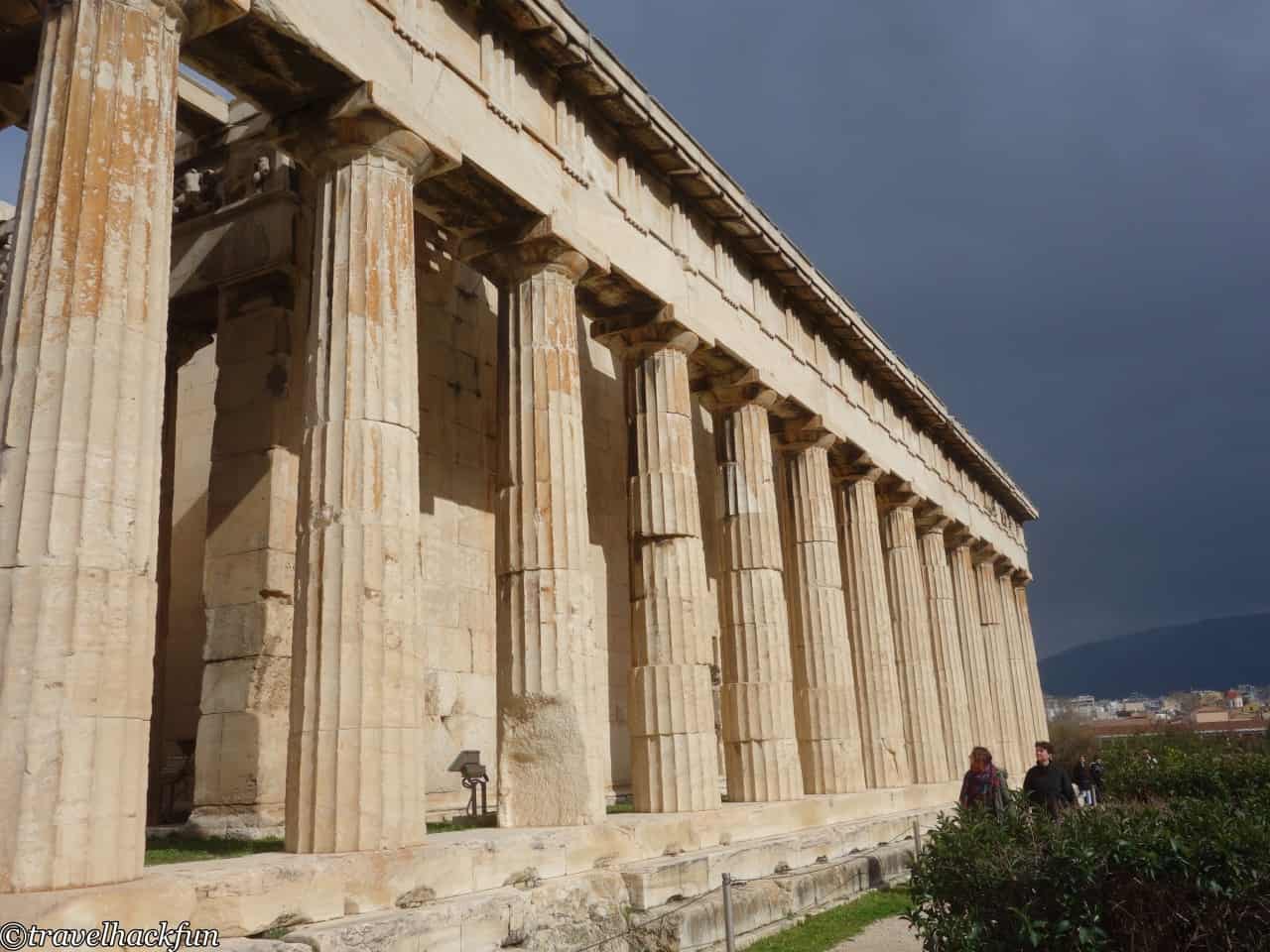
Holy Apostles
The Church of the Holy Apostles, located behind the archaeological site of the Ancient Agora, is a Byzantine-style building constructed in a later period. The presence of this church indicates that the area around the Ancient Agora remained active and underwent continuous development over time. It serves as a testament to the enduring history and evolution of the marketplace and its surroundings.
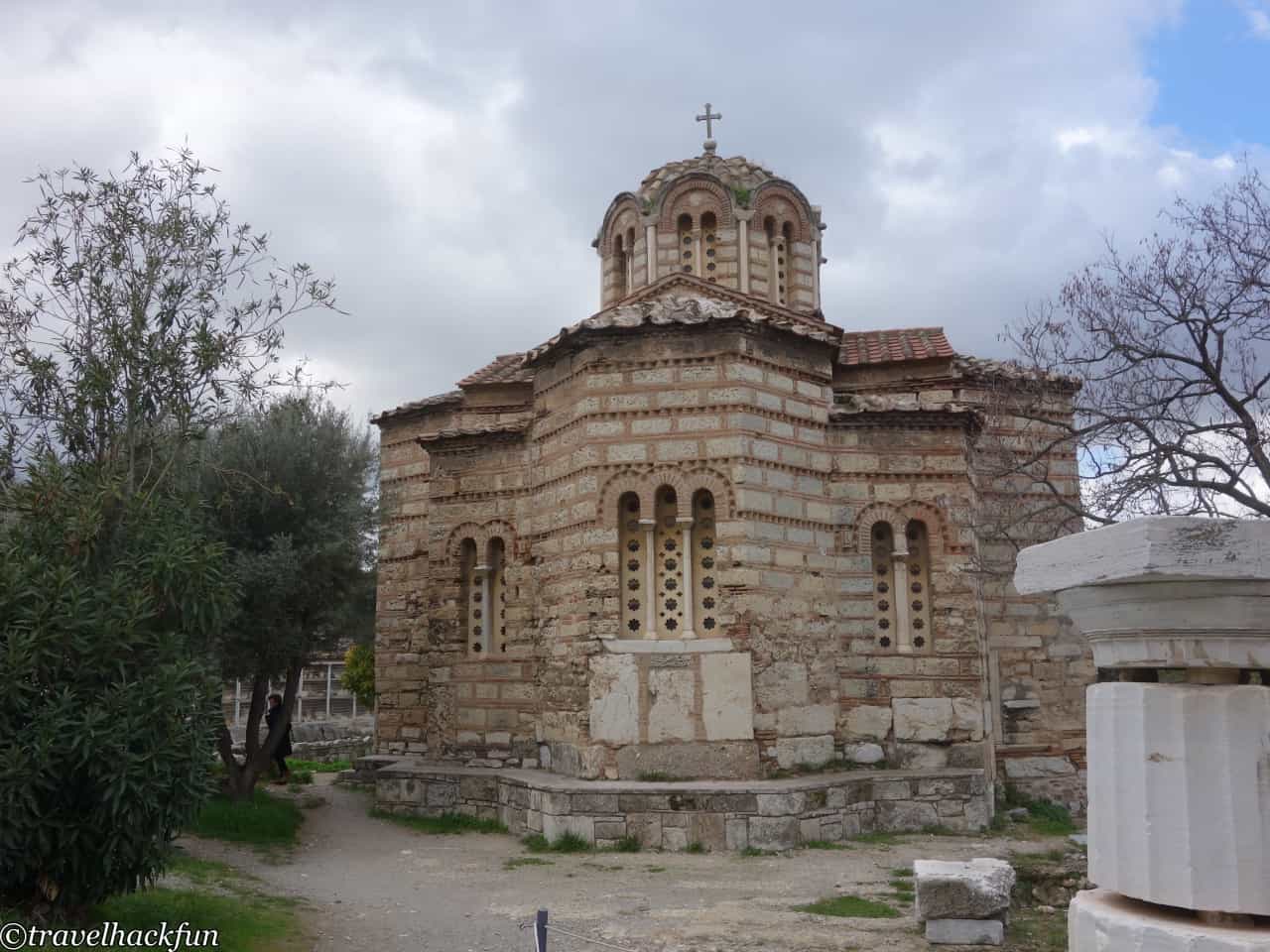
Kerameikos
Kerameikos was the pottery and ceramics production center of ancient Athens. During the ancient Greek period, it served not only as a hub for pottery production but also as one of the main entrances to Athens. Kerameikos is divided into inner and outer areas, with the outer area mainly consisting of burial grounds. The ancient cemetery features many elaborately decorated tombstones and tombs, providing insights into ancient Greek beliefs about death and burial rituals. A visit to Kerameikos allows you to explore these aspects of Greek culture and history.
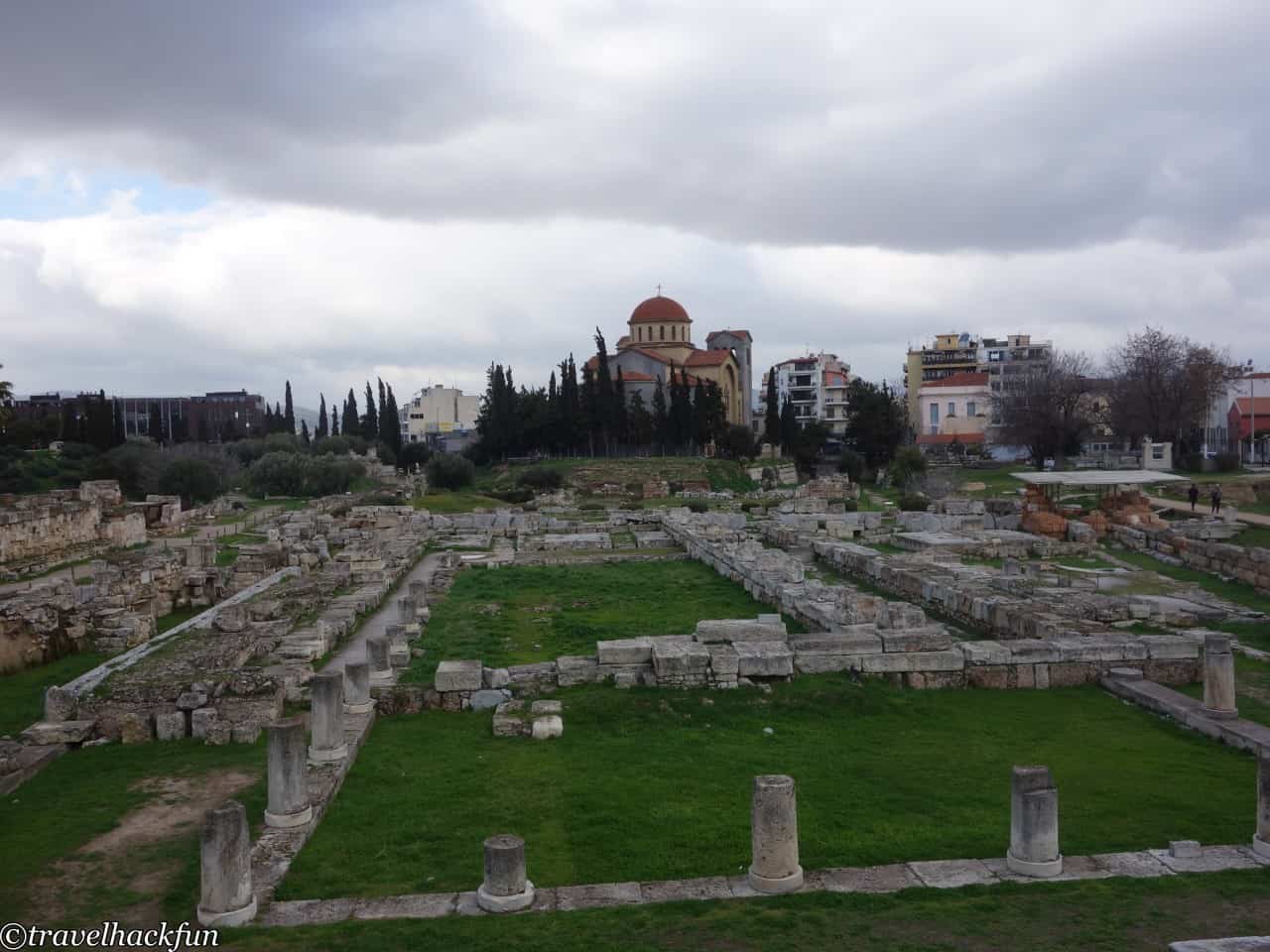
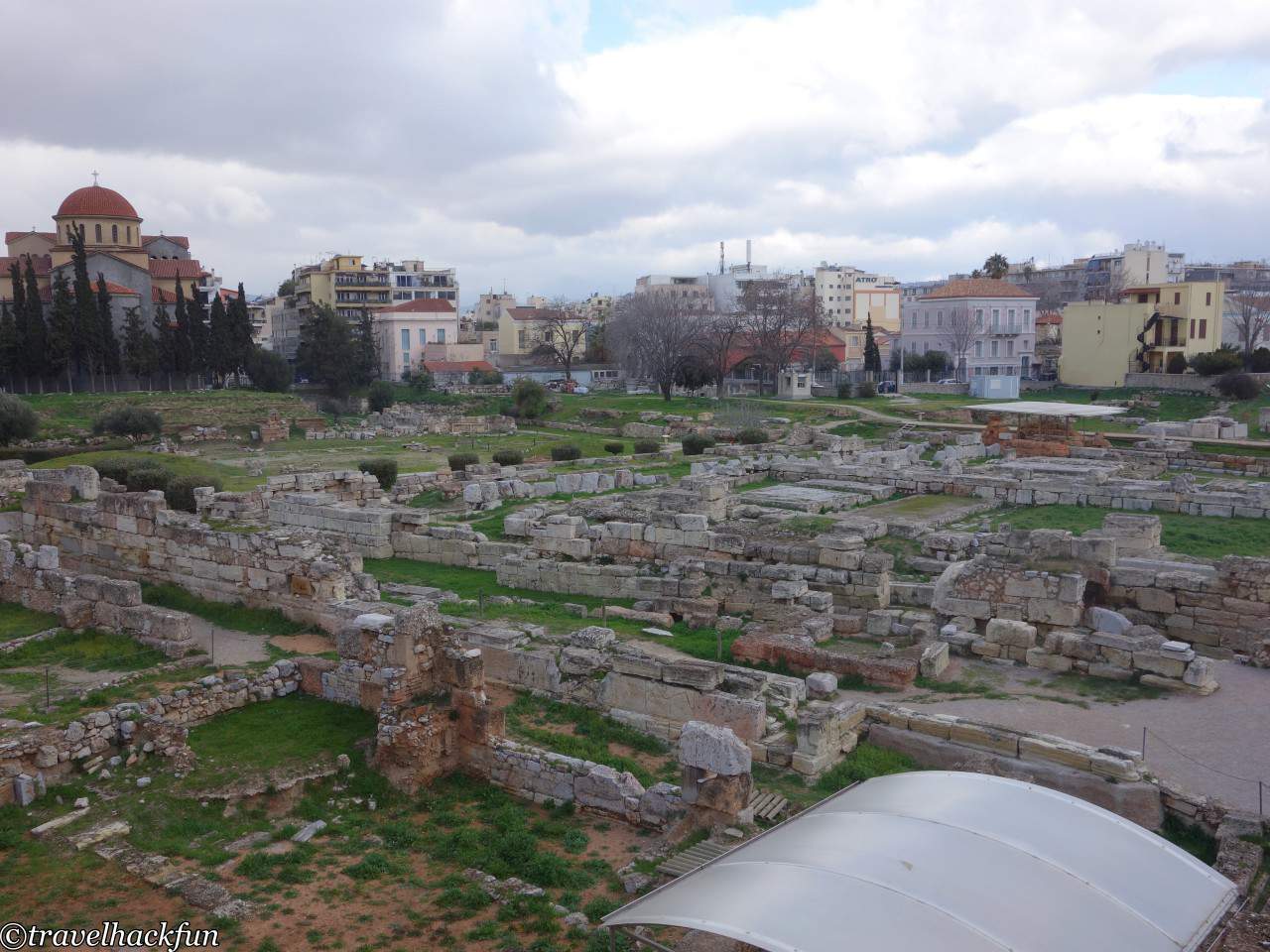
Syntagma Square
Constitution Square, known as Syntagma Square in Greek, is located in the heart of Athens, the capital of Greece. It is one of the most important and famous public squares in the city and is not far from the Temple of Olympian Zeus. The square got its name in 1834 when King Otto I of Greece announced the country's first constitution here. Syntagma Square features prominent landmarks such as the Greek Parliament building, the National Garden of Athens, and the Greek Parliament House. Visitors can witness the changing of the guards ceremony hourly. Nearby, you'll also find the Zappeion Hall, which was formerly used as the Olympic Village and fencing venue during the Olympics and now serves as a conference center.
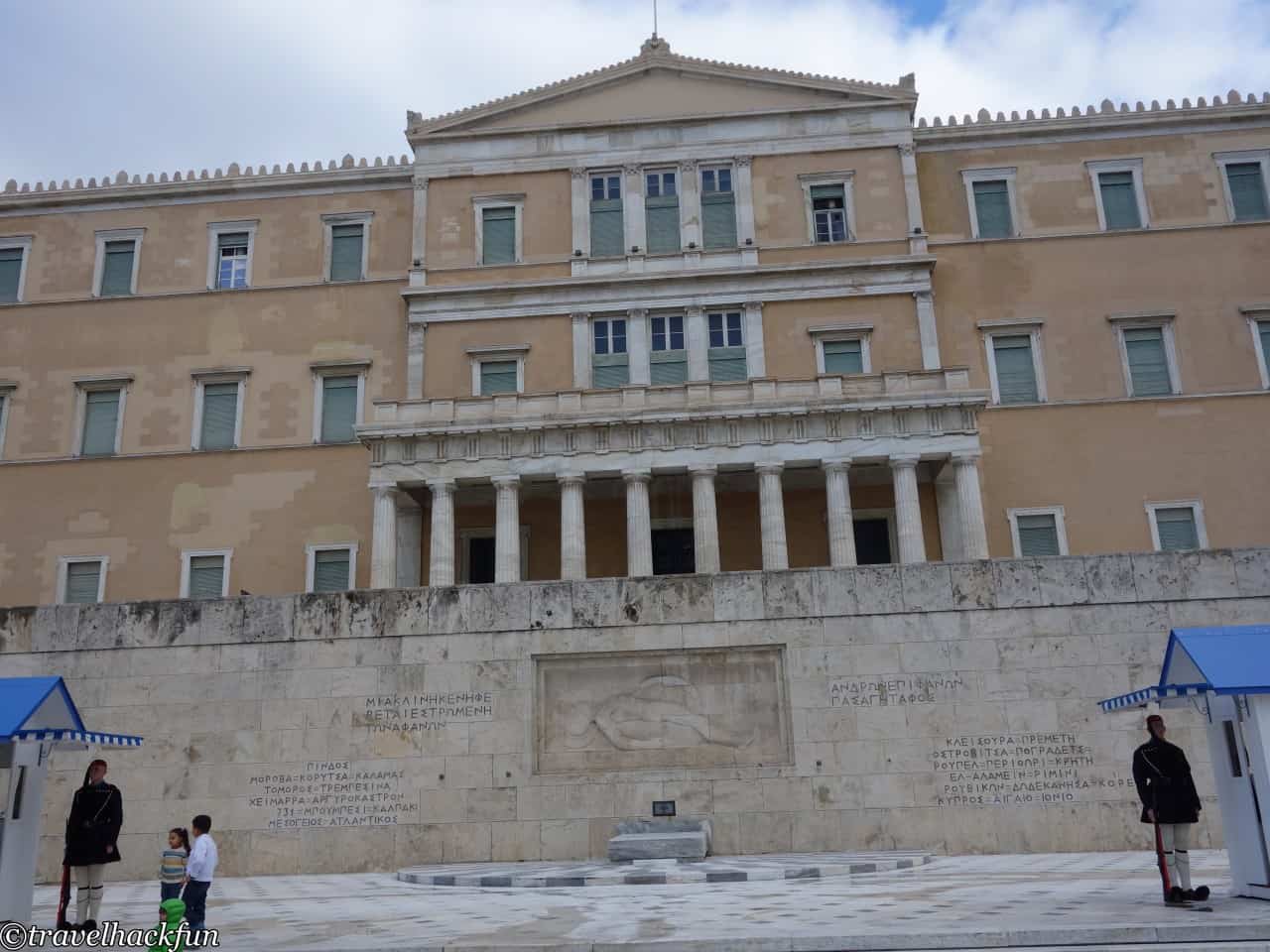
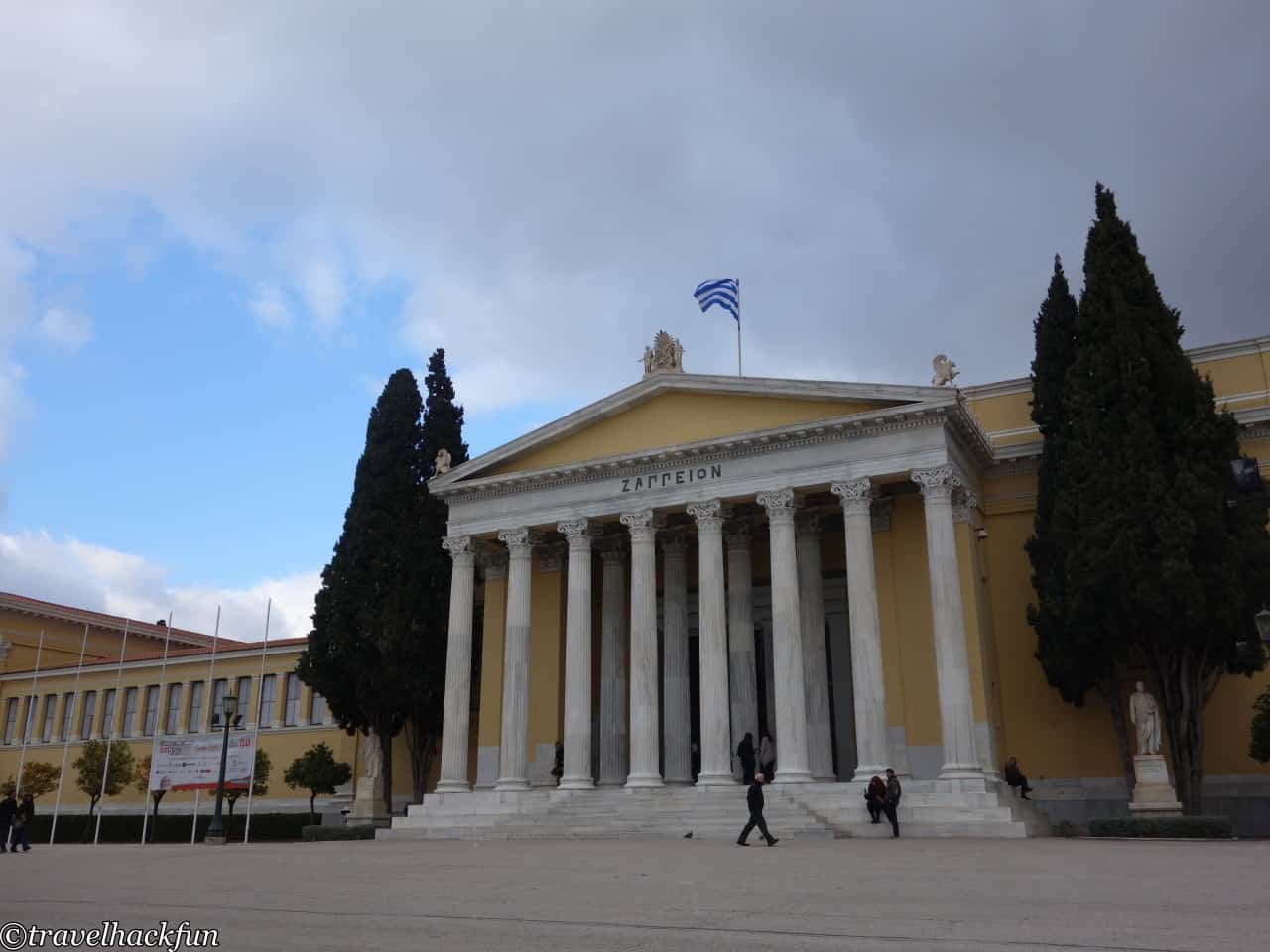
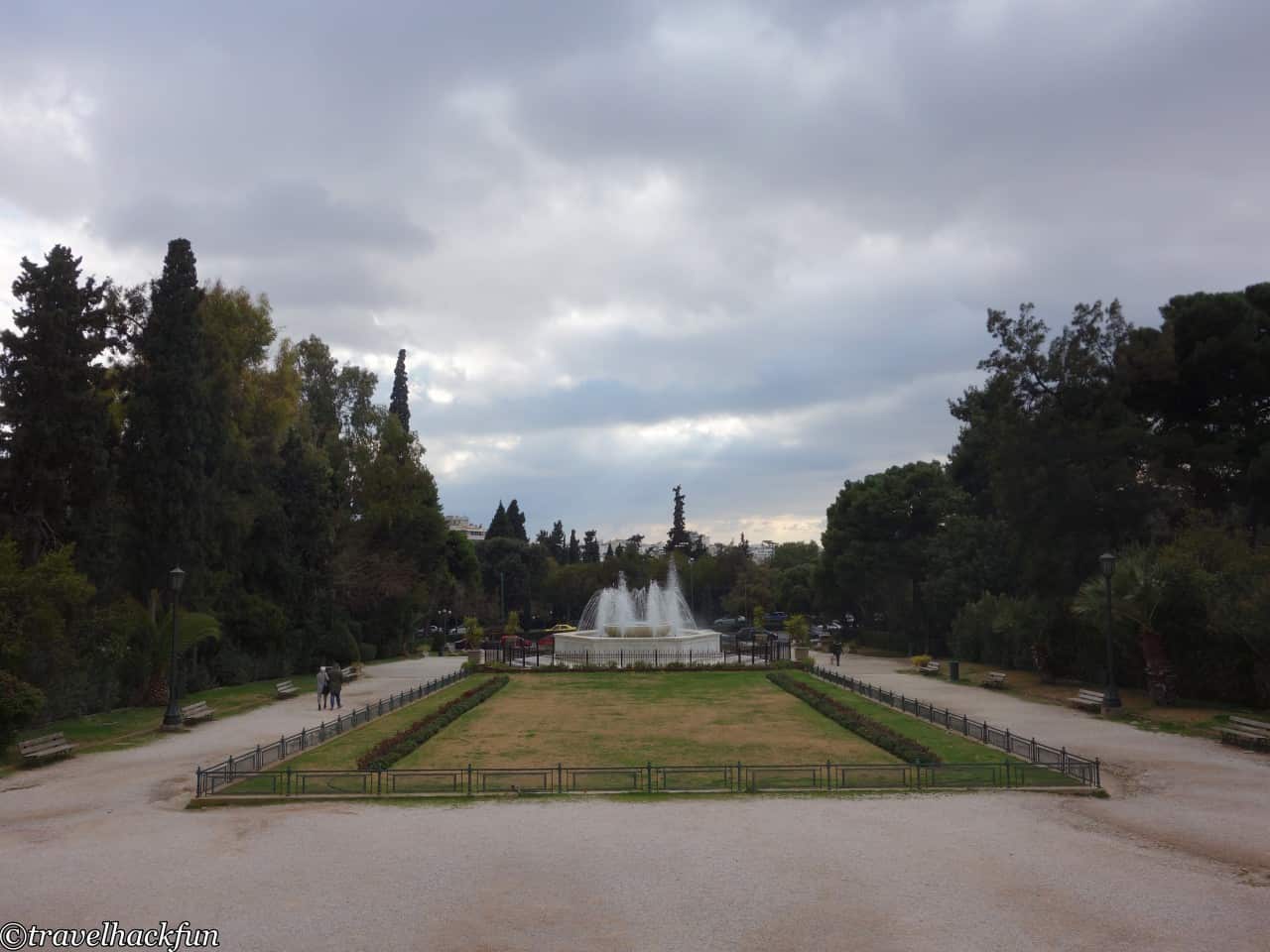
Panathenaic Stadium
Panathenaic Stadium, also known as Kallimarmaro, is the stadium that hosted the first modern Olympic Games in 1896. It is the only stadium in the world constructed entirely of marble. Its history can be traced back to the 6th century BC when it was originally a simple racecourse. Over time, the venue underwent several expansions and renovations. In 1896, for the first modern Olympics, it was transformed into its current form, which has now lasted for over a century. During the 2004 Athens Olympics, due to its historical significance, this stadium was used as the finish line for the marathon race and as the venue for archery competitions.
Panathenaic Stadium Tickets


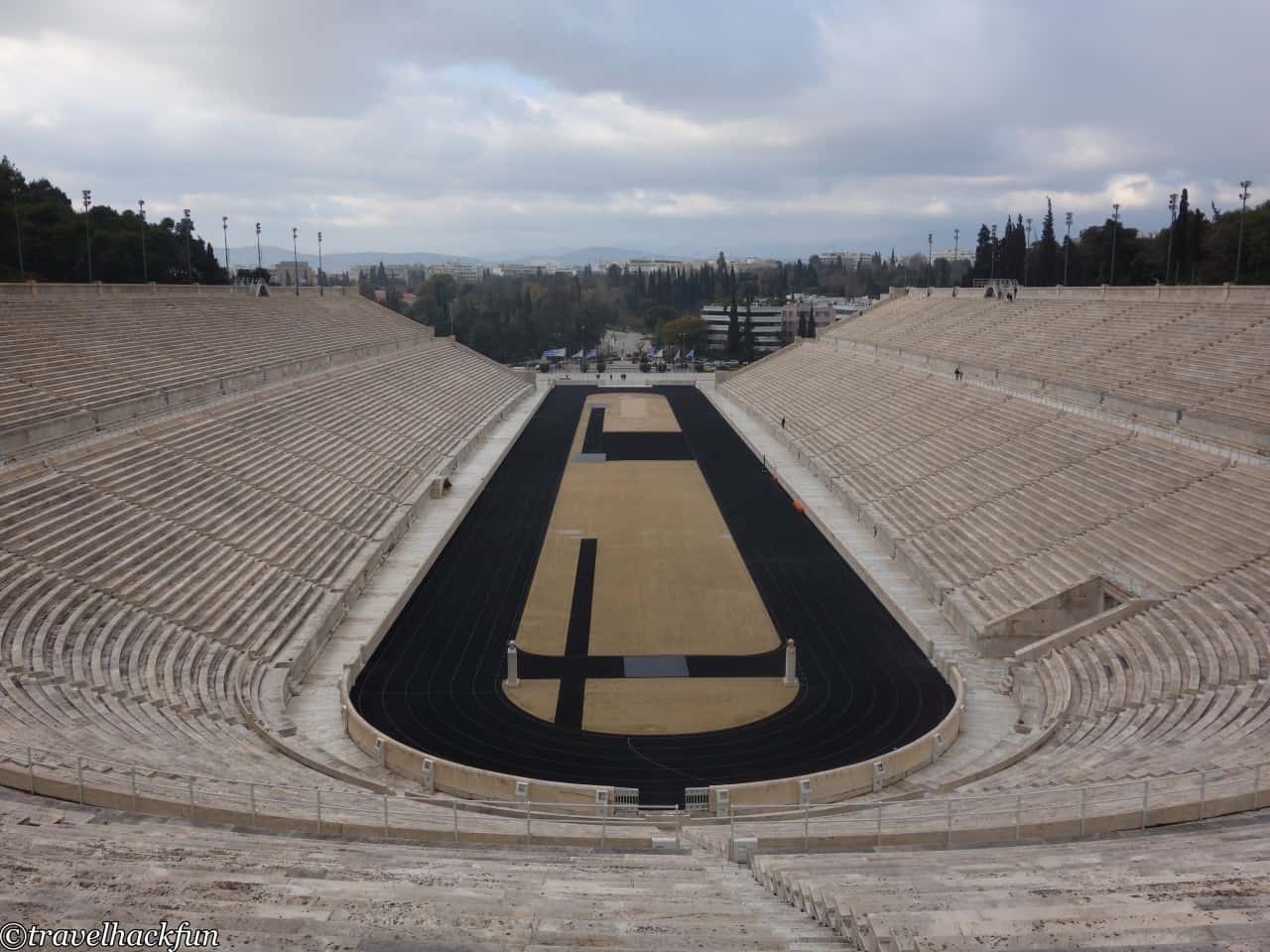
All the seats in the stadium are made of marble. When you enter from the right side of the stadium, the slightly elevated seats on the left in the photo were originally reserved for the king and queen. Later, these two seats were moved to the center of the venue (as shown in the right picture) for better visibility.
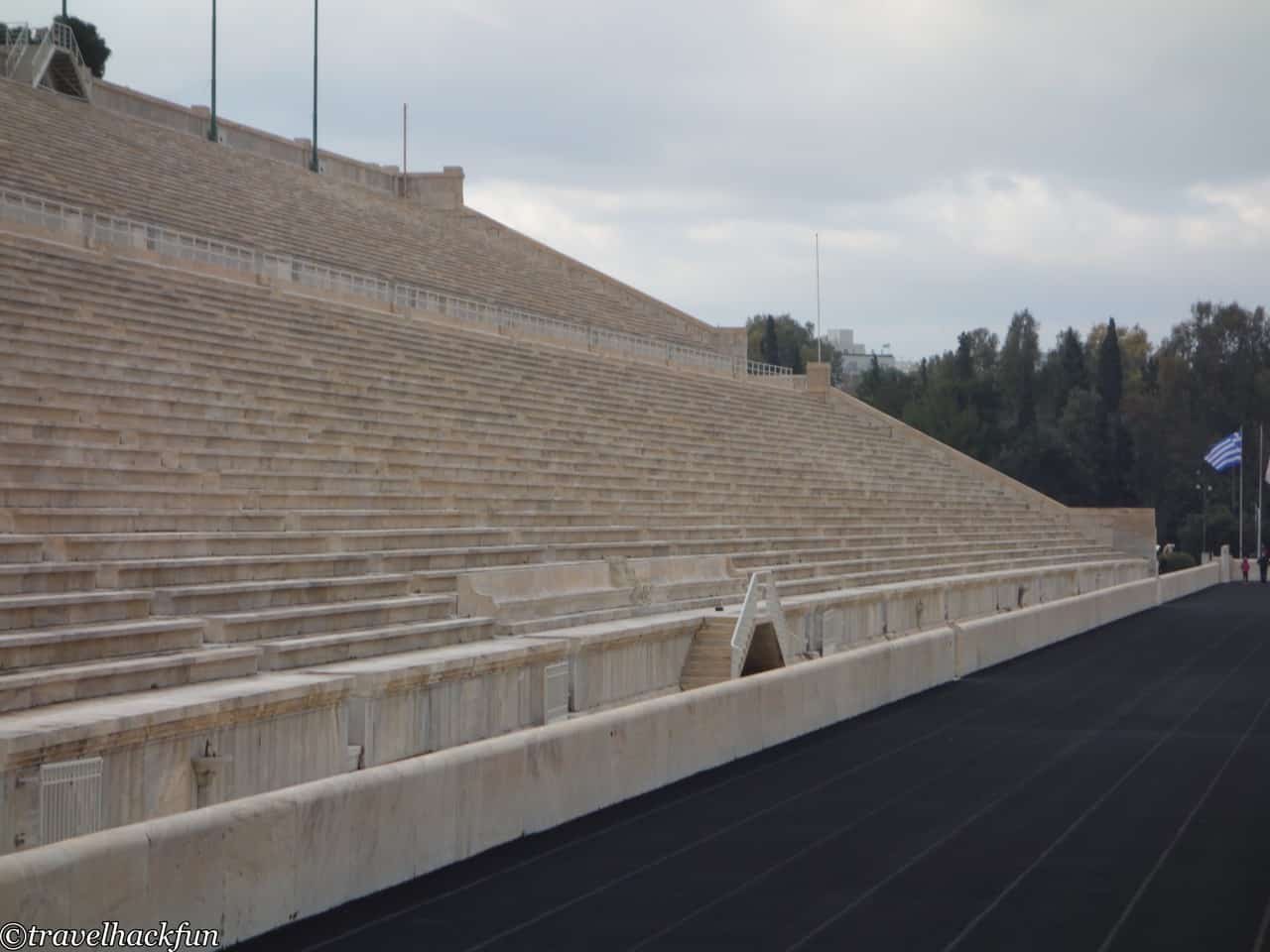

During the competitions, athletes entered through the entrance used by the athletes' lounge. Upon entering, there is a long corridor with marble walls. The interior of the lounge has now been converted into an exhibition space.
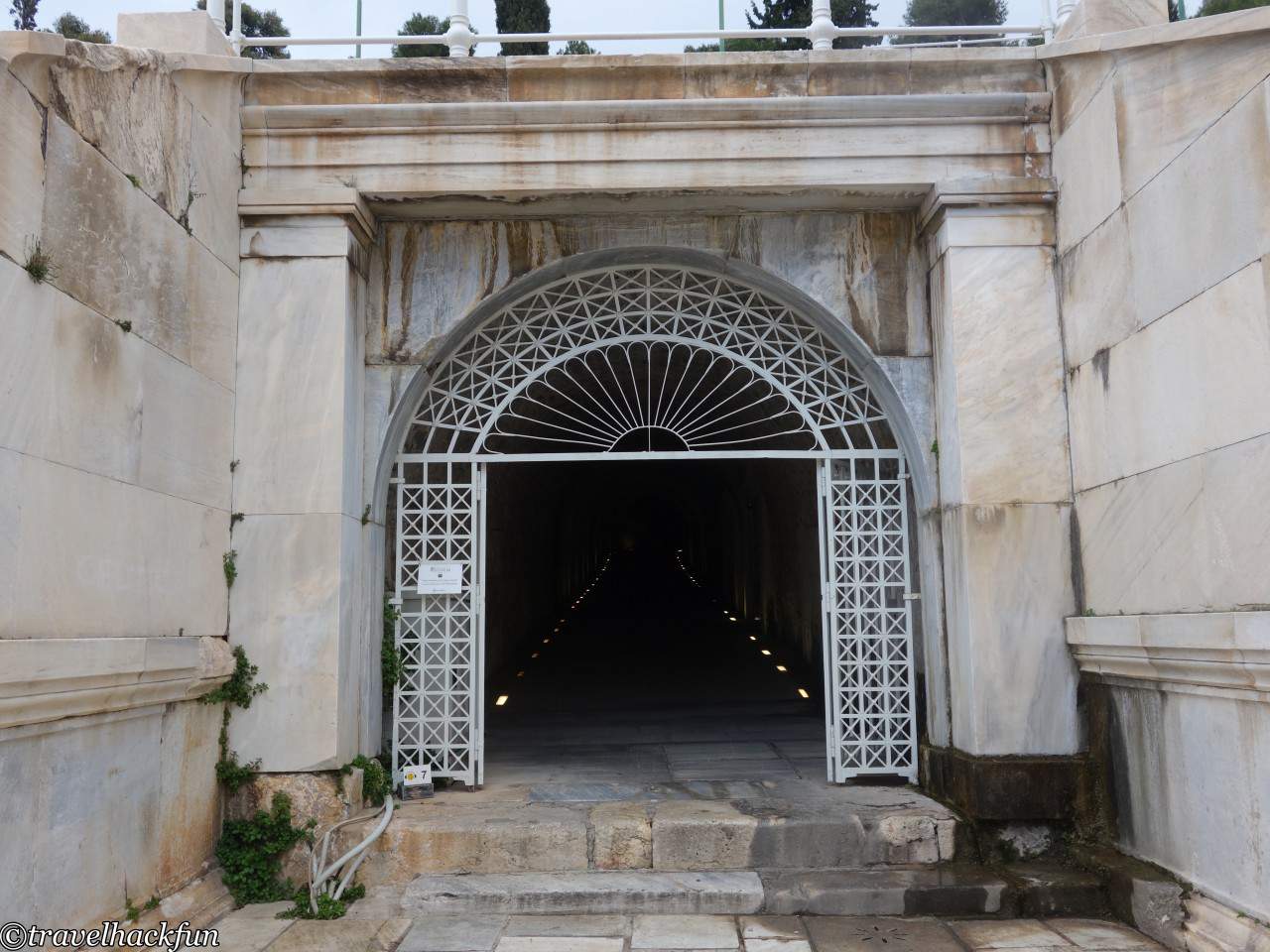
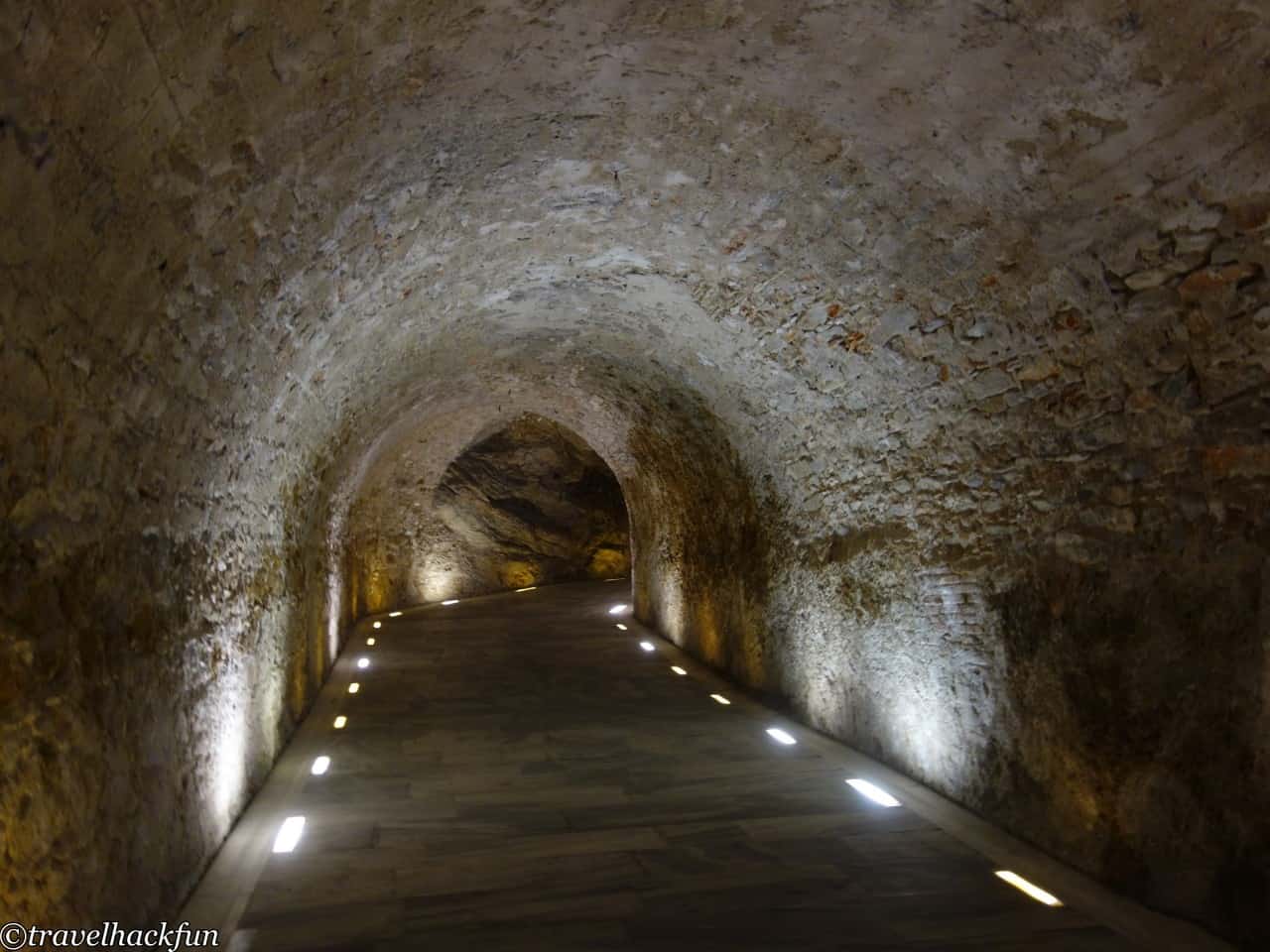
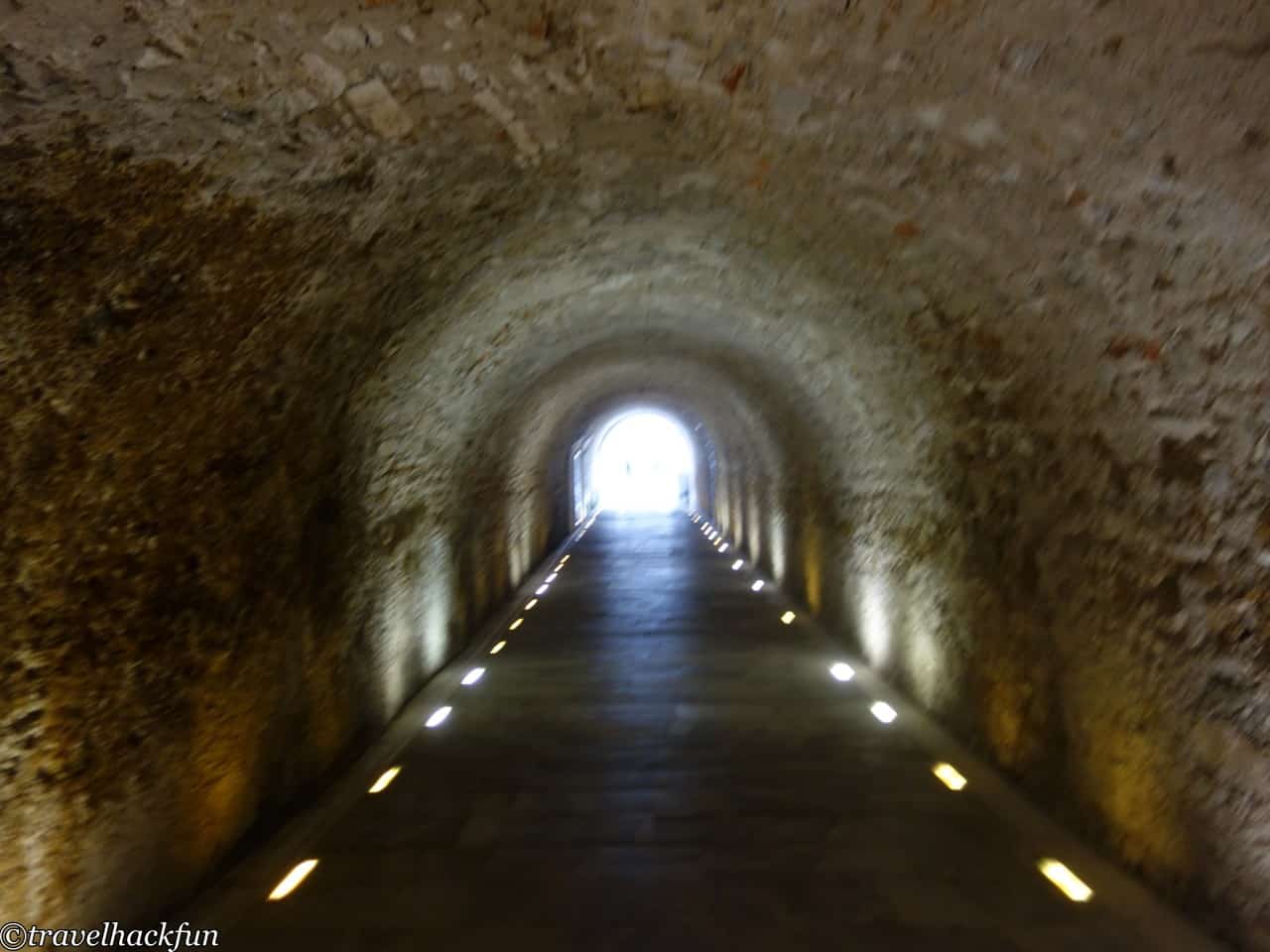
If you're interested, you can climb up to the podium and take photos, experiencing a taste of what it's like to be an Olympic gold medalist!
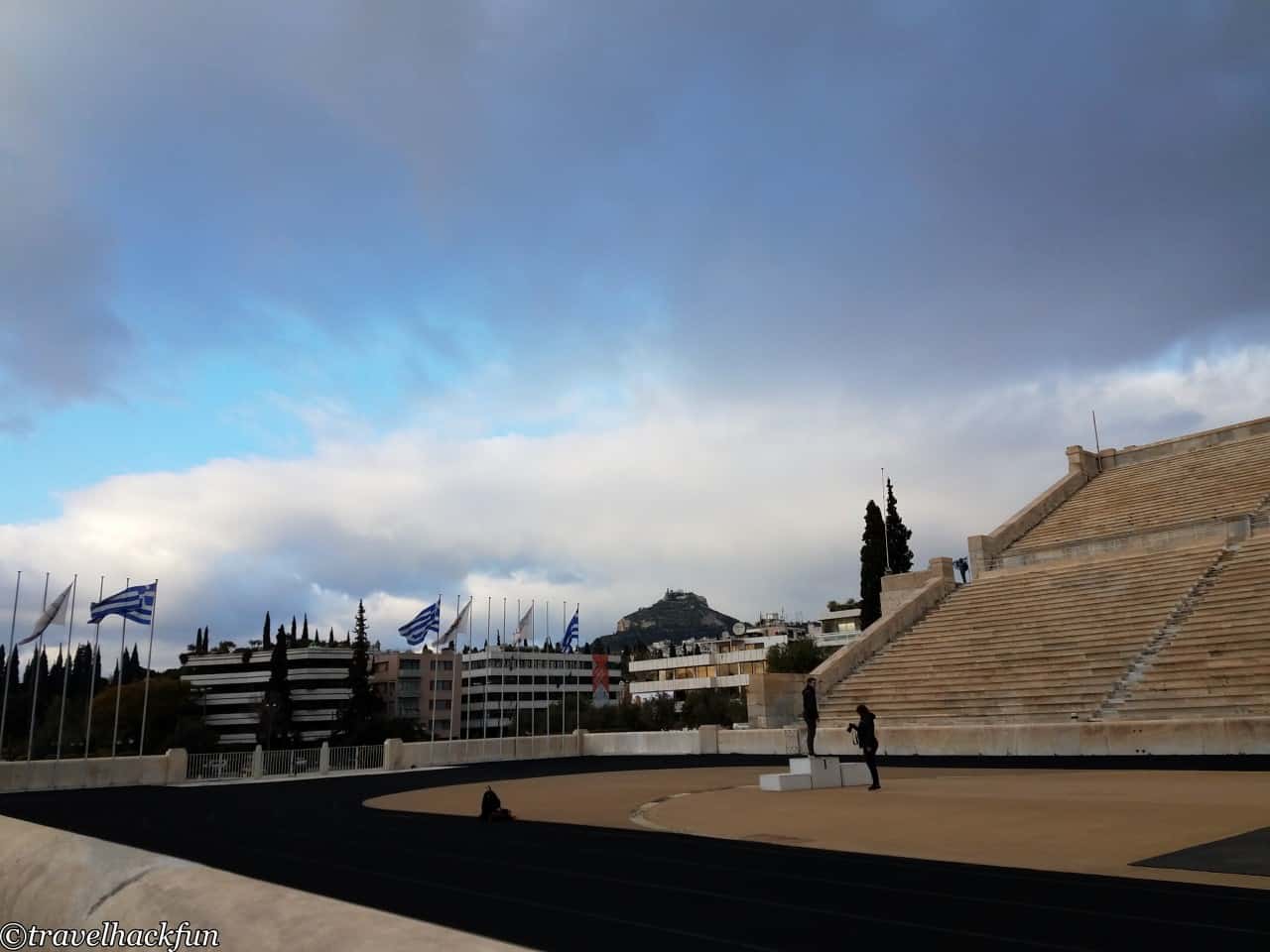
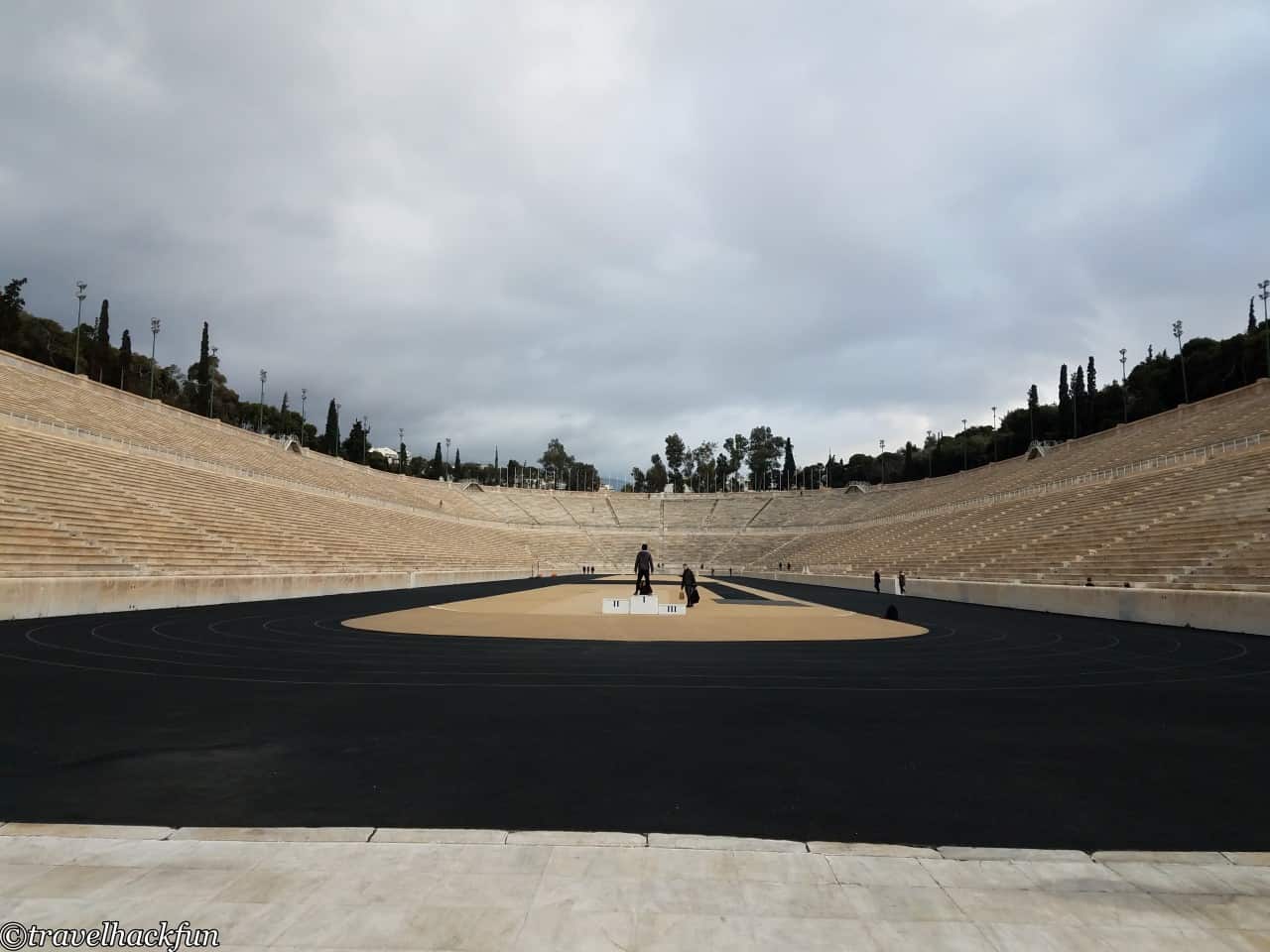
Athens | Cuisine
Coming to Greece, you'll definitely want to try the local specialties, right? Athens is a big city with a plethora of delicious Athenian cuisines. I've personally tried and collected a list of my favorite restaurants, which I share with everyone in this article.
Further reading
- More GreeceRelated Posts
Thank you for visiting our website.
All the content on this site is original and shared with the purpose of providing valuable information. We sustain the operation of this site through a small amount of advertising and sponsored links. If you click on links to third-party merchants on our site and make purchases, we may receive a portion of the sales as a commission. If you click on links to third-party merchants on our site and make purchases, we may receive a portion of the sales as a commission.
Find more posts on a map Here.
My recommended resources for hotel bookings.
Recommended travel credit card for US-based travelers
Travel with just a backpack!
Buy me a coffee and support my contents!
If you are interested in quoting this article or using any part of its content and images on your website or publication, please contact us via email to request permission.